
MegaThreats: Ten Dangerous Trends That Imperil Our Future, and How to Survive Them
by
Nouriel Roubini
Published 17 Oct 2022
The weaponization of the US dollar—and, after the Russian war in Ukraine, other major currencies in countries allied with the United States—via the increased use of trade and financial sanctions risks undermining the role of the US dollar as a major global reserve currency and propels an inflationary disorderly fall in its value. In the 1970s, that inflationary shock was triggered by the end of the gold-exchange standard. History will remember the trade and financial sanctions imposed by the United States and its allies against Russia—starting with the effective freezing of most of its foreign reserves—as the trigger for Russia, China, and other rivals of the West to dump the US dollar as the major global reserve currency and the creation of an alternative to it that didn’t depend on dollar accounting, dollar payments, dollar funding, and dollar store of value accumulation.
…
A stable currency—in the last century the US dollar—is the anchor of that international monetary and financial system, where transactions in goods, service, capital, labor, technology, and data require a stable and accepted global reserve currency to grease international trade and globalization. That’s the theory, at least. In practice, decades of financial experimentation and innovation have created a very different reality. Unconventional central bank goals and policies spurred by the Global Financial Crisis and the COVID-19 pandemic have flooded advanced economies with unprecedented sums of liquidity. Swift and dramatic action averted recessions, but at what long-run cost? And now financial warfare risks undermining even the global reserve currency role of the US dollar, the anchor of international monetary and financial stability.
…
History will remember the trade and financial sanctions imposed by the United States and its allies against Russia—starting with the effective freezing of most of its foreign reserves—as the trigger for Russia, China, and other rivals of the West to dump the US dollar as the major global reserve currency and the creation of an alternative to it that didn’t depend on dollar accounting, dollar payments, dollar funding, and dollar store of value accumulation. Financial wars led by geopolitical shocks and changes in geopolitical power have for centuries led to the decline of some currencies as the global reserve currency and the rise of other ones. The decline of the US dollar and its ensuing depreciation will be highly inflationary and stagflationary as most commodities are priced in dollars, and a fall in the value of the dollar increases the dollar price of such commodities. Moreover, trade and financial sanctions triggered by geopolitical events massively disrupt—as they did in 2022—global supply chains that rely on dollar financing and payments and the smooth operation of global financial markets, starting with the functioning of SWIFT (the Society for Worldwide Interbank Financial Telecommunication) for international trade and financial transactions.
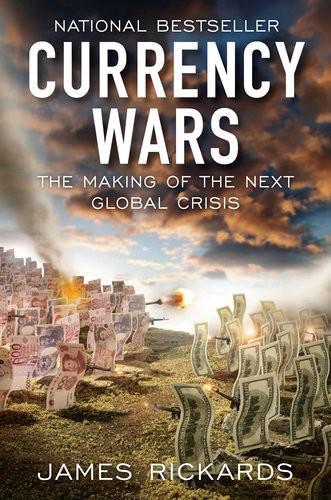
Currency Wars: The Making of the Next Gobal Crisis
by
James Rickards
Published 10 Nov 2011
Consideration of such military doctrine suggests that the future of geopolitics might not be the benign multilateral ethos of Davos Man but a rather more dark and dystopian world of resource scarcity, infrastructure collapse, mercantilism and default. China’s call to replace the U.S. dollar as the global reserve currency, routinely dismissed by bien-pensant global elites, might be taken more seriously if they were as familiar with Chinese financial warfare strategy as with Keynesian theory. China’s main link with the global financial system is the U.S. government bond market. China may be history’s oldest civilization and a rising superpower, but on Wall Street it is more likely to be viewed as the best customer in the world.
…
• November 19, 2008: Dow Jones reports that China is considering a target of four thousand metric tons for its official gold reserves to diversify against the risks of holding U.S. dollars. • February 9, 2009: The Financial Times reports that transactions in gold bullion have reached an all-time record. • March 18, 2009: Reuters reports that the United Nations supports calls for the abandonment of the U.S. dollar as the global reserve currency. • March 30, 2009: Agence France Presse reports that Russia and China are cooperating on the creation of a new global currency. • March 31, 2009: The Financial Times reports that China and Argentina have entered into a currency swap, which would allow Argentina to use Chinese yuan in lieu of dollars
…
• December 15, 2010: BusinessWeek reports that China and Russia have jointly called for the dollar’s role in world trade to be diminished and are launching a yuan-ruble trade currency settlement mechanism. This is just a sample of the many reports indicating that China, Russia, Brazil and others are seeking an alternative to the dollar as a global reserve currency. A role for commodities as the basis for a new currency is another frequent refrain. These are daunting trends and pose difficult choices. Upholding U.S. national security interests cannot be done without knowing the dynamics of global capital markets. U.S. dependence on traditional rivals to finance its debt constrains not only fiscal policy but U.S. national security and military options.
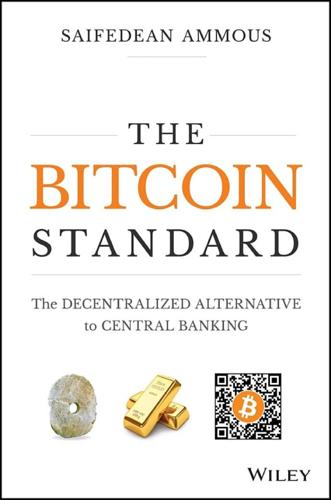
The Bitcoin Standard: The Decentralized Alternative to Central Banking
by
Saifedean Ammous
Published 23 Mar 2018
Britain's representative was none other than John Maynard Keynes, whose economic teachings were to be wrecked on the shores of reality in the decades following the war, while America's representative, Harry Dexter White, would later be uncovered as a Communist who was in contact with the Soviet regime for many years.11 In the battle for centrally planned global monetary orders, White was to emerge victorious with a plan that even made Keynes's look not entirely unhinged. The United States was to be the center of the global monetary system, with its dollars being used as a global reserve currency by other central banks, whose currencies would be convertible to dollars at fixed exchange rates, while the dollar itself would be convertible to gold at a fixed exchange rate. To facilitate this system, the United States would take gold from other countries' central banks. Whereas the American people were still prohibited from owning gold, the U.S. government promised to redeem dollars in gold to other countries' central banks at a fixed rate, opening what was known as the gold exchange window.
…
(See Table 7.9) Table 7 Bitcoin Supply and Growth Rate (Projected) Year 2018 2019 2020 2021 2022 2023 2024 2025 2026 Total BTC supply, millions 17.415 18.055 18.527 18.855 19.184 19.512 19.758 19.923 20.087 Annual growth rate, % 3.82 3.68 2.61 1.77 1.74 1.71 1.26 0.83 0.82 Figure 15 extrapolates the growth rate of the main global reserve currencies' broad money supply and gold over the past 25 years into the next 25 years, and increases the supply of bitcoins by the programmed growth rates. By these calculations, the bitcoin supply will increase by 27% in the coming 25 years, whereas the supply for gold will increase by 52%, the Japanese yen by 64%, the Swiss franc by 169%, the U.S. dollar by 272%, the euro by 286%, and the British pound by 429%.
…
To put it differently, Bitcoin is the cheapest way to buy the future, because Bitcoin is the only medium guaranteed to not be debased, no matter how much its value rises. (See Figure 21.3) In 2018, with Bitcoin only nine years old, it has already been adopted by millions4 worldwide and its current supply growth rate compares with that of the global reserve currencies. In terms of the stock‐to‐flow ratio discussed in Chapter 1, the existing stockpiles of Bitcoin in 2017 were around 25 times larger than the new coins produced in 2017. This is still less than half of the ratio for gold, but around the year 2022, Bitcoin's stock‐to‐flow ratio will overtake that of gold, and by 2025, it will be around double that of gold and continue to increase quickly into the future while that of gold stays roughly the same, given the dynamics of goldmining discussed in Chapter 3.

How to Speak Money: What the Money People Say--And What It Really Means
by
John Lanchester
Published 5 Oct 2014
reserve currency A currency held in large quantities by foreign governments and companies: at the moment, the global reserve currency is the US dollar. (In the first quarter of 2013, the dollar made up 62.2 percent of foreign exchange reserves, the euro 23.7 percent). That means in effect that the dollar is the earth’s currency: for instance, almost all commodity transactions are priced in dollars, including the most important one of all, oil. Being able to print as much of the global reserve currency as it wants is a huge economic advantage for the USA. resource curse A bitter thing. It refers to the tragic fact that the discovery of natural resources in a poor or developing country often turns into a disaster.
…
paradis fiscal The wonderful French term for tax haven—I love the idea that a tax-free location is a form of paradise, in which people spend all their time cavorting on yachts. petrodollar Money made by selling oil; these transactions are denominated in US dollars because the USA made a deal with Saudi Arabia, after the collapse of the Bretton Woods agreement in 1971, as a way of maintaining demand for the US dollar as the de facto global reserve currency. positional goods Things whose value is determined not by how useful they are in themselves but by the fact that other people can’t have them. The term was coined by Fred Hirsch in his 1976 book Social Limits to Growth. Positional goods are tools for signaling status, and the fact that the owner of the positional good is doing better than the people around her.
…
A huge number of financial instruments of all types are synthetic, and synthetic funds played a big role in the kinds of speculation that fueled the credit crunch, a process brilliantly described in Michael Lewis’s book The Big Short. T-bonds US Treasury debt, historically regarded as the safest in the world, because the United States is the word’s biggest economy, because the US dollar is the global reserve currency, and because the country can print its own money. Thanks to Republican actions in Congress, that status is now in question, and T-bonds lost their AAA super-secure status during arguments about the US government debt ceiling in 2011. The shorter-duration form of Treasury debt, which matures in one, three, or six months, is known as the T-bill, whereas T-notes mature in a range from two to ten years.
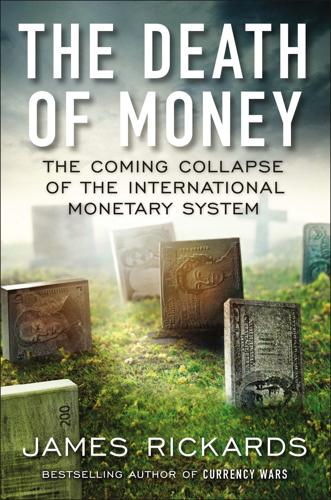
The Death of Money: The Coming Collapse of the International Monetary System
by
James Rickards
Published 7 Apr 2014
The resulting Saudi-Russian-Egyptian alliance removes another prop from under the dollar and creates a community of interest between Saudi Arabia and Russia, which had already announced its preference for an international monetary system free from dollar hegemony. For a GCC currency to become a true global reserve currency as opposed to a trade currency, further deepening of GCC financial markets and infrastructure would be needed. However, Saudi Arabia’s reevaluation of its security relations with the United States combined with the euro’s expansion and the efforts of the BRICS and the SCO to acquire gold and escape dollar dominance could presage a quite rapid diminution in the dollar’s international reserve-currency role
…
David Lipton’s is the single most powerful voice, more powerful than Christine Lagarde’s, because the United States has a veto over all important actions by the IMF. This doesn’t mean Lipton doesn’t play for the team; on many issues the United States and the IMF see eye to eye—including the dollar’s eventual replacement as the global reserve currency. Lipton’s veto power means that changes will take place at a tempo dictated by any quid pro quo that the United States demands. Lipton is one of numerous Robert Rubin protégés, who include Timothy Geithner, Jack Lew, Michael Froman, Larry Summers, and Gary Gensler. These men have for years controlled U.S. economic strategy in the international arena.
…
It was an emergency response to a dollar crisis that began in 1969 and continued in stages through 1981. During the Bretton Woods system’s early decades, from 1945 to 1965, international monetary experts worried about a so-called dollar shortage. At that time the dollar was the dominant global reserve currency, essential to international trade. Europe’s and Japan’s industrial bases had been devastated during the Second World War. Both Europe and Japan had human capital, but neither possessed the dollars or gold needed to pay for the machinery and raw materials that could revive their manufacturing.
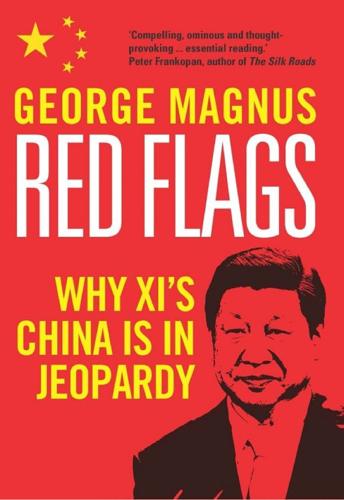
Red Flags: Why Xi's China Is in Jeopardy
by
George Magnus
Published 10 Sep 2018
The likelihood of China running current account deficits or allowing a meaningful liberalisation of capital account transactions any time soon is negligible. If anything, the surplus is likely to increase again as growth slows in the future. Consequently, the Renminbi is strongly handicapped when it comes to becoming a more serious global reserve currency. It is still possible for businesses and commercial organisations to use the Renminbi more for transactions in the future but that is quite different from becoming a more important global reserve currency. Second, for all the fanfare about the Renminbi’s inclusion in the Special Drawing Rights, it isn’t clear that this has much practical purpose other than to confer modest status. The SDR is not going to dethrone the US dollar, and there haven’t really been any significant initiatives to issue substantial quantities of SDR bonds or enhance its global usage.
…
Ultimately, China will have to inflate or deflate its way out of debt, but both options raise penetrating questions about its capacity to absorb both the economic and social consequences. Chapter 5 reviews the Renminbi trap, asking whether China can keep its currency stable in the wake of the debt problem. It also considers the structural shortcomings that will prevent the Renminbi becoming a truly global reserve currency. Chapter 6 considers the demographic trap in the fastest ageing country on earth. Ageing is occurring substantially faster than it has done in the West, and at lower levels of income per head, giving rise to the question of whether China will get old before it gets rich. Chapter 7 focuses on the middle-income trap, a condition which is primarily about the quality and effectiveness of governance and institutions.
…
The existence of capital controls buys China time, but not in perpetuity. In any event, because a significant liberalisation of outward capital movements is unlikely, and an external balance of payments surplus will persist for the time being, the often propagated belief that the Renminbi will become a major international or even significant global reserve currency is another example of the triumph of rhetoric over reality. Over the next twenty years and beyond, Xi’s China must find its own coping mechanisms to deal with a rapidly ageing population and declining labour force. These will play out in a quarter of the time that it took in most advanced economies, and at lower levels of income and wealth per head of population.
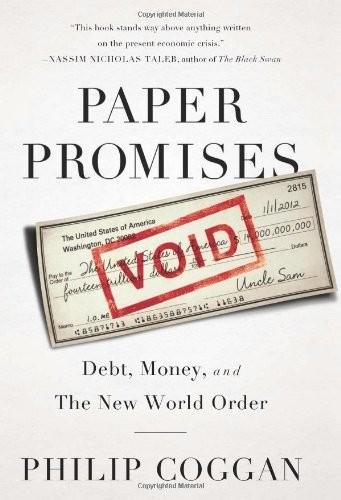
Paper Promises
by
Philip Coggan
Published 1 Dec 2011
The European crisis has shown that government bonds are not the risk-free asset that they had been assumed to be. OPTIONS FOR CHANGE So how might the system change? Much of the discussion concerns whether the US dollar will be replaced as the global reserve currency by the Chinese renminbi, or whether it will simply be one of a range of reserve currencies including the euro, renminbi and yen. The global reserve currency is the currency that forms the biggest proportion of the holdings of central banks. More broadly, however, it is also the one most likely to be accepted by merchants in other countries; if you are a tourist in Africa, you will be better off trying to buy goods with dollars than pounds or yen.
…
But convergence was also a sign that, when push came to shove, the markets did not believe the no-bailout clause. They thought governments would have to rescue their neighbours in the end. A lack of fiscal discipline was thus implied from the start. The initial performance of the euro on the currency markets did not inspire that much confidence either. Far from challenging the dollar as the new global reserve currency, the euro steadily lost value, dropping from around $1.18 as an initial value in 1999 to be worth just 82 cents in October 2000. But those who thought the euro was doomed to early failure were proved wrong. The currency rallied from that low, established itself as a fixture in international trading and as a currency for debt issuance.
…
China, the largest creditor of the world’s sole superpower, has every right to demand the United States address its structural debt problems and ensure the safety of China’s dollar assets. International supervision over the issue of US dollars should be introduced and a new, stable and secured global reserve currency may also be an option to avert a catastrophe caused by any single country.’ Despite the rhetoric, an outright Chinese abandonment of the dollar is out of the question. They already own so much in the way of US government debt that any indication of their intention to sell would cause a plunge in bond prices.
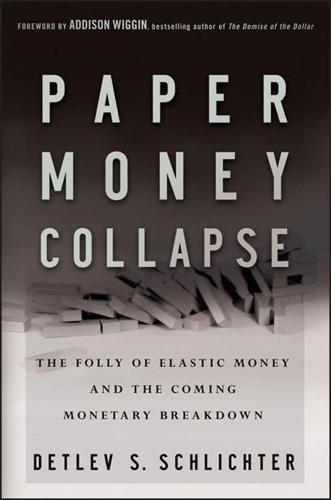
Paper Money Collapse: The Folly of Elastic Money and the Coming Monetary Breakdown
by
Detlev S. Schlichter
Published 21 Sep 2011
In 1933 President Roosevelt took the United States off the gold standard domestically. A tenuous connection to gold was sustained for a few decades after World War II, but in 1971 President Nixon took the dollar off gold internationally, too. Most other currencies had already severed direct links to gold and had only maintained an indirect one through the dollar as the global reserve currency. Since 1971, the entire world has thus been on a paper money standard for the first time in history. Money can now be created out of nothing, at no cost and without limit. When money was ultimately still gold, money-induced business cycles used to be fairly short, although still painful.
…
It is this internationally coordinated paper money production that explains all the phenomena that the savings glut theorists concern themselves with: the large United States current account deficit and the corresponding Asian surpluses; the concurrence of low savings and high levels of consumption with extensive investment in real estate in the United States, coupled with relatively low levels of official consumer goods inflation; and simultaneously, on the part of China, the extraordinary accumulation of foreign currency reserves and of Treasury securities holdings, and the explosion in domestic credit and in domestic investment activity. Whether this process was the outcome of the deliberate design of U.S. policy makers is immaterial. It may simply be that the dollar’s status as a global reserve currency and the importance of the U.S. goods market for the export sectors of other countries lead to policies that furthered a de facto globally coordinated money and credit boom. Summary In the context of the stylized history of state-sponsored fractional-reserve banking just described, the pinnacle of paper money production has now been reached.
…
See also money, paper money Enron equilibrium, economic European Central Bank (ECB) evenly rotating economy F Fannie Mae Federal Reserve establishment of fiat money fiduciary model Fisher, Irving foreign exchange market Foster, William Trufant fractional-reserve banking as Ponzi scheme controls of misconceptions about stability of state and understanding franc France, paper money and Freddie Mac Friedman, Milton functions of money G GDP. See gross domestic product Geldwertstabilisierung und Konjunkterpolitik The General Theory of Employment, Interest, and Money Germany, paper money and global foreign exchange market global reserve currency global state fiat money standard gold gold standard Nixon and resurrecting Roosevelt and goldsmiths Goldtheorie und Konjunkturtheorie goods production, money production versus government debt, monetization of government, funding Great Depression greenbacks Gresham’s law gross domestic product (GDP) effect of money injections on H Harrison, Henry Hayek, Fredrich August von hyperinflation I IMF.
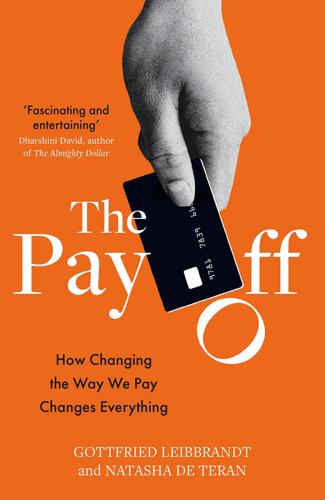
The Pay Off: How Changing the Way We Pay Changes Everything
by
Gottfried Leibbrandt
and
Natasha de Teran
Published 14 Jul 2021
More importantly, perhaps, the US economy is big, strong and resilient; it still has strong institutions at home and it has hard power abroad: the USA spends as much on defence as all other countries combined. Liquidity is also key. The USA has by far the biggest and most established domestic securities market, so there are plenty of liquid assets in which to keep your surplus dollars if you don’t want to leave them with banks.2 With the status of global reserve currency comes ‘exorbitant privilege’: the USA is the only country that can borrow almost limitless amounts in its own currency, which effectively shields it from devaluations and speculators. It can also print money to repay its creditors, something no other country can do at the pace and in the volumes it does.
…
Eggers) 177 Cirrus/Maestro 58 Citibank 56, 64, 133, 158, 220–1, 222, 248, 260 Clearing House Interbank Payments System (CHIPS) 240 clearing systems 117–19, 122, 239–40 Clearpay 175 Clifford, Clark 264 Clinton, Hillary 267 closed vs open payment systems 220–6 cloud computing 270 ClubMed 170 ‘code as law’ 195–6 Collison, Patrick and John 163, 165 Committee on Payments and Market Infrastructure (CPMI) 120–1 commodity money 8 Competition and Consumer Commission, Australian 224 Competition and Markets Authority, UK 180 competition authorities 223–4, 225–6 compound interest 90 ‘Confirmation of Payee’ systems 66 Connally, John 248 Consumer Reports 89 contactless payments 11, 173 conventions, payment 15, 17–19, 121–2, 215–16, 230 Corporate Transaction Banking 95 correspondent banking 138–42, 143, 144–5, 146–8, 223, 248, 267–8 Cotten, Gerald 200 counterfeiting and piracy 108, 112, 258 Covid-19 global pandemic 6, 8, 34, 37, 111, 134, 151, 159, 224, 245 credit cards business payments 95 cardboard 40, 41, 46–7, 108 debt 45, 100, 101 fraud 46, 51, 108–10 ‘honour all cards’ rule 56–7 interchange fees 42–4, 100 interest 90, 94, 173 introduction of 19, 39–44, 45–6, 70 online payments 50–1 overspending 173 paying to pay 101 real-time authorisation 47–8, 143–4 Union Pay, China 59 use in Europe 58, 101 see also Mastercard; Visa credit checks 175 credit default swaps 132 credit derivatives 131–3 Credit Suisse 65 Crelan bank 111 crime rates 33, 67 critical mass and payment systems 69–70, 79 cross-border payments 93, 133 card networks 143–4 clearing 240 correspondent banking 138–42, 143, 144–5, 146–8 debit cards 58–9 domestic instant payment systems 144 fees 137, 238–9 G20 agenda 148–9 global payments innovation (gpi) 147–8 Hawala system 142–3 interest made by banks 145–6 Letters of Credit 149–51 money remitters 144, 146 regulations 144, 145, 148, 239 TransferWise 146–7 Crossan, Doug 172 cryptocurrencies 16, 37, 63, 84, 187–209, 252, 269, 270 see also Central Bank Digital Currencies CryptoHQ 187 Cuba 149–50, 211 Cunliffe, John 11 currency controls 144 Currency Education Program (CEP), US 25 current account bank charges 91–2, 100–1 customer-loyalty programmes 219–20 CVV and CVV2 (Card Verification Value) codes 109, 171 cybercrime 107–8, 110–14, 232–3, 270 D Danske Bank 256–7 dark net 199 data privacy regulations 179, 233–4 dating-app fraud 111–12 de-risking 267–8 debit cards 19, 49, 50, 56–9, 91, 98 debts 8–10, 13–14, 45, 170, 173–4 Decentralized Autonomous Organization (DAO) 196 Deliveroo 82–3 Deloitte 264 Denmark 172, 256, 257 derivatives market 131–3, 208 Deutsche Bank 64, 133, 166, 260 devaluation 203 DG Comp 224, 225–6 Diem/Libra 63 digital wallets 224 Dimon, Jamie 206 Diners Club 40 direct debits 67, 119 disgorgement 198 distributed computing platform 194–6 Dodd-Frank legislation 98 dollar bills, circulation overseas 24–5, 213 dollars, global power of US 246–54 domestic securities market, US 247 Dorsey, Jack 155 drugs economy 27, 255, 258, 263 Dubai First Royal Mastercard 52 Durbin Amendment 57, 98 Dutch Data Protection Authority 234 Dutch Golden Age 5 Dutch parliament 266 Dutch resistance 7–8 E EBA Clearing 239–40 eBanking 36, 181 eBay 19, 51, 52, 70, 161, 163, 165 The Economist 55, 184 email fraud 110–11 embassies, diplomatic 266–7 embedded payments 169 E.On 119 Epic Games 225 Eriksson, Björn 35 errors, payment 64–6 Escobar, Pablo 255 escrow account systems 52 Estonia, Danske Bank 256–7 Ethereum/Ether 194–6, 198–9 euro E500 bills 24, 25, 28 see also Europe; European Central Bank; European Commission; European Union; Eurozone Europaisch-Iranische Handelsbank (EIH) 248 Europay 59, 90–1 Europe bank fines and financial crime 259–60 bank revenue 98, 99, 100–1, 102–3, 237–9, 241, 242 credit card use 58, 101 current accounts 100–1 Eastern 78, 213 financial literacy 172 instant payment systems 86 own payment network 59–60 paying to pay 98, 100–1 protection of personal data 179 regulatory authorities 224, 225–6, 231, 232, 237–42, 244 use of debit cards 58–9 European Banking Authority 256 European Banking Federation 239 European Central Bank 34, 86, 205–6, 233, 237, 240–1, 271 European Commission 60, 83, 85–6, 224, 225, 237, 238, 239, 240, 271 European Payments Council (EPC) 240 European Payments Initiative 60, 271 European Union (EU) 79, 148, 180–1, 237, 238–9, 243, 244–5, 265–6 Eurozone 102–3, 119, 183, 240 eWallets 36, 52, 216, 217 executive-whaling 110–11 F FACC AG 111 Facebook 63, 70, 110, 147, 158, 165, 179, 184, 201–2, 204–6, 209, 220, 222, 224, 269 facilitators, payment 162 Fantástico 234 far-right groups 4 Faster Payments Service (FPS) 82, 83, 84, 86 FBI (Federal Bureau of Investigation) 113 federal debt 9 Federal Reserve Bank 12, 36, 37, 113–14, 131, 232, 259 Fedwire 126–7 Financial Action Task Force (FATF) 262 Financial Conduct Authority, UK 37–8 financial crime 255–64 see also counterfeiting; fraud; money laundering; robbery financial literacy 172 Financial Stability Board (FSB) 135, 268, 269 Financial Times 103, 128, 129, 166–7 FinCEN 253, 255 FinTech 38, 147, 151, 155–9, 162–7, 240 lack of regulation 156, 235–6 First American Bankshare 264 foreign ATM fees 90 foreign exchange 56, 89, 90, 93, 131, 133, 140, 144, 205, 208, 246 Foreign Funds Control (FFC), US 249 foreign reserves, dollars and 247 Fortnite 225 four-corner payment model 41–2, 174, 220 France 63, 67, 119, 243, 245, 259, 260 Frankfurt Stock Exchange 166 fraud bank 261–5 card payment 46, 51, 52, 108–9 dating-app 111 cryptocurrency 199–200 detection services 56, 162 emails 110–11 and frictionless payments 170, 171–2 social media 110 free-banking era, US 208 free speech 184 Freis, Jim 167 French foreign ministry 234 frictionless payments 170–5 Friedlein, Joe 127 G G20 148–9 geographic payment preferences 67–8, 72 George, Edward 126 Germany 28, 67, 78–9, 111, 123, 158, 166–7, 183, 243, 245, 247, 248–9 Giannini, A. P. 45 gift vouchers 53 global financial crisis (2008) 131–2 global payments cost, annual 89 global payments innovation (gpi) 147–8 global reserve currency 246–7, 252, 254 Global Transaction Banking 96 gold 12, 29 gold standard 204, 248 Google 82–3, 111, 147, 158, 169, 182, 184, 220, 222, 224, 225, 234, 271 Google Pay 184–5, 271 government bonds, dollar-based 247 Graeber, David 8–9 Great Recoinage (1816) 203 Great Western Railway 68 Greenspan, Alan 128 ‘grey money’ 29–30 Gross Domestic Profit (GDP) 25, 27, 29, 32, 33, 59, 74, 77, 89, 100, 101, 120, 121, 206, 257 Guardian 35 Guevara, Che 211 guinea coins 203 H Hamilton, Alexander 9 Harfield, Henry 149 Hawala 142–3, 216 hawaladars 143 Heineken, Freddy 27–8 Herstatt Bank 123, 125 Hin Leong 151 Hinrikus, Taavet 146 HMRC (Her Majesty’s Revenue & Customs) 150 Hock, Dee 47 Holland 7–8, 184 ‘honour all cards’ rules 56–7 housing market 127–8 HSBC (Hongkong and Shanghai Banking Corporation) 133, 252, 260, 270 Huawei 251–2 Hurricane Maria, Puerto Rico 36–7 hyper-inflation 203 I Iberpay 81 illegal activities 25–6, 27–8, 29–30, 33, 46, 164, 167, 199–200, 212–13, 255–64 see also counterfeiting and piracy; cybercrime; fraud; money laundering; robbery image scanning, cheque 67 immigrants and refugees 265, 266 in-app purchases 172, 224–5 India 38, 253–4 cash purge 29–30 instant payment system 81, 82–5, 86, 182, 271 Punjab National Bank fraud 115–16 Tez payment app 185 InfoWars 4 ING 179, 260 initial coin offerings (ICOs) 187, 193, 196 The Innovator’s Dilemma (C.
…
Russell) 4 printing money 34 private keys see public-private key encryption Promontory 257 public-private key encryption 16, 189–91, 195, 200, 214, 215 Puerto Rico 36–7 Punjab National Bank (PNB) 115 Q QR codes 75, 76, 84 QuadrigaCX 200 Qualcomm 226, 271 R railway design 68, 71 Ransomware 195 Rato, Rodrigo 262 Reagan, Ronald 65 real-time gross settlement (RTGS) 126–30, 240 Red Cross 150 red envelope tradition, Chinese 76 Red Packet digital gift 77 Reed, John 220 refugees and immigrants 265, 266 regulation authorities, financial 135, 156, 179, 184, 198, 208, 212, 217, 223–4, 225–6, 229, 230–6, 237–42, 265, 267, 268, 271–2, 273 Ren Zhengfei 251 Reserve Bank of India 86 retail payment flows 120, 122 retail payment instruments 18 retailer lawsuit against card networks, US 56–7 revaluation of currency 30 Revolut 89, 158, 159 Rickards, Jim 31 Ripple/XRP 197–8, 199 risk, payment 15–16, 19, 108, 112–16, 121, 122, 214 robbery, bank 107–8, 112–16 Rogen, Seth 112 Romania 172 Royal Bank of Canada (RBC) 150 Royal Bank of Scotland (RBS) 131 Russell, Bertrand 4 Russia 25, 89, 243, 253–4 Russian Central Bank 256–7 S Safaricom 74 Safeway 56 Sampo Bank 256, 257 sanctions 144, 213, 243, 244–5, 246, 249, 250–1, 252, 253, 254, 258, 266, 270 Sandinista National Liberation Front 65 Sands, Peter 28 Saxo 159 Scandinavia 67 Schneider, Ralph 40 Schuijff, Arnout 165 screen-scrapers 181–2 scrip 170, 219–20 Sears 56 Second World War 7–8, 12, 249 secondary sanctions, US 250, 253 Securities and Exchange Commission, US 198 securities market 132, 140, 247 semi-open payment systems 222 settlement risk 15–16 shopping channels 50 Shor, Ilan 261 shorting 188 Siemiatkowski, Sebastian 174 Signature cards 49–50, 57, 58, 69 Simmons, Matty 40 Simple 159 Single Euro Payments Area (SEPA) 60, 240 Single Euro Payments Regulation 98 Singles Day, China 76 size and methods, payment 120–1, 217, 272 small economies 5–6 smart contracts 194–6, 198–9 smuggling 27 Snowden, Edward 234 social media 110, 119, 179, 206 social media fraud 110 Sofort 180–1, 183 ‘soft’ credit checks 175 Sony Pictures 112 Soros, George 226 sort codes, bank 65–6 South Korea 112 sovereign gold coins 203 Soviet bloc countries, former 24–5, 257 Space Shuttle 71 Spain 81, 261–2 spear-phishing 110 Special Drawing Right (SDR), IMF’s 202 Specially Designated Nationals (SDNs) 250, 251, 252 spies, government 233–4 Spotify 202, 225 Spring Festival Gala, CCT’s 77 Square 155, 162–3, 164–5, 216, 269 Sri Lanka 113 stablecoins 196, 201 Standard Chartered 258–9, 260, 270 standing orders 82 Starling 158 Stephenson, George 68, 71 STET (Systèmes Technologiques d’Échange et de Traitement) 119 Stiftung Warentest 89 stimulus package payments, US 66 store of value, Libra as 206 store of value, money 202 Stripe 15, 162, 163–5, 216 sub-prime mortgages 132 Sun 119 Sunak, Rishi 35 Swartz, Lana 177 Sweden 32–3, 35–6, 58, 172 Swift network 102, 111, 113 114, 115, 140, 141–2, 147, 220, 222, 233–4 Swiss bank accounts 66 Switzerland 23, 67, 201, 260 Syria 266 T tabu 8 TARGET 86, 240–1 Target (US retailer) 109 TARGET2 241 TARGET2 Securities 241 targeted markets 179 tax evasion 27, 29, 258, 260 telegraphs 141 telex 141 Tencent 76, 77 Tenpay 73, 75, 76, 78–9, 85, 100, 161, 178, 216, 217, 220, 221, 222, 235, 270–1 terrorism 232–3, 250, 266 Tether (THT) 196–7, 199 Tez payment app 185 theft risk, payment gateways as 15–16, 108, 112–16, 121 three-corner model 174 Three Mobile 119 TIBER-EU 233 tokens – temporary digital identifiers 109, 189–90, 191, 195, 196, 205, 214 TOR (The Onion Router) 199 TransferWise 89, 146, 216, 241 Transport for London 11 travel shops 90 tribal societies, early 9 truck systems 219–20 Truman, Harry S. 249 Trump, Donald 115, 229, 243–5 tulip bulbs 6 Tumpel-Gugerell, Gertrude 241 Twitter 155 U Uber 82–3, 165, 169, 202 Ubiquity Networks 110–11 UBS 260 UFC-Que Choisir 89 unbanked people 6–7, 38, 212 underground/criminal economy 25, 27–8, 29–30, 199–200 see also financial crime; illegal activities; money-laundering ‘unicorn’ start-ups 146 Unified Payment Interface (UPI) 82–5, 182, 271 Union Pay 55, 59 unit of account, money as 202–4 United Kingdom cheques 117 credit card debt 101 decline of cash 32, 36 digital IDs 270 Faster Payments Service (FPS) 82, 83, 84, 86 GCHQ – National Cyber Security Centre 233 GCHQ – spies 234 HM Treasury 86 INSTEX transactions 245 JCPOA 243 United Kingdom (continued) neo-banks 158 Payment Systems Regulator 237 prepaid cards 37–8 Truck Act (1831) 220 United States of America $100 dollar bills 23, 24, 108 bank fines and financial crime 258–60, 270 checking accounts 91 CIA (Central Intelligence Agency) 65, 149, 264 Congress 57 credit card debt 45, 100 Currency Education Program (CEP) 25 Department of Homeland Security 232–3 Department of State 267 dollars as global reserve currency 246–7, 252 dollars circulating abroad 24–5, 30 domestic securities market 247 Fair Labor Standards Act (1938) 220 Federal Reserve 12, 36, 37, 113–14, 131, 232, 259 free banking era (1837–63) 208 international power of the dollar 246–54 JCPOA 243–4, 252, 254 National Security Agency (NSA) 114, 233, 234, 255 National Security Council (NSC) 64–5, 244, 264 Office of Foreign Assets Control (OFAC) 249–50, 252, 253, 255, 259 open banking 182 paying to pay 97, 101 regulation agencies 231–2 removal of access to WeChat app 270–1 sanctions 213, 243, 244–5, 246, 249, 250–1, 252, 253, 254, 258–9, 270 Securities and Exchange Commission 198 State Department 3–4 Treasury 9, 248, 249–50, 255, 260, 265 use of cheques/checks 63, 117 utility coins 193 V V-pay 58 van der Does, Pieter 165 van Hall, Walraven 7–8 Venezuela 213 Venmo 177 venture capital money 157 Verifone 48 Verizon 130–1 Vestager, Margrethe 224, 225–6 VHS vs Betamax 71, 221 Visa 3–4, 41, 42, 47, 49, 50, 53, 55, 56, 57–9, 90, 102, 161, 162, 174, 201–2, 204, 223, 269 Visa Europe 58–9 Visa Inc. 58–9 W Wal-Mart 56, 57 Watergate scandal 255 WeChat Pay app 270–1, 229 Weidmann, Jens 28 Western Union 144, 216 WhatsApp 184, 202 Which?
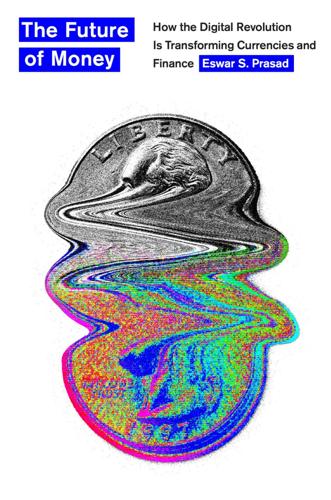
The Future of Money: How the Digital Revolution Is Transforming Currencies and Finance
by
Eswar S. Prasad
Published 27 Sep 2021
The euro accounts for a nearly similar share of international payments, but once one takes out the share of payments that take place within the eurozone (which are denominated in euros, of course), its share of global payments (and trade invoicing) is significantly smaller than that of the dollar. The dollar is also the principal global reserve currency—approximately 60 percent of foreign exchange reserves held by the world’s central banks are held in dollar-denominated assets. Moreover, when firms or governments in developing countries borrow in foreign currencies, usually because foreign investors lack confidence in the value of those countries’ domestic currencies, they tend to do so in dollars.
…
To the chagrin of policymakers around the world, the Fed takes account mainly of domestic factors when making its policy decisions. It does pay heed to foreign developments but only insofar as they affect the US economy. For the most part, it ignores the effects of its policies on other countries—as this is not part of its official mandate. The dollar’s status as the principal global reserve currency means that the United States is able to borrow money at low interest rates from the rest of the world to finance its current account deficits. In other words, cheap money from abroad finances the country’s abundant imports of foreign goods that exceed its exports. That the United States can persistently live beyond its means and suffer no consequences for such spendthrift behavior has irked foreign officials, who have long railed at the “exorbitant privilege” the dollar’s status bestows on the US economy.
…
However, the RMB is now hitting constraints that result from the structure of its domestic economy and will limit its progress as a reserve currency (i.e., a store of value). Moreover, given the nature of its political system, it is unlikely the RMB will attain the status of a safe haven currency. Thus, although it is likely to continue its ascent, the notion that the RMB will become a dominant global reserve currency that rivals the dollar is far-fetched. Even this cautious prognosis turned out to be too optimistic. The Renminbi Gains Ground, Then Stalls The renminbi made a dramatic move onto the global financial stage after 2010, when the Chinese government started opening up China’s capital account and promoting its currency through a variety of policy measures.
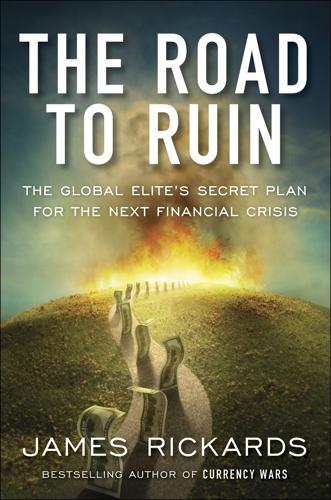
The Road to Ruin: The Global Elites' Secret Plan for the Next Financial Crisis
by
James Rickards
Published 15 Nov 2016
By September 30, 2016, SDR204.1 billion were outstanding, equal to about $285 billion at then-current exchange rates. One interesting property of the SDR is that it solves Triffin’s dilemma. This economic conundrum was posed by Belgian economist Robert Triffin in testimony to the U.S. Congress in 1960. Triffin observed that the issuer of a global reserve currency had to run persistent deficits to supply the world with sufficient reserves for normal trade. Yet a nation that runs deficits long enough goes broke. In this context, going broke means trading partners lose confidence in the stable value of the reserve currency and reject it in favor of alternatives.
…
A financial collapse is a supernova—a momentous event that can last for years, or, in a real supernova, millennia. This is not because the event is less dynamic, but because system scale is more vast. A currency collapse that moved in what seemed slow motion was the fall of sterling and the rise of the U.S. dollar as the dominant global reserve currency. Ratification of the Final Act of the Bretton Woods conference on December 27, 1945, is seen as a convenient date to mark the moment the dollar officially eclipsed sterling. This was based on the new world monetary order agreed at Bretton Woods in July 1944 that defined the special role of the dollar anchored to gold with other currencies tied to the dollar, and limited scope for devaluation under IMF supervision.
…
The fact that London remained a financial center, and sterling remained a reserve currency, had more to do with Britain’s captive market in the British Empire, and the sufferance of anglophile bankers at J. P. Morgan, than with intrinsic strength. Scholar Barry Eichengreen brilliantly laid out this transition and the seesaw struggle between the dollar and sterling for the global reserve currency crown in the interwar years in his book Golden Fetters. Sterling lost reserve status de facto in 1914, yet the world did not see the denouement until 1944. Thirty years is not a nanosecond. Still, sterling’s collapse was an unstoppable dynamic process. Insiders at J. P. Morgan knew the score; they handled gold on a daily basis and saw the global flows.
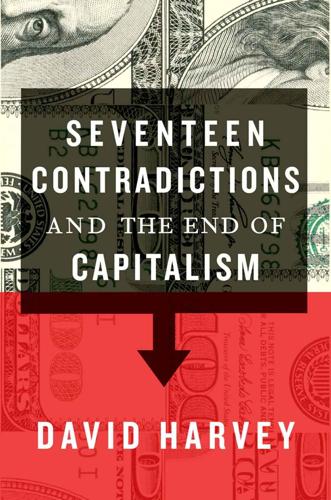
Seventeen Contradictions and the End of Capitalism
by
David Harvey
Published 3 Apr 2014
There are other currencies which might be used for global trade – pounds sterling (which used to be the global reserve currency), the euro and the yen and maybe in the future the Chinese yuan. But these have so far not threatened the position of the US dollar and occasional proposals to replace the dollar with a market-basket of currencies (of the sort that Keynes originally proposed at Bretton Woods in 1944) have so far been rebuffed by the USA. Considerable benefits accrue to the USA, after all, from its control over the global reserve currency. US imperial power has been exercised either directly or indirectly by dollar diplomacy.
…
283 Maddison, Angus 227 Maghreb 174 Malcolm X 291 Maldives 260 Malthus, Thomas 229–30, 232–3, 244, 246, 251 Manchester 149, 159 Manhattan Institute 143 Mansion House, London 201 manufacturing 104, 239 Mao Zedong 291 maquilas 129, 174 Marcuse, Herbert 204, 289 market cornering 53 market economy 198, 205, 276 marketisation 243 Marshall Plan 153 Martin, Randy 194 Marx, Karl 106, 118, 122, 142, 207, 211 and alienation 125, 126, 213 in the British Museum library 4 on capital 220 conception of wealth 214 on the credit system 239 and deskilling 119 on equal rights 64 and falling profits 107 and fetishism 4 on freedom 207, 208, 213 and greed 33 ‘industrial reserve army’ 79–80 and isolation of workers 125 labour theory of value 109 and monetary system reforms 36 monopoly power and competition 135 reality and appearance 4, 5 as a revolutionary humanist 221 and social reproduction 182 and socialist utopian literature 184 and technological innovation 103 and theorists of the political left 54 and the ‘totally developed individual’ 126–7 and world crises xiii; Capital 57, 79–80, 81, 82, 119, 129, 132, 269, 286, 291–2 The Economic and Philosophic Manuscripts of 1844 269, 286 Grundrisse 97, 212–13 Theories of Surplus Value 1 Marxism contradiction between productive forces and social relations 269 ‘death of Marxism’ xii; ecologically sensitive 263 and humanism 284, 286, 287 ‘profit squeeze’ theory of crisis formation 65 traditional Marxist conception of socialism/ communism 91 Marxists 65, 109 MasterCard Priceless 275 Mau Mau movement 291 Melbourne 141 merchants 67 and industrial capital 179 price-gouging customers 54 and producers 74–5 Mercosur 159 Mexican migrants 115, 175, 195–6 Mexico 123, 129, 174 Mexico City riots (1968) x microcredit 194, 198 microfinance 186, 194, 198, 211 Microsoft 131 Middle East 124, 230 Milanovic, Branko 170 military, the capacities and powers 4 dominance 110 and technology 93, 95 ‘military-industrial complex’ 157 mind-brain duality 70 mining 94, 113, 123, 148, 239, 257 MIT (Massachusetts Institute of Technology) 292 Mitchell, David: Cloud Atlas 264 Mitchell, Timothy 122 Modern Times (film) 103 Mondragon 180 monetarism xi monetary wealth and incomes, inequalities in (1920s) x 1071 monetisation 44, 55, 60, 61, 62, 115, 192–3, 198, 235, 243, 250, 253, 261, 262 money abandonment of metallic basis of global moneys 30, 37, 109 circulation of 15, 25, 30–31, 35 coinage 15, 27, 29, 30 commodification of 57 commodity moneys 27–31 creation of 30, 51, 173, 233, 238–9, 240 credit moneys 28, 30, 31, 152 cyber moneys 36, 109–10 electronic moneys 27, 29, 35, 36, 100 and exchange value 28, 35, 38 fiat 8, 27, 30, 40, 109, 233 gap between money and the value it represents 27 global monetary system 46–7 love of money as a possession 34 measures value 25, 28 a moneyless economy 36 oxidisation of 35 paper 15, 27, 29, 30, 31, 37, 40, 45 power of 25, 36, 59, 60, 62, 65–66, 131–6, 245, 266 quasi-money 35 relation between money and value 27, 35 represented as numbers 29–30 and social labour 25, 27, 31, 42, 55, 88, 243 and the state 45–6, 51, 173 storage of value 25, 26, 35 the US dollar 46–7 use value 28 money capital 28, 32, 59, 74, 142, 147, 158, 177, 178 money laundering 54, 109 ‘money of account’ 27–8, 30 monopolisation 53, 145 monopoly, monopolies 77 and competition 131–45, 218, 295 corporate 123 monetary system 45, 46, 48, 51 monopoly power 45, 46, 51, 93, 117, 120, 132, 133–4, 136, 137, 139, 141, 142–3 monopoly pricing 72, 132 natural 118, 132 of state over legitimate use of force and violence 42, 44, 45, 51, 88, 155, 173 see also prices, monopoly monopsony 131 Monsanto 123 Montreal Protocol 254, 259 ‘moral restraints’ 229, 233 mortgages 19, 21, 28, 32, 54, 67, 82, 239 multiculturalism 166 Mumbai 155, 159 Murdoch, Rupert xi Myrdal, Gunnar 150 N NAFTA 159 name branding 31, 139 nano-trading 243 Nation of Islam 291 national debt 45, 226, 227 National Health Service 115 National Labor Relations Board 120 National Security Administration 136 nationalisation 50 nationalism 7, 8, 44, 289 natural resources 58, 59, 123, 240, 241, 244, 246, 251 nature 56 alienation from 263 capital’s conception of 252 capital’s relation to 246–63 commodification of 59 domination of 247, 272 Heidegger on 59, 250 Polanyi on 58 power over 198 process-thing duality 73 and technology 92, 97, 99, 102 Nazis 151 neoclassical economists 109 neocolonialism 143, 201 neoliberal era 128 neoliberal ethic 277 neoliberalisation x, 48 neoliberalism xiii, 68, 72, 128, 134, 136, 176, 191, 234, 281 capitalism 266 consensus 23 counter-revolution 82, 129, 159, 165 political programme 199 politics 57 privatisation 235 remedies xi Nevada, housing in 77 ‘new economy’ (1990s) 144 New York City 141, 150 creativity 245 domestic labour in 196 income inequality 164 rental markets 22 social reproduction 195 Newton, Isaac 70 NGOs (non-governmental organisations) 189, 210, 284, 286, 287 Nike 31 Nkrumah, Kwame 291 ‘non-coincidence of interests’ 25 Nordic countries 165 North America deindustrialisation in 234 food grain exports 148 indigenous population and property rights 39 women in labour force 230 ‘not in my back yard’ politics 20 nuclear weapons 101 Nyere, Julius 291 O Obama, Barack 167 occupational safety and health 72 Occupy movement 280, 292 Ohlin Foundation 143 oil cartel 252 companies 77, 131 ‘Seven Sisters’ 131 embargo (1973) 124 ‘peak oil’ 251–2, 260 resources 123, 240, 257 oligarchy, oligarchs 34, 143, 165, 221, 223, 242, 245, 264, 286, 292 oligopoly 131, 136, 138 Olympic Games 237–8 oppositional movements 14, 162, 266–7 oppression 193, 266, 288, 297 Orwell, George 213 Nineteen Eighty-Four 202 overaccumulation 154 overheating 228 Owen, Robert 18, 184 Oxfam xi, 169–70 P Paine, Tom: Rights of Man 285 Paris 160 riots (1968) x patents 139, 245, 251 paternalism 165, 209 patriarchy 7 Paulson, Hank 47 pauperisation 104 Peabody, George 18 peasantry ix, 7, 107, 117, 174, 190, 193 revolts 202 pensions 134, 165, 230 rights 58, 67–8, 84, 134 people of colour: disposable populations 111 Pereire, Emile 239 pesticides 255, 258 pharmaceuticals 95, 121, 123, 136, 139 Philanthropic Colonialism 211 philanthropy 18, 128, 189, 190, 210–11, 245, 285 Philippines 115, 196 Picasso, Pablo 140–41, 187, 240 Pinochet, Augusto x Pittsburgh 150, 159, 258 planned obsolescence 74 plutocracy xi, xii, 91, 170, 173, 177, 180 Poland 152 Polanyi, Karl 56, 58, 60, 205–7, 210, 261 The Great Transformation 56–7 police 134 brutality 266 capacities and powers 43 powers xiii, 43, 52 repression 264, 280 surveillance and violence 264 violence 266, 280 police-state 203, 220 political economy xiv, 54, 58, 89, 97, 179–80, 182, 201, 206–9 liberal 204, 206, 209 political parties, incapable of mounting opposition to the power of capital xii political representation 183 pollutants 8, 246, 255 pollution 43, 57, 59, 60, 150, 250, 254, 255, 258 Pontecorvo, Gillo 288 Ponzi schemes 21, 53, 54, 243 population ageing 223, 230 disposable 108, 111, 231, 264 growth 107–8, 229, 230–31, 242, 246 Malthus’s principle 229–30 Portugal 161 post-structuralism xiii potlatch system 33 pounds sterling 46 poverty 229 anti-poverty organisations 286–7 and bourgeois reformism 167 and capital 176 chronic 286 eradication of 211 escape from 170 feminisation of 114 grants 107 and industrialisation 123 and population expansion 229 and unemployment 170, 176 US political movement denies assistance to the poor 292–3 and wealth 146, 168, 177, 218, 219, 243 world xi, 170 power accumulation of 33, 35 of capital xii, 36 class 55, 61, 88, 89, 97, 99, 110, 134, 135, 221, 279 computer 105 and currencies 46 economic 142, 143, 144 global 34, 170 the house as a sign of 15–16 of labour see under labour; of merchants 75 military 143 and money 25, 33, 36, 49, 59, 60, 62, 63, 65–6, 245, 266 monopoly see monopoly power; oligarchic 292 political 62, 143, 144, 162, 171, 219, 292 purchasing 105, 107 social 33, 35, 55, 62, 64, 294 state 42–5, 47–52, 72, 142, 155–9, 164, 209, 295 predation, predators 53, 54, 61, 67, 77, 84, 101, 109, 111, 133, 162, 198, 212, 254–5 price fixing 53, 118, 132 price gouging 132 Price, Richard 226, 227, 229 prices discount 133 equilibrium in 118 extortionate 84 food 244, 251 housing 21, 32, 77 land 77, 78, 150 low 132 market 31, 32 and marketplace anarchy 118 monopoly 31, 72, 139, 141 oil 251, 252 property 77, 78, 141, 150 supermarket 6 and value 31, 55–6 private equity firms 101, 162 private equity funds 22, 162 private property and the commons 41, 50, 57 and eradication of usufructuary rights 41 and individual appropriation 38 and monopoly power 134–5, 137 social bond between human rights and private property 39–40 and the state 47, 50, 58, 59, 146, 210 private property rights 38–42, 44, 58, 204, 252 and collective management 50 conferring the right to trade away that which is owned 39 decentralised 44 exclusionary permanent ownership rights 39 and externality effects 44 held in perpetuity 40 intellectual property rights 41 microenterprises endowed with 211 modification or abolition of the regime 14 and nature 250 over commodities and money 38 and state power 40–41, 42–3 underpinning home ownership 49 usufructuary rights 39 privatisation 23, 24, 48, 59, 60, 61, 84, 185, 235, 250, 253, 261, 262, 266 product lines 92, 107, 219, 236 production bourgeois 1 falling value of 107 immaterial 242 increase in volume and variety of 121 organised 2 and realisation 67, 79–85, 106, 107, 108, 173, 177, 179, 180, 221, 243 regional crises 151 workers’ dispossession of own means of 172 productivity 71, 91, 92, 93, 117, 118, 121, 125, 126, 132, 172, 173, 184, 185, 188, 220, 239 products, compared with commodities 25–6 profitability 92, 94, 98, 102, 103, 104, 106, 112, 116, 118, 125, 147, 184, 191–2, 240, 252, 253, 256, 257 profit(s) banking 54 as capital’s aim 92, 96, 232 and capital’s struggle against labour 64, 65 and competition 93 entrepreneurs 24, 104 falling 81, 107, 244 from commodity sales 71 and money capital 28 monopoly 93 rate of 79, 92 reinvestment in expansion 72 root of 63 spending of 15 and wage rates 172 proletarianisation 191 partial 175, 190, 191 ‘property bubble’ 21 property market boom (1920s) 239 growth of 50 property market crashes 1928 x, 21 1973 21 2008 21–2, 54, 241 property rights 39, 41, 93, 135 see also intellectual property rights; private property property values 78, 85, 234 ‘prosumers’ 237 Proudhon, Pierre-Joseph 183 Prozac 248 public goods 38 public utilities 23, 60, 118, 132 Q quantitative easing 30, 233 R R&D ix race 68, 116, 165, 166, 291 racial minorities 168 racialisation 7, 8, 62, 68 racism 8 Rand, Ayn 200 raw materials 16, 17, 148, 149, 154 Reagan, Ronald x, 72 Speech at Westminster 201 Reagan revolution 165–166 realisation, and production 67, 79–85, 106, 107, 108, 173, 177, 179, 180, 221, 243 reality contradiction between reality and appearance 4–6 social 27 Reclus, Elisée 140 regional development 151 regional volatility 154 Reich, Robert 123, 188 religion 7 religious affiliation 68 religious hatreds and discriminations 8 religious minorities 168 remittances 175 rent seeking 132–3, 142 rentiers 76, 77, 78, 89, 150, 179, 180, 241, 244, 251, 260, 261, 276 rents xii, 16–19, 22, 32, 54, 67, 77, 78, 84, 123, 179, 241 monopoly 93, 135, 141, 187, 251 repression 271, 280 autocratic 130 militarised 264 police-state 203 violent 269, 280, 297 wage 158, 274 Republican Party (US) 145, 280 Republicans (US) 167, 206 res nullius doctrine 40 research and development 94, 96, 187 ‘resource curse’ 123 resource scarcity 77 revolution, Fanon’s view of 288 revolutionary movements 202, 276 Ricardo, David 122, 244, 251 right, the ideological and political assault on the left xii; response to universal alienation 281 ‘rights of man’ 40, 59, 213 Rio de Janeiro 84 risk 17, 141, 162, 219, 240 robbery 53, 57, 60, 63, 72 robotisation 103, 119, 188, 295 Rodney, Walter 291 romantic movement 261 Roosevelt, Theodore 131, 135 Four Freedoms 201 Rousseau, Jean-Jacques 213, 214 Ruhr, Germany 150 rural landscapes 160–61 Russia 154 a BRIC country 170, 228 collapse of (1989) 165 financial crisis (1998) 154, 232 indebtedness 152 local famine 124 oligarchs take natural resource wealth 165 S ‘S’ curve 225, 230–31 Saint-Simon, Claude de Rouvroy, comte de 183 sales 28, 31, 187, 236 San Francisco 150 Santiago, Chile: street battles (2006–) 185 Sao Paulo, Brazil 129, 195 savings the house as a form of saving 19, 22, 58 loss of 20, 58 private 36 protecting the value of 20 Savings and Loan Crisis (USA from 1986) 18 savings accounts 5, 6 Scandinavia 18, 85, 165 scarcity 37, 77, 200, 208, 240, 246, 260, 273 Schumpeter, Joseph 98, 276 science, and technology 95 Seattle 196 Second Empire Paris 197 Second World War x, 161, 234 Securities and Exchange Commission 120, 195 security xiii, 16, 121, 122, 165, 205, 206 economic 36, 153 food 253, 294, 296 job 273 national 157 Sen, Amartya 208–11, 281 Development as Freedom 208–9 senior citizens 168 Seoul 84 serfdom 62, 209 sexual hatreds and discriminations 8 Shanghai 153, 160 share-cropping 62 Sheffield 148, 149, 159, 258 Shenzhen, China 77 Silicon Valley 16, 143, 144, 150 silver 27–31, 33, 37, 57, 233, 238 Simon, Julian 246 Singapore 48, 123, 150, 184, 187, 203 slavery 62, 202, 206, 209, 213, 268 slums ix, 16, 175 Smith, Adam 98, 125–6, 157, 185, 201, 204 ‘invisible hand’ 141–2 The Wealth of Nations 118, 132 Smith, Neil 248 social distinction 68, 166 social inequality 34, 110, 111, 130, 171, 177, 180, 220, 223, 266 social justice 200, 266, 268, 276 social labour 53, 73, 295 alienated 64, 66, 88 and common wealth 53 creation of use values through 36 expansion of total output 232 household and communal work 296 immateriality of 37, 233 and money 25, 27, 31, 42, 55, 88, 243 productivity 239 and profit 104 and value 26, 27, 29, 104, 106, 107, 109 weakening regulatory role of 109, 110 social media 99, 136, 236–7, 278–9 social movements 162–3 social reproduction 80, 127, 182–98, 218, 219, 220, 276 social security 36, 165 social services 68 social struggles 156, 159, 165, 168 social value 26, 27, 32, 33, 55, 172, 179, 241, 244, 268, 270 socialism 215 democratic xii; ‘gas and water’ 183 socialism/communism 91, 269 socialist revolution 67 socialist totalitarianism 205 society capitalist 15, 34, 81, 243, 259 civil 92, 122, 156, 185, 189, 252 civilised 161, 167 complex 26 demolition of 56 and freedom 205–6, 210, 212 hope for a better society 218 industrial 205 information 238 market 204 post-colonial 203 pre-capitalist 55 primitive 57 radical transformation of 290 status position in 186 theocratic 62 women in 113 work-based 273 world 204 soil erosion 257 South Africa 84–5, 152, 169 apartheid 169, 202, 203 South Asia labour 108 population growth 230 software programmers and developers 115, 116 South Korea 123, 148, 150, 153 South-East Asia 107–8 crisis (1997–8) 154, 232, 241 sovereign debt crises 37 Soviet Bloc, ex-, labour in 107 Soviet Union 196, 202 see also Russia Spain xi, 51, 161 housing market crash (2007–9) 82–3 spatio-temporal fixes 151–2, 153, 154, 162 spectacle 237–8, 242, 278 speculative bubbles and busts 178 stagnation xii, 136, 161–2, 169 Stalin, Joseph 70 standard of life 23, 175 starvation 56, 124, 246, 249, 260, 265 state, the aim of 156–7 brutality 266, 280 and capital accumulation 48 and civil society 156 curbing the powers of capital as private property 47 evolution of the capitalist state 42 and externality effects 44 guardian of private property and of individual rights 42 and home ownership 49–50 interstate system 156, 157 interventionism 193, 205 legitimate use of violence 42, 44, 45, 51, 88, 155, 173 loss of state sovereignty xii; and money 1, 45–6, 51, 173 ‘nightwatchman’ role 42, 50 powers of 42–5, 47–52, 57–8, 65, 72, 142, 155–9, 209, 295 and private property 47, 50, 58, 59, 146, 210 provision of collective and public goods 42–3 a security and surveillance state xiii; social democratic states 85 war aims 44 state benefits 165 state regulatory agencies 101 state-finance nexus 44–5, 46–7, 142–3, 156, 233 state-private property nexus 88–9 steam engine, invention of the 3 steel industry 120, 121, 148, 188 steel production 73–4 Stiglitz, Joseph 132–4 stock market crash (1929) x Stockholm, protests in (2013) 171, 243 strikes 65, 103, 124 sub-prime mortgage crisis 50 suburbanisation 253 supply and demand 31, 33, 56, 106 supply chain 124 supply-side remedies xi supply-side theories 82, 176 surplus value 28, 40, 63, 73, 79–83, 172, 239 surveillance xiii, 94, 121, 122, 201, 220, 264, 280, 292 Sweden 166, 167 protests in (2013) 129, 293 Sweezy, Paul 136 swindlers, swindling 45, 53, 57, 239 ‘symbolic analysts’ 188 Syntagma Square, Athens 266, 280 T Tahrir Square, Cairo 266 Taipei, Taiwan 153 Taiwan 123, 150, 153 Taksim Square, Istanbul 266, 280 Tanzania 291 tariffs 137 taxation 40, 43, 47, 67, 84, 93–4, 106, 133, 150, 155, 157, 167, 168, 172, 190 Taylor, Frederick 119, 126 Taylorism 103 Tea Party faction 205, 280, 281, 292 technological evolution 95–6, 97, 101–2, 109 technological imperatives 98–101 technological innovation 94–5 technology changes involving different branches of state apparatus 93–4 communicative technologies 278–9 and competition 92–3 constraints inhibiting deployment 101 culture of 227, 271 definition 92, 248 and devaluation of commodities 234 environmental 248 generic technologies 94 hardware 92, 101 humanising 271 information 100, 147, 158, 177 military 93, 95 monetary 109 and nature 92, 97, 99, 102 organisational forms 92, 99, 101 and productivity 71 relation to nature 92 research and development 94 and science 95 software 92, 99, 101 a specialist field of business 94 and unemployment 80, 103 work and labour control 102–11 telephone companies 54, 67, 84, 278 Tennessee 148 Teresa, Mother 284 Thatcher, Margaret (later Baroness) x, 72, 214, 259 Thatcherism 165 theft 53, 60, 61, 63 Thelluson, Peter 226, 227 think tanks 143 ‘Third Italy’ 143 Third World debt crisis 240 Toffler, Alvin 237 tolls 137 Tönnies, Ferdinand 122, 125 tourism ix, 16, 140, 141, 187, 236 medical 139 toxic waste disposal 249–50, 257 trade networks 24 trade unions xii, 116, 148, 168, 176, 184, 274, 280 trade wars 154 transportation 23, 99, 132, 147–8, 150, 296 Treasury Departments 46, 156 TRIPS agreement 242 tropical rainforest 253 ‘trust-busting’ 131 trusts 135 Turin, Italy 150 Turkey 107, 123, 174, 232, 280, 293 Tuscany, Italy 150 Tutu, Archbishop Desmond 284 Twitter 236 U unemployment 37, 104, 258, 273 benefits 176 deliberately created 65, 174 high xii, 10, 176 insurance 175 and labour reserves 175, 231 and labour-saving technologies 173 long-term 108, 129 permanent 111 echnologically induced 80, 103, 173, 274 uneven geographical developments 178, 296 advanced and underserved regional economies 149–50 and anti-capitalist movements 162 asset bubbles 243 and capital’s reinvention of itself 147, 161 macroeconomic processes of 159 masking the true nature of capital 159–60 and technological forms 219 volatility in 244 United Fruit 136 United Kingdom income inequality in 169; see also Britain United Nations (UN) 285 United States aim of Tea Party faction 280 banking 158 Bill of Rights 284 Britain lends to (nineteenth century) 153 capital in (1990s) 154 Constitution 284 consumption level 194 global reserve currency 45–6 growth 232 hostility towards state interventions 167 House of Representatives 206 human rights abuses 202 imperial power 46 indebtedness of students in 194 Indian reservations 249 interstate highway system 239 jobless recoveries after recession 172–3 liberty and freedom rhetoric 200–201, 202 Midwest ‘rust belt’ 151 military expenditures 46 property market crashes x, 21–2, 50, 54, 58, 82–3 racial issues 166 Savings and Loan Crisis (from 1986) 18 social mobility 196 social reproduction 196–7 solidly capitalist 166 steel industry 120 ‘symbolic analysts’ 188 ‘trust-busting’ 131 unemployment 108 wealth distribution 167 welfare system 176 universal suffrage 183 urbanisation 151, 189, 228, 232, 239, 247, 254, 255, 261 Ure, Andrew 119 US Congress 47 US dollar 15, 30, 45–6 US Executive Branch 47 US Federal Reserve xi, 6, 30, 37, 46, 47, 49, 132, 143, 233 monetary policy 170–71 US Housing Act (1949) 18 US Treasury 47, 142, 240 use values collectively managed pool of 36 commodification of 243 commodities 15, 26, 35 common wealth 53 creation through social labour 36 and entrepreneurs 23–4 and exchange values 15, 35, 42, 44, 50, 60, 65, 88 and housing 14–19, 21–2, 23, 67 and human labour 26 infinitely varied 15 of infrastructural provision 78 loss of 58 marketisation of 243 monetisation of 243 of money 28 privatised and commodified 23 provision of 111 and revolt of the mass of the people 60 social demand for 81 usufructuary rights 39, 41, 59 usury 49, 53, 186, 194 utopianism 18, 35, 42, 51, 66, 119, 132, 183, 184, 204, 206–10, 269, 281, 282 V value(s) commodity 24, 25 failure to produce 40 housing 19, 20, 22 net 19 production and realisation of 82 production of 239 property 21 relation between money and value 27, 35 savings 20 storing 25, 26, 35 see also asset values; exchange values; social value; use values value added 79, 83 Veblen, Thorstein: Theory of the Leisure Class 274 Venezuela 123, 201 Vietnam, labour in 108 Vietnam War 290 violence 53, 57, 72, 204–5, 286 against children 193 against social movements 266 against women 193 colonial 289–90, 291 and contemporary capitalism 8 culture of 271 of dispossession 58, 59 in a dystopian world 264 and humanism 286, 289, 291 of the liberation struggle 290 militarised 292 as the only option 290–91 political 280 in pursuit of liberty and freedom 201 racialised 291 state’s legitimate use of 42, 44, 45, 51, 88, 155, 173 of technology 271 and wage labour 207 virtual ecological transfer 256 Volcker, Paul 37 W wages 103 basic social wage 103 falling 80, 82 for housework 115, 192–3 low xii, 114, 116, 186, 188 lower bound to wage levels 175 non-payment of 72 and profits 172 reduction in 81, 103, 104, 135, 168, 172, 176, 178 rising 178 and unskilled labour 114 wage demands 150, 274 wage levels pushed up by labour 65 wage rates 103, 116, 172, 173 wage repression 158–9 weekly 71 see also income Wall Street criticised by a congressional committee 239–40 illegalities practised by 72, 77 and Lebed 195 new information-processing technologies 100 Wall Street Crash (1929) x, 47 Wall-E (film) 271 Walmart xii, 75, 84, 103, 131 war on terror 280 wars 8, 60, 229 currency 154 defined 44 monetisation of state war-making activities 44–5 privatisation of war making 235 resource 154, 260 and state aims 44 state financing of 32, 44, 48 and technology 93 trade 154 world 154 water privatisation 235 wave theory 70 wave-particle duality 70 wealth accumulation of 33, 34, 35, 157, 205 creation of 132–3, 142, 214 disparities of 164–81 distribution of 34, 167 extraction from non-productive activities 32 global 34 the house as a sign of 15–16 levelling up of per capita wealth 171 and poverty 146, 168, 177, 218, 219, 243 redistribution of 9, 234, 235 social 35, 53, 66, 157, 164, 210, 251, 265, 266, 268 taking it from others 132–3 see also common wealth weather futures 60 Weber, Max 122, 125 Weimar Republic 30 welfare state 165, 190, 191, 208 Wells Fargo 61 West Germany 153, 154, 161 Whitehead, Alfred North 97 Wilson, Woodrow 201 Wolf, Martin 304n2 Wollstonecraft, Mary: A Vindication of the Rights of Woman 285 women career versus family obligations 1–2 disposable populations 111 exploitation of 193 housework versus wage labour 114–15 oppression against 193 social struggle 168 trading of 62 violence against 193 in the workforce 108, 114, 115, 127, 174, 230 women’s rights 202, 218 workers’ rights 202 working classes and capital 80 consumer power 81 crushing organisation 81 education 183, 184 gentrified working-class neighbourhoods ix; housing 160 living conditions 292 wage repression and consumption 158–9 working hours 72, 104–5, 182, 272–5, 279 World Bank 16, 24, 100, 186, 245 World Trade Organization 138, 242 WPA programmes (1930s) 151 Wright, Frank Lloyd: Falling Water 16 Wriston, Walter 240 Y YouTube 236 Yugoslavia, former 174 Z Zola, Émile 7

The Price of Time: The Real Story of Interest
by
Edward Chancellor
Published 15 Aug 2022
However, losses on complex mortgage securities, issued in the United States but owned in large quantities by European banks, were sufficient to set off a chain reaction that spread rapidly throughout the global financial system. Why were the credit systems of so many different countries, from Australia to Iceland, so vulnerable at the time? The unifying factor appears to be the low-interest rate policy of the Federal Reserve at the turn of the century, which, owing to the special position of the dollar as the global reserve currency, created the conditions for a credit boom that engulfed much of the world’s economy. Prior to the crisis, global interest rates were negative in real terms and far below the growth rate of the world’s economy. Even countries with relatively high interest rates enjoyed no respite, since they were inundated with foreign capital flows.fn9 There’s no need to appeal to ad hoc explanations: easy money produced the boom and the boom was followed by the inevitable bust.
…
‘Loanable capital, like every other commodity, comes where there is most to be made of it,’ wrote Bagehot of Victorian lending practices. In order to attract gold back to the City of London, the Bank of England would have had to raise its lending rate. After the Bretton Woods system collapsed in 1971, the US dollar became the global reserve currency. After this date most international trade was denominated in the US currency, along with a large share of cross-border financial transactions. Dozens of countries pegged their own currencies to the dollar. If the Gold Standard was characterized by its ‘golden fetters’, the chief vice of the Dollar Standard is its extreme elasticity.
…
H., 242 Draghi, Mario, 61, 122–3, 145, 146, 147, 240, 293, 305 Drucker, Peter, 163 Dudley, William, 238 Dugas, Laurent, 56 Dumoulin, Charles, 25 Dutch Republic, 13, 33, 35–6, 39, 49, 63, 68 Dutot, Nicholas, 53–4, 57 East India Company, 33, 36–7, 37*, 53, 70 Easterly, William, 189–90 ecological systems, 154–5 economic growth: and Borio’s thinking, 134, 135–9; Brazilian ‘miracle’, 257–8; and ‘bubble economy’ concept, 183–7; during deflationary periods, 100–101; and digital technologies, 127–8, 151–2, 176–7; and Draghi’s policy at ECB, 146–8; and Fed’s easy money policy, 111, 112, 115, 124, 152–3, 182–3, 238; and global interest rates prior to crisis, 118, 135; and globalization, 260–61; in Great Depression era, 142–3; and Hayek, 296, 298; and inequality, 203–6, 216–17, 237, 299; and inflation, 108, 108*; and inflation targeting, 123; in Japan of 1980s, 105–8; in Japan of 1990s, 100–101, 146, 147; led by finance, 266; and meaning of ‘wealth’, 179–82, 193–5; negative impact of building booms, 135–6, 144–5, 148; and Piketty’s theory, 216–17; in post-crisis Iceland, 300–301; productivity collapse in post-crisis decade, 150–51, 152–3; and reduced interest rates after a bubble, 114, 136, 138, 145–6; relation to interest rates, xxiv, xxv, 10, 12, 44, 89, 124–9, 141, 162, 237–8; secular stagnation concept, 77, 124–9, 131, 132–9, 151, 205–6; slow recovery from Great Recession, 124–5, 126–9, 131–2, 150–53, 298–9, 304; in Soviet Union of 1950s, 278; as strong after Second World War, 126, 302; as strong in 1920s USA, 89, 89–90, 108, 143; as subordinated to financialization, 162–71, 182–3, 203–6, 237, 260; vast expansion in China, 265–74, 275–82, 283–9 economic models: canonical model used by central banks, 118, 131, 153*, 207; and demographics, 127, 131; distributional issues as suppressed in, 207; ignoring of resource misallocations, 153*; no place for money and credit in, 118; and perceptions of risk, 230; and productivity puzzle, 151; rational actors/perfect foresight assumptions, 118; unreal reality of academic models, 138, 207 The Economist, 63, 67, 71–2, 73, 77 EDF (French utility), 225 Edmunds, John C., 181 Egypt, 77, 78, 255, 262 Einstein, Albert, 8 Elizabeth II, Queen, 114 Ellington Capital Management, 223 Emden, Paul, 80* emerging markets: Brazilian crash (2012–13), 257–8; BRICs, 254–5, 257–8; capital controls return after 2008, 262, 291; capital flight from (starting 2015), 262, 285–6; demand for industrial commodities, 128; epic corruption scandals, 258; and extended supply chains, 261; flooding across South East Asia (2010), 255; ‘Fragile Five’, 258–9; growth of foreign exchange reserves, 252, 253, 254–5, 256; impact of ultra-low interest rates on, xxiii, 253–60, 262–3; international carry Trade, 137, 237–8; overheating during 2010, 255, 256; post-crisis capital flows into, xxiii, 253–9, 262–3; and recent phase of globalization, 260–61; recovery from 2008 crisis, 124; and savings glut hypothesis, 129, 268–9; ‘second phase of global liquidity’ after 2008 crisis, 253–9, 262–3; and taper tantrum (June 2013), xxiii, 137, 239, 256–7, 259, 263; Turkish debt, 258–60; vulnerability to US monetary policy, 137, 262–3, 267–8 see also China employment/labour markets, xx, 151–2, 240, 260–61, 260*, 296; after 2008 crisis, 210, 211; new insecurity, 211, 298 Erdogan, Recep Tyyip, 259 European Central Bank (ECB), 144, 145, 147, 239, 240, 293; inflation targeting, 119, 120, 122–3; and quantitative easing, 146, 241, 242; sets negative rate, 147, 192–3, 244, 299 European Union, 187, 241, 262 Eurozone, 124, 150–51, 226; and political sovereignty, 293, 293†; sovereign debt crisis (from 2010), 144–8, 226, 238, 239, 241, 273, 293 Evans, David Morier, 73 Evelyn, John, 36, 45 Evergrande (Chinese developer), 279, 288, 310 executive compensation schemes, 152, 162, 163–4, 170, 204, 206, 207 Extinction Rebellion, 201 ExxonMobil, 166 Fang’s Money House, Wenzhou, 281–2 farming: agricultural cycle, 11, 14, 88; and ‘Bank of John Deere’, 167; barley loans in ancient Mesopotamia, 5–6, 6*, 7, 8, 10, 11, 14; bubbles in post-crisis decade, 173; in China, 283; and language of interest, 4–5; loans related to consumption, 6, 25; US deflation of 1890s, 99 Federal Reserve, US: asymmetrical approach to rates, 136–7; as carry trader, 222; cognitive dissonance in, 118–19; Federal Reserve Act (1914), 83; ‘forgotten depression’ (1921), 84, 86, 100, 143; forward guidance policy, 131*, 133, 238, 239, 240, 241; and Gold Exchange Standard, 85, 87, 90*; the ‘Greenspan put’, 111, 186; impact on foreign countries, 137, 239, 240–41, 255–6, 259, 262–3, 267–8, 285; inflation targeting, 119, 120, 241; Long Island meeting (1927), 82–3, 88, 92; mandates of, 240, 262; and March 2020 crash, 305–6; Objectives of Monetary Policy (1937), 97; Open Market Committee (FOMC), 109, 112–13, 115†, 120, 164, 228, 238, 239, 240; Operation Twist (2011), 131*, 238; parallel with US Forest Service, 154–5; and post-Great War inflation, 84; as the ‘price of leverage’, xxi–xxii; quantitative easing by, 12*, 76, 131*, 137, 175, 215, 228, 236, 238, 239–40, 241; raised rates announcement (2015), 138, 239; reaches ‘zero lower bound’ (2008), 243–4; response to 1929 Crash, 98, 100, 101, 108; suggested as responsible for 2008 crisis, 116–17, 118–19, 155, 204, 226–7; TALF fund, 175; taper tantrum (June 2013), xxiii, 137, 239, 256–7, 259, 263; ultra-easy money after 2008 crisis, xxi, 60, 124, 131–8, 146, 149, 152–5, 181–3, 206–17, 221–4, 230, 235–41, 243–4, 262, 291–2; Paul Volcker runs, 108–9, 145; Janet Yellen runs, 120 see also Bernanke, Ben; Greenspan, Alan Feldstein, Martin, 119 Ferri, Giovanni, 277* Fetter, Frank, 30 Field, Alexander, The Great Leap Forward, 142–3 financial crisis (2008): accelerates financialization, 182–3; and complex debt securities, 116, 117–18, 231; ‘crunch porn’ on causes of, 114; economists who anticipated crisis, 113–14, 132; failure of unconventional monetary policies after, xxi, xxii, 43–4, 291–4, 298–9, 301–3; Fed’s monetary policy as suggested cause, 116–17, 118–19, 155, 204, 226–7; generational impact of, 211–12, 213; as ‘giant carry trade gone wrong’, 253–5; global causes of, 117–18; Icelandic recovery from, 301–2; and inequality, 204, 205–17, 299; interest at lowest level in five millennia during, xxi, 243–4, 247; Law’s System compared to, 49, 60–61; low/stable inflation at time of, 134, 135; monetary policy’s role in run-up downplayed, 115–16, 115*, 115†; and quoting of Bagehot, 76; recovery of lost industrial output after, 124; regulatory interpretation of, 114–15, 117; and return of the state, 292–5, 297, 298; return to ‘yield-chasing’ after, 221–6, 230–31, 233–4, 237–8; the rich as chief beneficiaries of, 206–10; savings glut hypothesis, 115–16, 117, 126, 128–9, 132, 191, 252, 268–9; ‘second phase of global liquidity’ after, 253–9, 262–3; unwinding of carry trades during, 221, 227; warnings from BIS economists before, 113–14, 131–4, 135–9 see also Great Recession financial derivatives market, 225–6 financial engineering: buybacks, 53, 152, 163–6, 167, 169, 170–71, 183, 224; crowding out of real economy by, 158–9, 160, 166–71, 182–3, 185, 237; ‘funding gap’ as impetus, 164, 176–7, 291; merger ‘tsunami’ after 2008 crisis, 160–63, 161*, 168–70, 237, 298; ‘promoter’s profit’ concept, 158–9, 160, 161, 164; and ‘shareholder value’, 163–6, 167, 170–71; Truman Show as allegory for bubble economy, 185–7; use of leverage, 111, 116, 149, 155, 158–71, 204, 207, 223, 237, 291; zaitech in Japan, 106, 182, 185 financial repression: in China, 264–5, 265*, 266–81, 268*, 283, 286–9, 292; and inequality, 287–8; McKinnon coins term, 264; political aspects, 265, 265*, 286–9, 292; returns to West after 2008 crisis, 291–3; after Second World War, 290–91, 302 financial sector: bond markets as ‘broken (2014), 227; complex securitizations, 116, 117–18, 221, 227, 231; decades-long bull market from early 1980s, 203–4; economics as fundamentally monetary, 132, 138–9; Edmunds’ ‘New World Wealth Machine’, 181–2; expansion in 1920s USA, 203; finance as leading growth, 266; financial mania of 1860s, 72–4, 75–6; fixed-income bonds, 68–9, 193, 219, 222, 225, 226; foreign securities/loans, 66, 77–8, 91; investment trusts appear (1880s), 79; liquidity traps, 114; mighty borrowers within, 202; profits bubble in post-crisis USA, 183, 183†, 185, 211; robber baron era in USA, 156–9, 203; stability as destabilizing, 82, 143, 233, 263, 285; stock market bubble in post-crisis decade, 175–7, 176*; trust companies in US, 83–4, 84*; US bond market ‘flash crash’ (2014), 138; and volatility, 153, 228–30, 233, 234, 254, 304, 305; volatility as asset class, 229–30, 229*, 233, 234, 304, 305; ‘Volmageddon’ (5 February 2018), 229–30, 234 see also banking and entries for individual institutions/events financial system, international: Asian crisis, 114, 252, 278; Basel banking rules, 232; Borio on ‘persistent expansionary bias’, 262–3; complex mortgage securities, 116, 117–18; crash (12 March 2020), 304–6; ‘excess elasticity’ of, 137; global financial imbalances, 137, 138; Louvre Accord (1987), 105–6; stock market crash (October 1987), 106, 110–11, 229 financialization, 162–71, 182–3, 185, 203–8, 237 Fink, Larry, 209, 246 Finley, Sir Moses, Economy and Society in Ancient Greece (1981), 18* fire-fighting services, 154–5 First World War, 84, 85 Fisher, Irving: and debt-deflation, 98–9, 100, 119, 280; first to refer to ‘real’ interest rate, 88–9, 219*; founds Stable Money League (1921), 87, 96; and Gesell’s rusting money, 243, 246; on interest, 29–30, 82, 189, 189*, 201; losses in 1929 crash, 94; monetarist view of 1929 Crash, 98–9, 100, 101, 108; ‘money illusion’ concept, 87*; on nature’s production, 4–5; on negative interest, 246; The Theory of Interest, xxiv, xxv, xxvi*, 16, 173 Fisher, Peter, 194 Fisher, Richard, 164 Fitzgerald, F. Scott, 203 Florence, 21–3 ‘Fordism’, 89 Fordyce, Alexander, 63 foreign exchanges, xxv; currencies pegged to the dollar, 251, 252, 253; dollar as global reserve currency, xxiii, 118, 239, 251–2, 253, 261, 262–3, 267; French currency during Mississippi bubble, 56–7; growth of reserves, 252, 253, 254–5, 256; international bills of exchange, 24; Louvre Accord (1987), 105–6; printing of money to acquire reserves, 137, 252; Shanghai Accord (2016), 241, 241*; undervalued Chinese yuan, 267–8, 270, 271 Forest Service, US, 154–5 France: 1848 Revolution, xix; allocation of capital in Bretton Woods era, 291; French Louisiana, 50, 52; Law and depreciated government debt, 48, 50, 51–2, 59, 65, 69; Law and paper money, xxii, 47, 52, 55–8; Law as Finance Minister, 46, 57; Law establishes General Bank (1716), 49–50; Law’s Mississippi Company, 46, 50–61, 65, 68, 172–3, 178, 202–3, 273, 286, 298, 308; Les Trente Glorieuses, 302; and long-term bonds, 225; Palais Mazarin, Paris, 54, 54*; rentier term, 7; Revolutionary/Napoleonic Wars, 41–2, 69–70; Royal Bank, 50, 52, 53, 57, 58; war with England (1690s), 38 Francis, Pope, 201, 213 Franklin, Benjamin, Advice to a Young Tradesman (1748), xviii, 22, 28, 190 fraud, 64, 80, 149 free market economics, 95–6, 295–6 Freud, Lucien, 208 Frick, Henry, 157–8 Fridson, Martin, 146 Friedman, Milton, 98, 99, 101, 131 Fugger, Jakob, 202 Fullarton, John, 67–8, 71, 75 Gage, Lyman, 83, 311 Galai, Dan, 228–9 Galbraith, John Kenneth, 287 Galiani, Ferdinando, 218–19, 220, 221, 222, 233 GameStop (retailer), 307 Garber, Peter, 60 Gehringer, Agnieszka, 134–5 Geithner, Tim, 76 General Electric, 156, 157, 159, 170–71 General Motors, 90, 166–7 General Strike (UK, 1926), 86 Genoa, 22, 23, 35, 47–8, 49 George, Henry, 243, 246, 260* Gergy, Jacques Vincent, Count of, 60 Germany, 7, 159, 225, 291, 299; economy in 1920s, 82, 91, 92, 93; and Eurozone crisis, 144–5; negative interest rates in, 192–3, 245; Wirtschaftswunder, 302 Gesell, Silvio, 242–3, 246, 294 ‘gig economy’, 149 Gladstone, William, 40, 72, 76* Glahn, Richard von, 265* Glass–Steagall Act, 232 Global Asset Management, 228, 228* globalization: feedback loop with interest rates, 260–61, 311; first wave of (from 1860s), 260, 311; global aspect of inflation, 122; and great bubbles of history, 263; political backlash against in West, 261; recent phase (from 1980), 260–61, 311 Goetzmann, William, 8†, 14, 60, 247 Gold Exchange Standard, 11, 85, 85*, 86, 87, 90*, 261 Gold Standard, 43, 82, 84–5, 85*, 86, 98, 99, 133, 251 Goldman Sachs, 175, 255, 258 Goodhart, Charles, 105, 121, 127, 246 Gopinath, Gita, 144 Gordon, Robert, 128 Goschen, George, 77, 78–9 Goschen conversion (1888), 65*, 79 Graham, Benjamin, 90–91 Grant, Albert, 73 Grant, James, 82, 118, 141, 148, 191, 194, 230–31, 297; on Fed’s dual mandate, 155; on negative-yielding bonds, 226; on radical monetary gimmicks, 242; on regulation, 232; The Forgotten Depression, 100 Grantham, Jeremy, 183 Great Depression, 98–101, 98*, 105, 108, 125–6, 129, 142–3, 299 see also Wall Street Crash (October 1929) Great Fire of London (1666), 33 the ‘Great Moderation’, 112 Great Recession, 146, 152–3, 181–2, 206–17, 221–4; and secular stagnation argument, 124–5, 126–8, 131; slow recovery in developed world, 124–5, 126–9, 131–2, 150–53, 298–9, 304; and support for democracy, 299 see also financial crisis (2008) Greece, 144–5, 147, 148*, 253, 262, 293; ancient/classical, 6, 9, 10–11, 11*, 13, 13, 17–18, 18†, 20, 200, 200*, 219 Green, Sir Philip, 197 Greensill, Lex, 228* Greenspan, Alan, 110, 132, 226; Fed’s focus on near-term inflation, 110–14; interest rates under, 110–15, 117, 134–5, 134*, 162, 186, 190–91, 204, 226–7, 238, 252–3, 267 Gresham’s Law, 145–6, 224 Griffin, Ken, 209 Gross, Bill, 217, 221, 235, 236, 246 Grotius, Hugo, 40 Guinness (Irish brewer), 79 Gundlach, Jeffrey, 246 Gupta, Sanjeev, 228* H2O (investment company), 228 Hadley, Arthur, 140, 157 Haldane, Andrew, 168, 232, 233, 311 Hamilton, Earl J., 48, 58, 58* Hammurabi’s Code, 9 Hanauer, Nick, 217 Hankey, Thomson, Principles of Banking, 75–6 Hansen, Alvin, 124–5, 126, 127, 128, 129 Harding, William, 84 Harman, Jeremiah, 66 Harriman, Edward H., 157, 158 Hartnett, Michael, 200 Hawtrey, Ralph, 87 Hayek, Friedrich: and concept of time, 32, 95; critique of monetary policy in 1920s, 92, 96, 96*, 101, 105, 108, 114, 133; and deflation/inflation, 100, 101, 105, 113, 133–4, 302; and inequality, 296, 299; interpretation of 1929 Crash, 101, 105; on money, 294, 295, 297*, 312; and ‘natural rate’ of interest, 32, 96, 96*, 133, 269; rejects price stabilization policy, 92, 96, 96*, 108, 133; view of intellectuals, 297, 302–3; view of interest, 297–8, 301; The Denationalisation of Money (1990), 297*; Monetary Theory and the Trade Cycle (1929), 96; ‘The Pretence of Knowledge’ (Nobel prize lecture), 302–3; The Road to Serfdom (1944), 295–6, 298, 302 Haywood, Tim, 228* Hazlitt, Henry, Economics in One Lesson (1946), xx hedge funds, 166, 169–70, 183, 207, 209, 229, 304 Heinz, H.

Broken Markets: A User's Guide to the Post-Finance Economy
by
Kevin Mellyn
Published 18 Jun 2012
Bretton Woods created a new international institution, the International Monetary Fund (IMF), which pooled resources of participating countries in order to make funds available to help them make adjustments necessitated by balance-of-payment problems. The key weakness in the Bretton Woods system was that it required monetary discipline on the part of the United States, whose dollar was in effect the new gold, the anchor for all other currencies.The United Kingdom understood its role as issuer of the global reserve currency and played it well until it could no longer afford it. The US government was and is inevitably driven by domestic politics to put its reserve currency obligations in second place at best. The simple fact was (and remains) that the US government could print money without limit if it chose to, and in the 1970s it did so with a vengeance to finance a vast expansion of social spending and the Vietnam War without raising taxes.
…
In fact, only one possible lender of last resort exists in the global financial economy: the US Federal Reserve System. The problem of course is that it didn’t (and doesn’t) have the authority to do what needs to be done under any circumstances, which is exactly what a lender of last resort must do. What it does have is the global reserve currency, meaning the currency most other countries keep their surplus in and often peg their currencies against. That means that it can blow up the size of its balance sheet by buying assets from the banking system to an almost infinite degree—what is often called “printing money.” Few other central banks could do this without debasing the currency they issued, including the shiny new European Central Bank, which needed to establish its credibility.
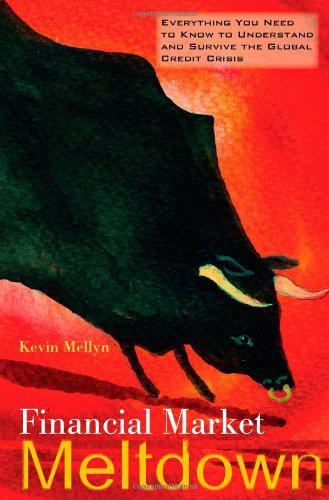
Financial Market Meltdown: Everything You Need to Know to Understand and Survive the Global Credit Crisis
by
Kevin Mellyn
Published 30 Sep 2009
The Fed Demystified A WORLD RESTORED: THE DOLLAR BECOMES THE NEW GOLD The Conference held at the Bretton Woods Hotel in New Hampshire during 1944 was a blend of British brain and American brawn acting to put the world economy back together. Keynes had the plan, and the United States had the money. The big idea was to turn the U.S. dollar into the global reserve currency, meaning the money that all central banks paid each other in to settle the ‘‘balance of payments’’ mismatches that always arose from cross-border trade and investment. Under the old gold standard, the global reserve currency was the British Pound but only because it was fully convertible to gold at a fixed rate. The new Bretton Woods system pegged each country’s currency to the U.S. dollar within a fixed range and in turn pegged the dollar to gold.
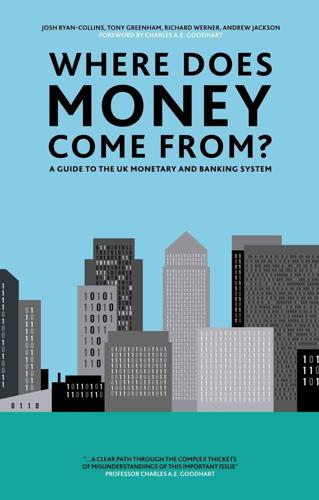
Where Does Money Come From?: A Guide to the UK Monetary & Banking System
by
Josh Ryan-Collins
,
Tony Greenham
,
Richard Werner
and
Andrew Jackson
Published 14 Apr 2012
The pound floated freely once again.94 Other countries had either already left the gold standard or would do so soon after.95 The rigid adherence to the standard, the consequent inability for exchange rates to adjust to reflect changes in international competitiveness and the high interest rates required to defend currencies from speculative attacks have been blamed for deepening the Great Depression, with some studies finding a correlation between the length of countries’ adherence to the standard and the severity of the depression in that country.96, 97 It has also been suggested that inter-war instability was in part a result of the shift of power from the pre-war dominance of sterling to the new global reserve currency – the US dollar – and hence the de facto governance of the global financial system passing to the US Federal Reserve, which was unaccustomed to and ill-prepared for such an undertaking. Following WWII, a 20-year period of relative financial stability ensued in much of the Western world, with the Bretton Woods agreement providing a fixed exchange rate against the US dollar, which in turn was convertible into gold at a fixed price.
…
* Fringe banks – or secondary banks – were individual small lenders who were not subject to banking regulations.102 † 12.5 per cent of banks deposits would have to be held in the form of ‘eligible reserve assets’, which included balances in the Bank of England, Treasury bills and money at call with the discount markets.104 * Eurodollars is the generic name for US dollar deposits held by non-US banks outside the USA and therefore outside the jurisdiction of the US Federal Reserve. This market developed from the combination of the status of the US dollar as the global reserve currency after WWII, and the desire of the Soviet Union to move its holdings out of the USA during the Cold War, as well as the build-up of dollar revenues from oil exporting countries that they preferred to hold outside the US. * Bank of England statistics: M4 (LPQAUYN) and Notes and Coins (LPMB8H4).
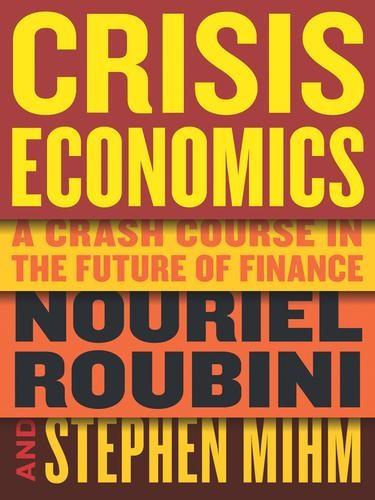
Crisis Economics: A Crash Course in the Future of Finance
by
Nouriel Roubini
and
Stephen Mihm
Published 10 May 2010
Why has the United States run massive deficits, while Germany, Japan, China, and a host of emerging-market economies have run surpluses? Will these current account imbalances—which were one of the causes of the financial crisis—be resolved in an orderly or a disorderly way? Could the U.S. dollar crash, and if so, what would replace it as a global reserve currency? What role can a reformed IMF play in reducing global monetary distortions and financial crises? And should the IMF become a true international lender of last resort? This part of the book recognizes an inescapable truth: the ability of the United States, much less the G-7, to dictate the terms of these reforms is limited.
…
In 1946 the United States was at the peak of its power. Its manufacturing base, unscathed by the war, was the envy of the world, and its future competitors—Japan and Germany—were in ruins. The United States was the world’s biggest creditor and net lender by running current account surpluses, and the dollar had just become the global reserve currency. Little wonder it was able to pay down its debt with ease. Whether the same can happen today is another question. Much of the country’s manufacturing base is weak, and the United States has become the world’s biggest debtor and net borrower as it runs large current account deficits, thanks in no small part to loans made by China, its apparent rival in the twenty-first century.
…
The Americans rejected the idea and pushed for the dollar to become the world’s reserve currency. Zhou criticized that fateful step as misguided. Keynes, he claimed, had been “far-sighted,” and the SDR might be a way of resurrecting his ideas. For now, the idea of turning the SDR into a global reserve currency remains fanciful. A significant number of private and public parties would have to use it as a unit of account, and so far there’s no sign of that happening; the SDR remains a creature of the IMF. Nonetheless, the growing interest in expanding its role highlights the degree to which China and many other emerging markets want to replace the dollar with something a bit more stable and resistant to crisis and collapse.
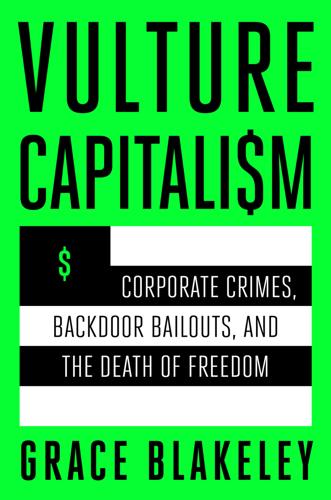
Vulture Capitalism: Corporate Crimes, Backdoor Bailouts, and the Death of Freedom
by
Grace Blakeley
Published 11 Mar 2024
In fact, at the global level it is much easier to see the equivalence between economic and political power than it is domestically. The power of US businesses abroad is maintained through an international order that prioritizes the interests of US capital, promulgated by the US government and its allies.28 The power of US finance rests on the central role played by the dollar as the global reserve currency, which is itself a function of American military, political, and economic might. American military power, meanwhile, stems from and helps to reinforce the power of a web of military contractors, weapons manufacturers, and research hubs that provide the expertise and equipment needed to maintain its supremacy.
…
liberal definition of nation-state and, 149–50 in Russia (former Soviet Union), ix social contract theory and, 143–52 socialism vs., 66 state as rule-setter vs. planner, 148–52, 165, 204 state as social creation and, 157–62 State Street, 133, 134 Stein, Jill, 251 Stiglitz, Joseph, 51, 200, 201 Stolen (Blakeley), 257, 258 Stone, Brad, 80 Stonecipher, Harry, 4–6, 8 Streeck, Wolfgang, 36 Strike Debt campaign/Rolling Jubilee (2012), 249–50 structural adjustment programs (SAPs), 198–202 Suez Canal, 61–66 Ever Given crisis (2021), 62–63, 64 Suez crisis (1956), 61–62 Suharto, 191 Sukarno, 190–91 Sunak, Rishi, 156 Sunstein, Cass, 162–63 supply chain financing, 152–59 surveillance capitalism, 27, 54–58, 94, 98–100, 155 Sweden, Meidner Plan, 255 Sweezy, Paul, 93–94, 96, 97, 99 Syngenta, 90–91, 124 T taxes and taxation corporate tax exemptions and tax breaks, 7–8, 54–55, 59, 65–66, 79–80, 93, 106, 187, 207 international tax avoidance and evasion, 42, 45, 79, 131–32, 199, 208, 263–64 private law and, 131 undervaluing assets and, 188 in Zambia, 205, 207 Taylorism, 99–100 technology, see computer technology Teflon, 91 Teleperformance, 98–99 temporary monopoly power (Schumpeter), 85–88, 96 Tencent, 57–58 Tepper, Jonathan, 89 Tester, John, 141 Texaco, 194 Thaler, Richard, 162–63 Thatcher, Margaret, 15, 31, 33–34, 62, 160, 161–62, 218, 220–21, 230–31 Tillerson, Rex, 140 Total, 46 trade agreements, 261–62 Trades Union Congress (UK), 60 trade unions, see labor movements transactions cost theory of the firm (Coase), 83, 84 Travis, Gregory, 5 Treasure Islands (Shaxson), 131–32 Tripartite Committee, 27–28, 30, 160 Troubled Asset Relief Program (TARP, 2008), 29, 49, 53 Trudeau, Justin, 136 Trump, Donald, 8, 9, 33, 43, 59, 104, 140 TRW, 218 tulip bubble (1630s), 126 TurboTax, 106 Twitter/X, vii, 54 U Uber, 111 Ubico, Jorge, 187 UBS, 124 Ukraine, 44, 64, 201 Unchecked Corporate Power (Barak), 107 Union Carbide India Limited, 90 Union of Farm Workers (Spain), 229 unions, see labor movements United Auto Workers (UAW), 26–29 United Fruit Company (UFC, now Chiquita), 186–89 United Kingdom (UK) al-Yamamah arms deal with Saudi Arabia, 220–21 BAE Systems, 220–21 Barrow Alternative Employment Committee, 220 bureaucratization and, 34–35 collective ownership proposals, 254, 255 corporate welfare programs and, 31–32 COVID-19 aid to corporations, 45–46, 155–57 COVID-19 pandemic response and, 53–61, 155–57, 162–63 East India Company (EIC), 22, 103–4, 183 emergence of central banks and, 124–25 European Union membership, 154 Greater London Enterprise Board, 216–17, 219–20 Green New Deal proposal, 69, 248 immigrant policies, 163–64, 263 imperialism of, 177, 179–81, 182 Labour Party, 158, 217, 250, 255, 256 Levellers and Diggers, 271 liberal revolution and, 258 London Docklands Development Corporation (LDDC), 230–31 London Energy and Employment Network (LEEN), 220 London Olympics (2012), 101 Lucas Aerospace Corporation/Lucas Plan, xix, 215–22, 226, 229, 231, 247, 248, 266 New Economics Foundation, 255 New Economy Organisers Network (NEON), 250 Nudge Unit, 162–64 Occupy movement, 250 People’s Plan for the Royal Docks, 230–31 Post Banks proposal, 256 Preston Model, community wealth building (CWB), 237–38, 247, 255 resistance to the labor movement, 15, 31, 33–34, 62, 64–65, 77–78, 160, 216–17, 218, 220, 221 UK Border Agency, 102 Wales, Blaenau Ffestiniog economic development program, 238–40 wealth inequality in, 60–61 We Own It (think tank), 254 United Nations (UN) Climate Change Conference (COP26, 2021), 70–71 Conference on Trade and Development (UNCTAD), 184 Human Development Rankings, 206 United States (US) Central Intelligence Agency (CIA), 175, 189, 241 Chicago school of neoliberalism, 150–51, 199 colonialism and, 173–79, 209–10 COVID-19 aid to corporations, 41–45 Export-Import Bank (EXIM), 243 Green New Deal proposal, 69, 248 Green Party, 251 “green” stimulus packages, 69 Keystone XL pipeline, 251 military-industrial complex, 9–10, 23, 25, 191–93, 217–20, 244 New Deal reforms, 26, 28 Non-Aligned Movement and, 190–91 Occupy movement, 249–50 power in the global economy, 151, 198, 205 prison-industrial complex, 33–34 resistance to the labor movement, 31, 62 US dollar as global reserve currency, 178, 209–10 wealth inequality in, 60–61 US Air Force, 8 US Central Intelligence Agency (CIA), 175, 189, 241 US Congress, COVID-19 aid to corporations and, 42–44 US Department of Defense, 8, 191–93 US Department of Energy, 29 US Department of Health and Human Services (HHS), 56–57 US Department of Justice McKinsey & Company settlement, 55 price-fixing convictions, 94 US Department of the Treasury, 141 COVID-19 pandemic and, 9–10 financial crisis of 2008 and, 49–50, 53 US Department of Veterans Affairs (VA), 56 US Federal Aviation Administration (FAA), 5–7 US Federal Emergency Management Administration (FEMA), 56–57 US Federal Reserve, 9, 126–29, 141 COVID-19 pandemic and, 42 financial crisis of 1987 and, 126–27 financial crisis of 2008 and, 49–50, 127, 209–10 quantitative easing (QE) and, 127–28, 129, 136 US dollar as global reserve currency, 178, 209–10 Volcker shock, 198, 205 US Occupational Safety and Health Administration (OSHA), 77 US Securities and Exchange Commission (SEC), 55 US Small Business Administration (SBA), 41 United Technologies, 218–19 universal basic income (UBI)/universal basic services, 253 Up & Go (cooperatively owned app), 254 Urry, John, 37 US Virgin Islands, US colonialism and, 173, 174 UTC Aerospace Systems, 218–19 Utopia of Rules, The (Graeber), 35 V Valeant, 55 Vanguard, 133, 134 Vattenfall, 197 Veblen, Thorstein, xv, 13 Vietnam War, 175–76, 181, 227 Vivendi, 46 Volcker, Paul, 198, 205 Volkswagen, viii, 46–47 Volvo, 28 von Mises, Ludwig, 146–47, 161–62 vulture capitalism, 202–11 in apartheid South Africa, 202–4 in Zambia, 205–8, 210 W wage suppression, 60, 63, 92–93 Wainwright, Joel, 70 Wales, Blaenau Ffestiniog economic development program, 238–40 Wall Street crash of 1929, xi Walmart, 88, 134, 264, 265 War on Want, 196 Washington Consensus, 200–201, 210 Washington Post, acquisition by Amazon, 80 Water Defenders, The (Broad and Cavanagh), 197 wealth inequality, 60–61, 87, 89, 97, 98 Wealth of Nations, The (Smith), 145 Weber, Isabella, 65 Welch, Jack, 4 Wengrow, David, 224–25 We Own It (UK think tank), 254 WeWork, 109–13, 117 William III (King of England), 124–25 Williams, Roger, 42 Wood, Leonard, 174–75 worker ownership Mississippi, Cooperation Jackson program, 236–37, 247, 251–52, 255 Sweden, Meidner Plan, 255 UK, Preston community wealth building (CWB) program, 237–38, 247, 255 Workers’ Unity Collective (Spain), 229 World Bank, 176–77, 198–99, 206–8 WorldCom, 119–20 World Economic Forum, 135 World Health Organization (WHO), 90 World Transformed festival (UK), 250 World War II, xi Bretton Woods institutions following, 51 financial institutions established after, 198–200 Ford Motor Company and, 23–24, 25 Germany and, 158, 181 Japan and, 175–76, 190, 191 new industrial capitalism (Galbraith) following, 37 Philippines and, 175–76 social democratic state following, 24–25 X X/Twitter, vii, 54 Y Yahoo!
…
liberal definition of nation-state and, 149–50 in Russia (former Soviet Union), ix social contract theory and, 143–52 socialism vs., 66 state as rule-setter vs. planner, 148–52, 165, 204 state as social creation and, 157–62 State Street, 133, 134 Stein, Jill, 251 Stiglitz, Joseph, 51, 200, 201 Stolen (Blakeley), 257, 258 Stone, Brad, 80 Stonecipher, Harry, 4–6, 8 Streeck, Wolfgang, 36 Strike Debt campaign/Rolling Jubilee (2012), 249–50 structural adjustment programs (SAPs), 198–202 Suez Canal, 61–66 Ever Given crisis (2021), 62–63, 64 Suez crisis (1956), 61–62 Suharto, 191 Sukarno, 190–91 Sunak, Rishi, 156 Sunstein, Cass, 162–63 supply chain financing, 152–59 surveillance capitalism, 27, 54–58, 94, 98–100, 155 Sweden, Meidner Plan, 255 Sweezy, Paul, 93–94, 96, 97, 99 Syngenta, 90–91, 124 T taxes and taxation corporate tax exemptions and tax breaks, 7–8, 54–55, 59, 65–66, 79–80, 93, 106, 187, 207 international tax avoidance and evasion, 42, 45, 79, 131–32, 199, 208, 263–64 private law and, 131 undervaluing assets and, 188 in Zambia, 205, 207 Taylorism, 99–100 technology, see computer technology Teflon, 91 Teleperformance, 98–99 temporary monopoly power (Schumpeter), 85–88, 96 Tencent, 57–58 Tepper, Jonathan, 89 Tester, John, 141 Texaco, 194 Thaler, Richard, 162–63 Thatcher, Margaret, 15, 31, 33–34, 62, 160, 161–62, 218, 220–21, 230–31 Tillerson, Rex, 140 Total, 46 trade agreements, 261–62 Trades Union Congress (UK), 60 trade unions, see labor movements transactions cost theory of the firm (Coase), 83, 84 Travis, Gregory, 5 Treasure Islands (Shaxson), 131–32 Tripartite Committee, 27–28, 30, 160 Troubled Asset Relief Program (TARP, 2008), 29, 49, 53 Trudeau, Justin, 136 Trump, Donald, 8, 9, 33, 43, 59, 104, 140 TRW, 218 tulip bubble (1630s), 126 TurboTax, 106 Twitter/X, vii, 54 U Uber, 111 Ubico, Jorge, 187 UBS, 124 Ukraine, 44, 64, 201 Unchecked Corporate Power (Barak), 107 Union Carbide India Limited, 90 Union of Farm Workers (Spain), 229 unions, see labor movements United Auto Workers (UAW), 26–29 United Fruit Company (UFC, now Chiquita), 186–89 United Kingdom (UK) al-Yamamah arms deal with Saudi Arabia, 220–21 BAE Systems, 220–21 Barrow Alternative Employment Committee, 220 bureaucratization and, 34–35 collective ownership proposals, 254, 255 corporate welfare programs and, 31–32 COVID-19 aid to corporations, 45–46, 155–57 COVID-19 pandemic response and, 53–61, 155–57, 162–63 East India Company (EIC), 22, 103–4, 183 emergence of central banks and, 124–25 European Union membership, 154 Greater London Enterprise Board, 216–17, 219–20 Green New Deal proposal, 69, 248 immigrant policies, 163–64, 263 imperialism of, 177, 179–81, 182 Labour Party, 158, 217, 250, 255, 256 Levellers and Diggers, 271 liberal revolution and, 258 London Docklands Development Corporation (LDDC), 230–31 London Energy and Employment Network (LEEN), 220 London Olympics (2012), 101 Lucas Aerospace Corporation/Lucas Plan, xix, 215–22, 226, 229, 231, 247, 248, 266 New Economics Foundation, 255 New Economy Organisers Network (NEON), 250 Nudge Unit, 162–64 Occupy movement, 250 People’s Plan for the Royal Docks, 230–31 Post Banks proposal, 256 Preston Model, community wealth building (CWB), 237–38, 247, 255 resistance to the labor movement, 15, 31, 33–34, 62, 64–65, 77–78, 160, 216–17, 218, 220, 221 UK Border Agency, 102 Wales, Blaenau Ffestiniog economic development program, 238–40 wealth inequality in, 60–61 We Own It (think tank), 254 United Nations (UN) Climate Change Conference (COP26, 2021), 70–71 Conference on Trade and Development (UNCTAD), 184 Human Development Rankings, 206 United States (US) Central Intelligence Agency (CIA), 175, 189, 241 Chicago school of neoliberalism, 150–51, 199 colonialism and, 173–79, 209–10 COVID-19 aid to corporations, 41–45 Export-Import Bank (EXIM), 243 Green New Deal proposal, 69, 248 Green Party, 251 “green” stimulus packages, 69 Keystone XL pipeline, 251 military-industrial complex, 9–10, 23, 25, 191–93, 217–20, 244 New Deal reforms, 26, 28 Non-Aligned Movement and, 190–91 Occupy movement, 249–50 power in the global economy, 151, 198, 205 prison-industrial complex, 33–34 resistance to the labor movement, 31, 62 US dollar as global reserve currency, 178, 209–10 wealth inequality in, 60–61 US Air Force, 8 US Central Intelligence Agency (CIA), 175, 189, 241 US Congress, COVID-19 aid to corporations and, 42–44 US Department of Defense, 8, 191–93 US Department of Energy, 29 US Department of Health and Human Services (HHS), 56–57 US Department of Justice McKinsey & Company settlement, 55 price-fixing convictions, 94 US Department of the Treasury, 141 COVID-19 pandemic and, 9–10 financial crisis of 2008 and, 49–50, 53 US Department of Veterans Affairs (VA), 56 US Federal Aviation Administration (FAA), 5–7 US Federal Emergency Management Administration (FEMA), 56–57 US Federal Reserve, 9, 126–29, 141 COVID-19 pandemic and, 42 financial crisis of 1987 and, 126–27 financial crisis of 2008 and, 49–50, 127, 209–10 quantitative easing (QE) and, 127–28, 129, 136 US dollar as global reserve currency, 178, 209–10 Volcker shock, 198, 205 US Occupational Safety and Health Administration (OSHA), 77 US Securities and Exchange Commission (SEC), 55 US Small Business Administration (SBA), 41 United Technologies, 218–19 universal basic income (UBI)/universal basic services, 253 Up & Go (cooperatively owned app), 254 Urry, John, 37 US Virgin Islands, US colonialism and, 173, 174 UTC Aerospace Systems, 218–19 Utopia of Rules, The (Graeber), 35 V Valeant, 55 Vanguard, 133, 134 Vattenfall, 197 Veblen, Thorstein, xv, 13 Vietnam War, 175–76, 181, 227 Vivendi, 46 Volcker, Paul, 198, 205 Volkswagen, viii, 46–47 Volvo, 28 von Mises, Ludwig, 146–47, 161–62 vulture capitalism, 202–11 in apartheid South Africa, 202–4 in Zambia, 205–8, 210 W wage suppression, 60, 63, 92–93 Wainwright, Joel, 70 Wales, Blaenau Ffestiniog economic development program, 238–40 Wall Street crash of 1929, xi Walmart, 88, 134, 264, 265 War on Want, 196 Washington Consensus, 200–201, 210 Washington Post, acquisition by Amazon, 80 Water Defenders, The (Broad and Cavanagh), 197 wealth inequality, 60–61, 87, 89, 97, 98 Wealth of Nations, The (Smith), 145 Weber, Isabella, 65 Welch, Jack, 4 Wengrow, David, 224–25 We Own It (UK think tank), 254 WeWork, 109–13, 117 William III (King of England), 124–25 Williams, Roger, 42 Wood, Leonard, 174–75 worker ownership Mississippi, Cooperation Jackson program, 236–37, 247, 251–52, 255 Sweden, Meidner Plan, 255 UK, Preston community wealth building (CWB) program, 237–38, 247, 255 Workers’ Unity Collective (Spain), 229 World Bank, 176–77, 198–99, 206–8 WorldCom, 119–20 World Economic Forum, 135 World Health Organization (WHO), 90 World Transformed festival (UK), 250 World War II, xi Bretton Woods institutions following, 51 financial institutions established after, 198–200 Ford Motor Company and, 23–24, 25 Germany and, 158, 181 Japan and, 175–76, 190, 191 new industrial capitalism (Galbraith) following, 37 Philippines and, 175–76 social democratic state following, 24–25 X X/Twitter, vii, 54 Y Yahoo!
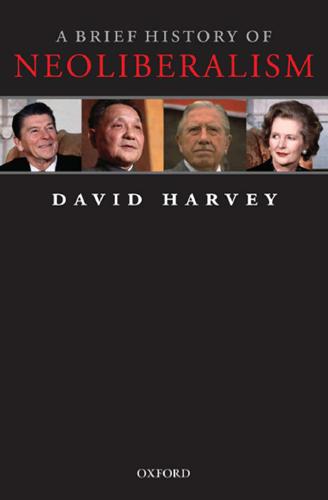
A Brief History of Neoliberalism
by
David Harvey
Published 2 Jan 1995
Free trade in goods was encouraged under a system of fixed exchange rates anchored by the US dollar’s convertibility into gold at a fixed price. Fixed exchange rates were incompatible with free flows of capital that had to be controlled, but the US had to allow the free flow of the dollar beyond its borders if the dollar was to function as the global reserve currency. This system existed under the umbrella protection of US military power. Only the Soviet Union and the Cold War placed limits on its global reach. A variety of social democratic, Christian democratic and dirigiste states emerged in Europe after the Second World War. The US itself turned towards a liberal democratic state form, and Japan, under the close supervision of the US, built a nominally democratic but in practice highly bureaucratic state apparatus empowered to oversee the reconstruction of that country.
…
At the least hint of such a switch away from monetarism (in effect declaring neoliberalism dead), however, central bankers everywhere would almost certainly create a run on the dollar and thus prematurely precipitate a crisis of capital flight that would be unmanageable by US financial institutions alone. The US dollar would lose all credibility as a global reserve currency and lose all the future benefits (for example of seignorage—the power to print money) of being the dominant financial power. That mantle would then be assumed either by Europe or East Asia or both (the world’s central bankers are already exhibiting a preference to hold more of their balances in euros).
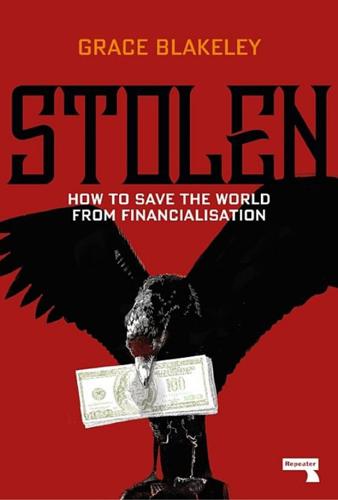
Stolen: How to Save the World From Financialisation
by
Grace Blakeley
Published 9 Sep 2019
Socialist and newly-wealthy oil-producing states that wanted to hold dollar deposits without depositing them in US banks were able to put their dollars in London instead. London’s Eurodollar markets grew substantially as a result. The Eurodollar markets undermined Bretton Woods by creating a global system of unregulated capital flows.13 Those investors holding dollars — pretty much everyone, given the use of the dollar as the global reserve currency — could now deposit them into the City of London. These dollars would then be free to float around the global economy at will, unhindered by the strict regulation then imposed on US banks by the Federal Reserve. Billions of dollars had ended up in the unregulated Eurodollar markets by the 1970s, undermining Keynes’ determination to curb the hot money of the rentier class.
…
Realising that there were far too many dollars in circulation to keep up the pretence, in 1971 Nixon announced that dollars would no longer be convertible to gold. Bretton Woods was finally over. Many expected a sharp devaluation of the dollar at this point, but this didn’t happen. In fact, the dollar — strong as ever — continued to be used as the global reserve currency, even in the absence of any link with gold. Finally, the real foundations Bretton Woods had been exposed: American imperial power. The gold peg established at Bretton Woods was not the source of the dollar’s value; the source of its value was a collective agreement that dollars would be used as the default global currency, much as English had by that point become the default global language.
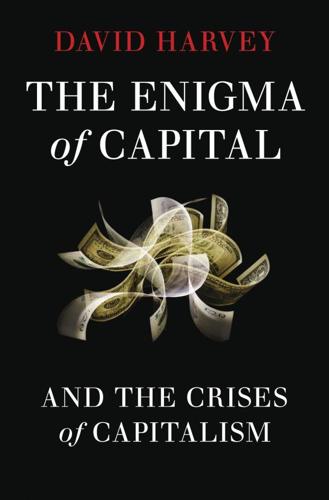
The Enigma of Capital: And the Crises of Capitalism
by
David Harvey
Published 1 Jan 2010
A more acceptable solution to the US, worked out in a series of complicated international accords between 1968 and 1973, was for the fixed exchange rate with gold to be abandoned. All the major currencies of the world would then float against the dollar. While this introduced both flexibility and volatility into the international trading system, the global reserve currency remained under US control. The effect was to displace one challenge to US hegemony by another. If the dollar was to remain strong, the US productive economy had to perform as well as, if not better than, its rivals. By the 1980s it was clear that the economies of Japan and West Germany were way ahead of the US in terms of productivity and efficiency and that there were other competitive threats lurking in the wings.
…
The US has been borrowing at the rate of around $2 billion a day for several years now and while the lenders – such as Chinese and other East Asian Central banks along with those of the Gulf States – have so far kept lending because the US economy is far too big to fail, the increasing power of the lenders over US policy is palpable. Meanwhile, the position of the dollar as the global reserve currency is threatened. The Chinese have resurrected Keynes’ original suggestion and urged the creation of a global currency of special drawing rights to be managed by a presumably democratised IMF (in which the Chinese would have an important voice). This threatens US financial hegemony. The end of the Cold War has also rendered military protection against the communist menace irrelevant, even as the ex-Soviet Bloc countries, along with China and Vietnam by very different paths, have become integrated into the global capitalist economic system.
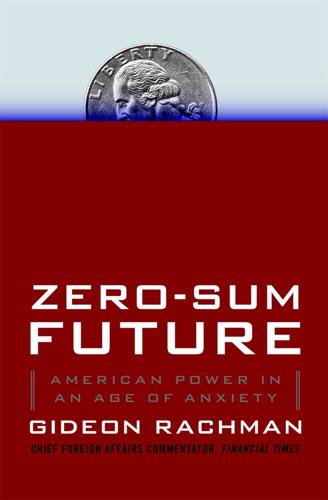
Zero-Sum Future: American Power in an Age of Anxiety
by
Gideon Rachman
Published 1 Feb 2011
Taken as a whole the European Union single market that was put together in the mid-1980s is now the world’s largest economy—bigger than the United States or China. And for all its troubles, the euro, the European single currency, is so far the only plausible alternative to the U.S. dollar as a global reserve currency. At the beginning of the 1980s, however, communism was still a force even in Western Europe. In April 1981, in my gap year between school and university, I traveled to Paris to watch a mass rally for Georges Marchais, the French Communist Party leader, who was running in the presidential election that year.
…
Iran and Venezuela have often talked of changing the way in which oil is priced, so that it is no longer automatically quoted in dollars. This would be an important symbolic move, although its practical effect is questionable. China has also spoken with increasing urgency of the need to find an alternative global reserve currency to the dollar. Any such move is likely to be the work of many years. But China’s growing importance as a market, customer, and source of cash is already increasing its global influence. The Beijing government’s willingness to extend aid to African nations without imposing the political conditions that Western nations liked to insist on has made China a favored partner for a range of African governments from Zimbabwe to Sudan and Angola.
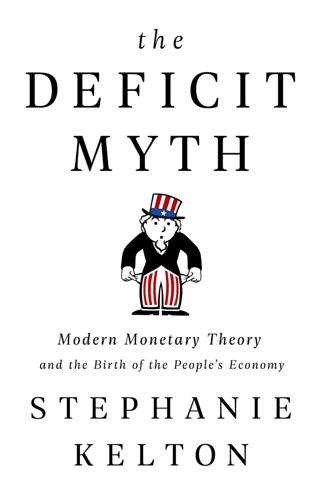
The Deficit Myth: Modern Monetary Theory and the Birth of the People's Economy
by
Stephanie Kelton
Published 8 Jun 2020
And they need to refrain from borrowing (i.e., taking on debt) in a currency that isn’t their own.3 When a country issues its own nonconvertible (fiat) currency and only borrows in its own currency, that country has attained monetary sovereignty.4 Countries with monetary sovereignty, then, don’t have to manage their budgets as a household would. They can use their currency-issuing capacity to pursue policies aimed at maintaining a full employment economy. Sometimes, people ask me whether MMT applies to countries outside the United States. It does! Even though the US dollar is considered special because of its status as the global reserve currency, lots of other countries have the power to make their monetary systems work for their people. So, if you’re reading this book outside the USA, don’t assume there are no important lessons here for you and your country. On the contrary, MMT can be used to describe and improve the policy choices available to any country with a high degree of monetary sovereignty—the US, Japan, the UK, Australia, Canada, and many more.
…
In short, just as Uncle Sam’s budget deficit arises from American businesses’ and households’ desires to accumulate a surplus of US dollars, America’s trade deficit arises from the rest of the world’s desire to accumulate a surplus of US currency. The global hunger for dollars is largely why we’ve been running a trade deficit nonstop for decades. In this regard, the United States does sit in a powerful position compared to the rest of the world—for both good and ill. Thanks to the US dollar’s unique role as a global reserve currency, Uncle Sam never has to borrow in anything but his own currency (and he doesn’t even have to do that!). This gives the US something of an advantage, but it does not mean that the United States is the only country with the power to carry out its domestic policy agenda. Any country with a high degree of monetary sovereignty has the ability to pursue a domestic policy agenda aimed at keeping its economy operating at full employment.
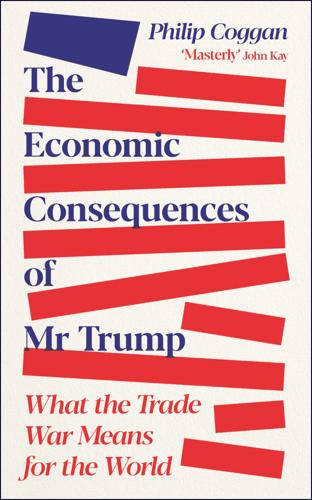
The Economic Consequences of Mr Trump: What the Trade War Means for the World
by
Philip Coggan
Published 1 Jul 2025
If a nation’s trade deficit is large, then it is possible for the country’s currency to fall so that its exports are cheaper, and thus more attractive, and imports are more expensive, and thus less appealing. The trade deficit can right itself. Some people argue that this mechanism fails to work in the case of the US because of the dollar’s role as a global reserve currency. International demand for the dollar keeps its value high and thus prevents the trade deficit from correcting. The dollar has certainly strengthened since the financial crisis of 2007–9 but it is weaker than it was in 2000 or in the mid-1980s. It is also worth noting that the appeal of the dollar makes it easier to fund the US government’s budget deficit and this may save taxpayers money in the form of reduced interest costs (this has been dubbed the US’s ‘exorbitant privilege’).
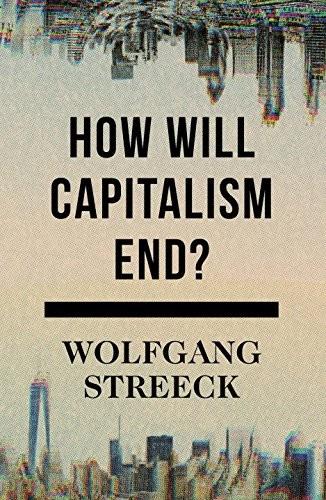
How Will Capitalism End?
by
Wolfgang Streeck
Published 8 Nov 2016
In particular, the United States began to sell its public debt abroad to sovereign investors, especially to the governments of oil-producing countries looking for opportunities to ‘recycle’ their surpluses and in return gain military protection against regional adversaries and their own peoples. In subsequent years ‘financial services’ became the most important growth industry by far in both the United States and the United Kingdom.16 After the end of the Bretton Woods monetary regime, with the dollar continuing to be the leading global reserve currency, the United States enjoyed the ‘exorbitant privilege’ (Giscard d’Estaign) of being able to indebt itself internationally in its own currency and repay its debt, if need be, by printing basically unlimited amounts of it. The rich supply of fiat dollars that ensued nourished an expanding financial industry about to turn into the financial sector of capitalism worldwide.
…
Bush during his presidential campaign in 2000 as ‘returning to citizens what is rightfully theirs’. Yet neither this nor the wars in Afghanistan and Iraq did anything to diminish the confidence of financial markets. The United States has more than one way to reassure its creditors, including its capacity to produce unlimited amounts of a global reserve currency out of thin air. That the American government nevertheless administered the bitter medicine of domestic austerity to its already anaemic welfare state in the 1990s can only have added to financial markets’ trust in its ‘full credit’, on top of the culturally established primacy of financial market obligations over citizen entitlements.
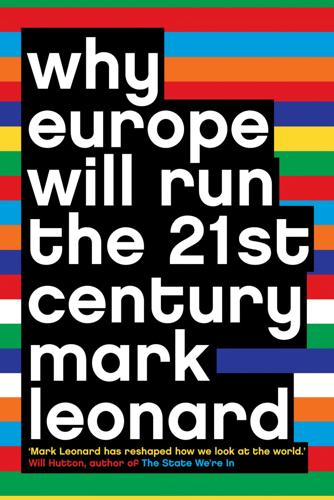
Why Europe Will Run the 21st Century
by
Mark Leonard
Published 4 Sep 2000
Romano Prodi told me that when he first met the Chinese President Jiang Zemin, his Chinese interlocutor was fascinated by the euro. Apparently, his parting words were: ‘We will switch our reserves to the euro for two reasons. Why? First because we believe in multipolarity. Second, because it will be good business.’ If the euro emerges as a global reserve currency, it will give the countries of the Eurozone much greater control over their economic futures. Europe will probably not mimic the American model of using its status as one of the world’s bankers to finance a huge current account deficit, but a massive injection of capital into the European economy would undoubtedly stimulate demand.
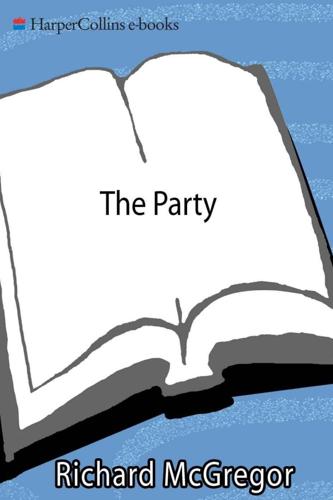
The Party: The Secret World of China's Communist Rulers
by
Richard McGregor
Published 8 Jun 2010
In Guinea, just days after the army had shot citizens and raped women on the streets of the capital, the military-backed government, a pariah on the continent and around the world, announced it was in talks with China on a billion-dollar resources and infrastructure deal. Beijing’s ambition and clout was being lit up by flashing lights in ways that would have been unthinkable a few years previously. The Chinese central bank called for an alternative to the US dollar as a global reserve currency in early 2009, and reiterated its policy as the year went on. France obediently re-committed to Chinese sovereignty over Tibet to placate Beijing’s anger over the issue, after Beijing had cancelled an EU summit in protest at Paris’s welcome for the Dalai Lama. Barack Obama spurned meeting the Tibetan spiritual leader in late 2009, to sweeten the atmosphere for his first visit to Beijing in November that year, although he did agree to meet him in early 2010.
…
Abe, Shinzo, 271–2 academia, focus of, 18–19 Africa, xv AIDs campaigners, 3 airports, 19 All-China Federation for Industry and Commerce, 79 All-China Federation of Trade Unions, 213–14 All-China Lawyers’ Association, 189, 190 Aluminium Company of China, 57–61, 62, 224–6 aluminium sector, 219, 224–6 Amway, 210, 211, 212–13 Anhui beauty contest, 176 famine, 258–9 party chiefs and Idiot Seeds, 195 anti-graft body see Central Commission for Discipline Inspection anti-Japanese protests, 270–72 anti-secession law, 129 arms race, 106 Ashton, Catherine, xvi Asian financial meltdown, 45 Atrophy and Adaptation (Shambaugh), 266 Australia, xv Avon Lady, 210, 211, 213 Baidu, 187 Banister, Judith, 260, 292n Bank of China, 50, 53, 158 Bank of Communications, 52–3 banknotes, 244 banks, xi Party’s role in, 51, 52–3 reform, 50 response to global financial crisis, 68 status of, 204 see also individual banks Baoshan Steel negotiations, 54–5 Barmé, Geremie, 242, 245, 271 Basel II, 67 beauty contest, 176 Becker, Jasper, 232 Beijing mayors, 16, 144, 168 new airport, 19 Olympics, 170–71, 186 Beijing Hotel gathering, 34, 35, 38–40 Beijing University, centenary, 79, 80 Bentham, Jeremy, 17 BHP-Billiton, 58, 59 ‘big-headed babies’, 183, 184–5 black-collar class, 140–41 Bo Zhiyue, 121 Boao Forum, ix–xi Bodyguard Bureau, 12 Bond, Sir John, 52–3 Boxer rebellion, 250 Brady, Anne-Marie, 236, 268 bribery/corruption, 75, 93–100, 138–41, 172, 183, 191, 267 see also Central Commission for Discipline Inspection Burns, John, 80, 81 Bush, George Snr., 43 Caijing on bankers, 68–9 Guo Shuqing’s interview, 51 on Rio-Tinto bid, 60 on Shanghai corruption cases, 161 car number-plates, of Party officials, 14 car sales, 2009, xvi Casino Royale (film), 238 Catholic Church, 11–12 CCTV, 185, 250 cell-phones, 39 censuses, 258–9 Central Commission for Discipline Inspection, 137–8 beneficiaries of, 147 failing of, 145–7 investigation procedure, 142–5, 168–9 on Shanghai corruption cases, 160–61, 164–6, 167–9 structure and staffing, 141–2 Central Committee, 12 Central Committee Taiwan Work Leading Small Group, 21 Central Guards Unit, 12 Central Military Commission, 107 Central Organization Department, 17 appointment and promotion, 81, 82–3 and ethnic minorities and other parties, 79 internal tension, 74–6 invisibility, 71–2, 73, 74, 280n against local authority, 90–93 members’ files, 77–8 nature of, 69 origin and historical background, 76–7 on Party’s disaster relief, 192–3 refined and tightened, 41 and state enterprises, 46, 72–4, 84–9 see also nomenklatura system Central Party School, 226–8 Central Politics and Law Committee, 25, 189, 190 Central Propaganda Department, 17, 229 media control, 184, 186, 237, 248–9; see also media, censorship military propaganda, 121–2 reinforced, 41 roles of, 235–7, 248–52, 253 in Sanlu case, 189 Taiwan mission, 122 centrally planned economy, metaphor for, 37 CEOs, 89 reshuffled, 84–5 status symbol, 8–9, 10 stock options of, 100–103 Chai Junyong, 164 Chan, Hon, 80, 81 Changchun Chen’s trial in, 166 corruption cases, 139 Changzhou, 220–22 Charter 08, 261–2 Chen Ailian, 5 Chen Deming, 83–4 Chen Jinhua, 55 Chen Liangyu, 135, 136, 161 background, 155–6 confronts Wen Jiabao, 163–4 defends Shanghai, 151 investigation on, 138, 164–6 trial and prison life, 166 Chen Shui-bian, 124 Chen Tonghai, 64 Chen Xiaodan, 65–6 Chen Xitong, 144, 168 Chen Yuan, 40, 64–5, 66 on communism, 34, 37 daughter of, 65–6 ideas of, 38–9 Chen Yun, 37–8, 200, 239 Chen Zhili, 140 Cheung, Steven, 41, 176–7 children, poisoned by milk powder, 172, 183, 184, 185, 186 China Construction Bank corruption cases, 145–6 mass lay-offs, 50 Party’s role in, 51, 52 China Development Bank, 59, 65 China Executive Leadership Academy, Pudong, 29, 30 China Inc. see state enterprises China Investment Corporation, x–xi China Mobile, 84, 85, 101 China National Petroleum Corp. see PetroChina China Netcom, 84, 86–8 China People’s Political Consultative Conference, 204 China Pudong Cadre College, 29, 30 China Telecom, 84, 87 China Unicom, 84, 85 China Youth Daily, 248, 250–51 Chinalco, 57–61, 62, 224–6 Chinese Academy of Social Sciences, 109 Chongqing, corruption cases, 139 Clinton, Hillary, xiv–xv CLSA, 199 CNOOC, 54, 62 Cole, Bud, 121 communism, 18, 35, 76 redefined, 34, 37 Confucius, 32–3 congress see National People’s Congress corruption see bribery/corruption COSCO, 102 cover-up strategy, 233–4 Crillon Ball, 66 Cultural Revolution, 14 launching of, 149 Party’s verdict, 234, 245 Dai Bingguo, xii, 277n Dai Guofang, 220–21, 222, 223 dairy industry, 181–2, 183 see also Sanlu Dalai Lama, xvi Dandong, 174–5 Daqing, 113, 115 decentralization, 177–8 defence budget, 111–12 democracy Chinese leader’s interpretation, 20 demand of, 31, 261 pro-democracy protests see Tiananmen Square massacre in Taiwan, 123–4, 125, 126, 128, 130 democratic parties, 15 Dench, Dame Judi, 238 Deng Xiaoping, 74, 239 on Idiot Seeds, 195 image of, 6 as leader of liberalizers, 34 on Mao, 245 new model of reform, 41–2 partnership with private sector, 197, 198 perfects socialism, 194, 196 photos of, 38 power behind the scenes, 154 priorities economy, 106 returns to Leninist roots, 14 rural reform, 200 Shanghai policy, 150 southern tour, 41, 201–2 stratagem, xv and Tiananmen Square Massacre, 105 Dickson, Bruce, 214, 218–19 Ding, James, 227 Ding Guan’gen, 17 direct sales industry, 209–13 Director of the Beijing Representative Office (Wang Xiaofang), 95–6 Dongfeng, 216–17 Downs, Erica, 63 Dukakis, Michael, 104 East Eight Blocks, 158 East Hope see Liu Yongxing economy impact of reform on, 42–3 unsustainability of, 269 education institutions Party control of appointment, 79 textbook censorship, 235, 245–6, 249–50 elite networks, 8–9 entrepreneurs Party membership, 31, 32 in Party schools, 226–8 rich list, 205–7 see also individual members environment as benchmark for promotion, 90 central vs. local, 90–93 Party policy on, 269 ethnic protests, 111, 264 European Union, xi Falun Gong, 82, 173, 211, 212, 264, 269 famine, 229–30, 231–4, 254, 255–60, 292n Fang Ning, 33 Far Eastern Economic Review,, 46 farmers, 200, 202 Feng Jun, 227 Fengyang, 258–9 Fewsmith, Joseph, 270 Fidelity, 101 financial system, 44–6 see also banks Fonterra, 182, 183, 186–7, 188 food safety, scandals, 183–5, 191 see also Sanlu foreign bankers, ix–xii, 277n foreign enterprises joint venture, 216–17 number of employees, 214 Fortune 500, 56 France elite networks, 9 Tibet issue, xvi Freezing Point, 248, 250–52 Friedman, Milton, 40–41 Fu Chengyu, 54, 56 Fu Furong, 213 Fu Jianfeng, 170, 186 Gang of Four, 149 global financial crisis, 266 banks’ response, 68, 269 Beijing’s response, 163, 269 global financiers, ix–xii, 277n global reserve currency, xv Global Times, 272–3 Goldman Sachs, 61, 181 golf, 145 Gome, 207 Gorbachev, Mikhail, 35 government imperial officialdom, 77 secret Party rule of, 14–17, 21–5, 33 see also public sector Great Leap Forward, 231–4, 254, 255–60, 292n Lushan verdict, 243 Gu Mingzhi, Major General, 104, 108–9 Guangdong, corruption cases, 139 Guinea, xv Guo Shuqing, 50–52, 53, 67 Gutierrez, Carlos, 83 Gymkhana Club, 9 Haier, 194, 198–9, 202–3 Han Dynasty (ad 25–220), Civil Service Ministry, 77 He Guoqiang, 279n He Weifang, 22–3, 26, 125 heavy industry, 219, 221 Henan, 255–8 history, Party’s verdict, 235, 236–9, 245–6, 248–51 Ho, Herbert, 211 Holwill, Richard, 210, 211 Hong Kong, 21 Hoogerwerf, Rupert, 157 rich list, 205–7 Hope, 215 HSBC, 52–3 Hu Angang, 40 Hu Haifeng, 148 Hu Jia, 25–6 Hu Jintao, 74–5, 108, 148, 248 claims to be elected, 4 on corruption, 138–9 development policies, 178–80 domestic problems, 272 and economy/military, 105, 106–7, 116, 117 image-management, 5–6 on Mao, 246 meets Abe, 271–2 political career, 7 rivalry with Jiang, 154–5 and Shanghai, 153 speech in congress, 8 succession, 153–4, 163 on Taiwan issue, 127, 129–31 theory of, 172 titles of, 15–16, 279n Hu Shuli, 51–2, 282n Hu Yaobang, 74, 154, 248 encourages political reform, 36 rural reform, 200 Hua Guofeng, 154 Huang, Alex, 130 Huang, Yasheng, 151, 199, 200 Huang Guangyu, 207 Huang Hongfang, 32 Huang Ju, 154 Huawei, 204 Hubei, 179 Hum, Sir Christopher, 157 ‘human flesh search engines’, 180–81 Human Organization Department see Organization Department, Human Hunan, 177 hybrid market economy, xiii Idiot Seeds, 194, 195, 201 India, elite networks, 9 Industrial & Commercial Bank of China, 45, 50 inequality, 266–7 International Monetary Fund, xv internet controlled for political events, 2 against corruption, 144, 180–81 on history textbook, 245–6, 252 lack of Party website, 20–21 on Sanlu, 185 search for democracy, 20 Iraq, 116 iron ore, 58 Japan, 271–2 elite networks, 9 protests against, 238–9, 269–70 Ji Haisheng, 102, 103 Jia Qinglin, 7–8, 25, 154, 279n Jiang Chaoliang, 52–3 Jiang Mianheng, 87, 283n Jiang Ping, 41 Jiang Qing, 149 Jiang Sixian, 205 Jiang Yanyong, 239 Jiang Zemin, 107–8, 269 at Beijing University centenary, 79 careers, 81 and Chen Xitong, 144 claims to be elected, 4 defends Zhou Zhengyi, 161 image of, 6 and military apparatus, 105–6, 116, 117 and private sector, 197, 200–201, 208–9, 217 rehearses his marching drills, 104 retires to Shanghai, 163 rivalry with Hu, 154–5 Selected Works, 165 and Shanghai gang, 148–9 Taiwan policy, 128–9 takes up and hands over power, 153–4 theory of, 172 on Zhu Rongji, 43 Jiang Zhenghua, 260 Jiangsu Tieben Iron & Steel, 220–23 Jin Zhong, 148 joint venture, 216–17 journalists, 184, 190, 252 and corruption reports, 160 demand freedom, 30, 80 on local officials, 180 judges, 15, 24, 25, 93, 114, 137 June 4 protest see Tiananmen Square massacre Justice Bureau, 190 Kremlinology, 18 Kuomintang, 123–5 labour law, 214 Ladany, Laszlo, 77 Lai Changxing, 159 law firms, Party control of, 23 lawyers, 15, 25, 30, 265 Party membership, 23 in Sanlu case, 189, 190, 193 leadership battles over, 3 succession, 153–4, 163 Lee Teng-hui, 127–8 Legal Daily, on Sanlu case, 187 legal professionals see judges; lawyers legal system Party control of, 15, 22–5 PLA members in, 114 see also judges; lawyers Lenin, Vladimir establishes Orgburo, 76 ruling model, xiii, 12, 14 Lenovo, 204 ‘les énarques’, 9 ‘Li Bu’, 77 Li Changchun, 279n Li Changjiang, 183, 191 Li Datong, 235, 248, 249–52 Li Fangping, 189, 190 Li Fanping, 264, 265 Li Gang, 70, 98–9 Li Jijun, Lieutenant-General, 245 Li Jinai, General, 107 Li Ka-shing, 158 Li Keqiang, 23–4, 279n Li Lihui, 53 Li Liming, 101, 102, 103 Li Peng, 81, 148, 239 Li Rucheng, 216 Li Rui, 240–41, 242–4, 247 Li Ruigang, 238 Li Ruihuan, 253 Li Weimin (fictional), 95–6 Li Wenyao, 257–8 Li Xiaopeng, 283n Li Yongzhong, 146 Li Youxing, 142 Li Yuanchao, 72, 75, 89–90, 91–2 Li Zhaoxing, 125 Liang Jing, 179 liberal economics, 28–9 Liberation Army Daily, 107–8 Liberation Daily, 242 life style of top-ranked party members, 10 of urban citizens, 27 The Lighthorseman, 242 Lin Chong-pin, 134 Linfen, 82 Liu Baiyu, 78 Liu Mingkang, 66–7 Liu Shihui, 265 Liu Xiaobo, 261–2 Liu Yonghao, 215 Liu Yongxing, 194, 219, 220, 223–5 Liu Zhihua, 138 Liu Zhongde, 229, 237 local economy, 174–5 localities vs. central, 90–93, 172–4, 180–81 competitiveness, 175–7, 178 and new tax policy, 179–80 Lou Jiwei, x–xi, 59–60 Lu Hao, 236 Lu Weidong, 20–21 Luo Gan, 25 Lushan meeting, 243 Ma De, 93–4, 97–8, 99–100, 103 Ma Jinlong, 218 Ma Ying-jeou, 126, 130 Mackenzie, Kelvin, 18 Major, Bob, 186 Mao Yushi, 261 Mao Zedong, 105, 253 and Central Organization Department, 76 death, body preservation and verdict on, 244–6, 247 and Gang of Four, 149 and Great Leap Forward, 231 image of, 6, 246–7 at Lushan meeting, 243 nominates successor, 154 on Party and people, 13–14 status of, 241–2 market reforms, outcomes of, 42 Marketing Dictatorship (Brady), 236 McKinsey & Co, 88, 181 meals, invitation for, 71 media on anti-Japanese protests, 271 censorship, 235–6, 237–8, 247–8, 250–52 on corruption, 144, 155, 160, 161, 166 focus of, 18–19 on food scandals, 183, 184 less restriction on, 268 official campaigns on military loyalty to Party, 107–9 Party’s guidelines for, 237, 248–9 Sanlu’s PR effect on, 185 on Taiwan issue, 127 uniformed announcement of new leadership, 4 melamine, 184–5 Mengniu, 181–2 Merrill Lynch, 47, 48–9 Miao Shouliang, 206 middle class, 205, 266 money worship, 132–3 rich list, 205–7 size of, 28 milk powder case see Sanlu Miller, Alice, 21 mining, 82, 192–3 Ministry of Personnel, 80 minying, 200 Mitsubishi, 54–5 Moeller Villa, 161 money worship, 132–4 Morgan Stanley, 52, 181 Mulvenon, James, 108 Murdoch, Rupert, 17 Naipaul, V.S., 30 name cards, 70 Namibia case, 148 Nanjing, 180–81 National Day parade, 263–4 National People’s Congress, 49 1977, 44 1987, 36 2002, 153, 154, 208 2004, 129 2007, 1–4, 11–12, 67, 125, 137 2009, 24, 25 Nationalist Party, 123–5 navy, xvi NCO system, 117, 118 new conservatives, 38–9 New York Times, 245 New Zealand, in milk scandal, 188 NGOs, 211 Ni Hanwei, 31 Nian Guangjiu, 194–6, 201 9/11, 270 Ningbo, 162 Nissan, 216–17 Niu Yuqing, 146 Nixon, Richard, 19–20 nomenklatura system, 78–81 North Korea, 174, 175 novels, genre of, 144 Obama, Barack, xvi oil legacy of Daqing, 113, 115 overseas interest, 116 shortage, 63 old boy network’, 9 Olympics, 170–71, 186 one-child policy, 280n O’Neill, Jim, 277n Organization Department, Human, 71 Orgburo, 76 Ouroussoff, Nicolai, 19 Ouyang Song, 192 Pan Junxiang, 234–5 Pan Yue, 39–40 Paris, Crillon Ball, 66 Party membership as a commitment, 11 change of political attire, 66 mid-2009, xiv personal files, 77–8 promotion of, 32 students and the rich expand, 31–2 Party schools, 29, 30, 226–8 patriotism campaign, 236, 270 Paulson, Hank, xi peanut products scandals, 191 Pei, Minxin, 267 Peking University, centenary, 79, 80 Peng Dehuai, 243 People’s Armed Police, 111 People’s Daily on banking system, xi on Japan, 238 People’s Liberation Army, 103 challenges of modern society, 111–12 commercial empire, 114 dual leadership system, 117–20, 121 founding principle of, 105 media campaigns on PLA’a loyalty to Party, 107–9 modernization of, 105–6, 111 officer class, 120–21 Party’s control of, 110 propaganda, 121–2 refuses Tiananmen Square crackdown, 109–10 security and domestic duty, 111, 113–14, 115 on Taiwan issue, 128–9 personal consumption, 269 pet food scandals, 183, 184–5 Petitioner’s Village, 2 PetroChina, 61–3, 116 Ping’an, 204–5 Politburo members above corruption investigation, 147 biography of, 7–8 responsibilities of, 13 selecting of, 12 similarity of appearance and career history, 1–2 structure, 278 9n political commissar system, 118–20 political liberals, 38 political opponents controlled for political events, 2–3 less confrontational treatment of, 268 marginalization of, xiv punishment of, 232 Political Struggles in the Age of China’s Reform and Opening Up (Yang Jisheng), 254 post-Maoist governing model, xii, xiii poverty definition, 278n number of poor declines, xvii, 28 power-worship, 96 private sector, 39, 194 confusion of status, 199–200, 203–4 relationship with Party, 31, 32, 79, 193, 196–8, 200–202, 206–9, 215–19 in Shanghai, 151 see also entrepreneurs; individual companies Procrustes, 235 protests anti-Japanese protests, 270–72 to Shanghai building development, 135–7, 164, 167–8 see also ethnic protests; Tiananmen Square massacre public sector appointment, 73–5, 81, 82–3, 284–5n; see also nomenklatura system bribery/corruption, 75, 93–100, 138–41, 172, 183, 191; see also Central Commission for Discipline Inspection system in history, 77 Pudong, 150 Qian Lieyang, 143, 222 Qian Qichen, 17 Qin Yu, 156, 165 Qingdao, 202–3 Qinheng prison, 166 raw materials, 219 see also oil real estate, 155, 179 scandals, 135–7, 158–60, 164, 167 Red Army see People’s Liberation Army ‘red machines’, 8–10, 13 religions, 211 Ren Zhengfei, 204, 206 Renminbi, xv, 244 rich list, 205–7 rich-poor gap, 30 Rio-Tinto, 58–61 Robinson, Tom, 37 rural free-market, 36, 200, 202, 267 Russia China’s loan to, xv cost of disintegration, 131 Sanlu, 169, 172, 181, 182, 264 cover-up strategy, 186–7, 233 emergency meeting, 170, 171 media appearance, 185–6, 187 parent complants, 184, 185, 188–9 Party’s control of, 193 product tests, 186 trial and verdicts, 190–91 Sapio, Flora, 141, 142–3 SARS, 16, 233, 239, 268 SASAC, 86 Schapira, Paul, 61 school textbooks, censorship, 235, 245–6 security, for political events, 2–3, 263 Seeking Truth, 107 Service, Robert, xiii Shagang steelworks, 207 Shambaugh, David, 121, 265–6 Shanghai city development, 29, 162–3 corruption cases, 135–7, 139, 144, 158–61, 164, 167–9 leadership compound, 14 past and present, 149–53, 234–5 status, 138 Shanghai gang, 149–53 crashed, 166–7 in Standing Committee, 154 see also Chen Liangyu Shanghai History Museum, 234–5 Shanghai Industrial, 101 Shanghai Petrochemical Corp., 47–9 Shanghainese, 152–3 land disputes, 135–7, 158–60, 164, 167 Shao Daosheng, 98 Shao Depeng, 217 Shen Ting, 159, 164, 167–8 Shen Wenrong, 207 Shenzhen corruption cases, 181 Deng’s tour to, 41 Shijiazhuang, 174 Shirk, Susan, 129 shuanggui (double regulation), 142–3 Sichuan corruption cases, 139 earthquake, 192 Singapore COSCO in, 102 Suzhou industrial park, 83 Sinified Marxism, 67 Sinology, 18–19 Sinopec, 63–4 society, infiltrates Party, 30 Song Ping, 36 Song Xiaojun, 119–20, 125, 132 southern tour, 41 Southern Weekend, 185–6 Soviet Union disintegration of, 35, 131 nomenklatura system, 78, 79 Orgburo, 76 Party’s verdict on collapse of, 237–8 succession, 154 Stalin, Joseph, 76 Standing Committee, 13, 278–9n above corruption investigation, 147 Shanghai gang in, 154 state assets debates over, 40 Deng’s model on, 42 new conservatives on, 35, 39 state enterprises competition and profitability, 53–6 Deng’s model on, 42 new conservatives on, 39 Party’s low profile in, 21–2, 49 pay structure for CEOs, 102–3 personnel control of, 46, 68–9, 73–4, 84–9 reform, 44, 67–8 split personalities of, 53, 64 stock options, 100–101 tax from, 267 workers lay-offs, 42–3, 50 see also individual enterprises steel industry, 220, 221, 222 Stewart, Jackie, 162 Storming the Barricades (Zhou Tianyong), 69 students loans, 173 money worship, 133 view of Party, 31–2 Su Shulin, 64 Su Zhiliang, 245, 246 Sudan, 62 Suihua, 97–9, 116 Sun Jingkan, 160 Suzhou, 83 corruption cases, 139–40 Tai lake (Taihu), 89, 90, 91–2 Taiwan issue Jiang and Hu’s policies, 106–7, 127–30, 134 nationalist stand on, 131–2 nature of, 122–3 one-China policy, 127–8 Taiwanese opinions, 125–8 see also Kuomintang Tang Dynasty (ad 618–907), official vetting, 77 tax policy, 178, 179 telecommunication, 233–4 telecoms companies, 84–9 terror, 265 textbook censorship, 249–50 Thatcher, Margaret, 202 38th Army, 109–10 Thornton, John, 88 Tian, Edward, 84, 86–9 Tian Fengshan, 98 Tian Wenhua charged, 172 downfall, 188 dual responsibility dilemma, 186 leads emergency meeting, 171 titles of, 182–3 trial and charge, 190–91 Tiananmen Square massacre, 105, 253, 262 discussion suppressed, 35 impact of, 34–5, 36, 201, 202 Party’s verdict, 239 post-event investigation, 36 splits Party and PLA, 109–10 Tibet, 111 Tieben see Jiangsu Tieben Iron & Steel The Times of Deng Xiaoping (Yang Jisheng), 253–4 Todai elite, 9 Tombstone (Yang Jisheng), 229, 230–31, 232 sourcing of, 254–5 trade union, 213–14 Tsai, George, 126–7, 130 Tsang Yok-sing, 21 21st-Century World Herald, 247 ‘Twenty-Seven Perfections’, 77 UBS, 199 Unhappy China (Wang and Song), 112, 132 United Front Department, 17 United Front department, 235 United Kingsom, elite networks, 9 United States aircraft carrier patrols seas around Taiwan, 128 elite networks, 9 official appointment, 74 patriotism, 270 pet food scandals, 183, 184–5 universities, 79–80 Unocal, 54 urban citizens, 27 Urumqi, 111, 139 Vatican, and China, 11–12 vertushka, 13 voting, 11–12 wages, 56 Wal-Mart, 213–14 Wan Yanhai, 3 Wang Jianzhou, 85 Wang Juntao, 23–4 Wang Minggao, 140, 144 on corruption cases, 148 interview with, 71, 72 lack of name card, 70–71 Wang Qishan, ix, xvi Wang Shengjun, 24 Wang Shenyi, 99 Wang Shi, 207–8 Wang Weizhi, 231, 258–60 Wang Xiaodong, 112 Wang Xiaofang, 95, 96 Wang Xuebing, 158 Wang Yang, 234 Watergate scandal, 164 Wen Jiabao, xvi, 7, 279n confronted by Chen Liangyu, 163 on democracy, 20 development policies, 178–80 solves Sinopec oil dispute, 63 on Tieben case, 221 titles of, 15–16 visits earthquake zone, 192 wife and son of, 147–8 on Zhang Enzhao’s case, 145 Wen Wei Bao, 21 Wenzhou, 215, 217–18 ‘west mountain meeting’, 22–3 Wolf, Martin, 237, 269 World Trade Organization, 202, 266 Wrath of Heaven, 144, 168, 169 writers/artists, 96 Wu, Joseph, 123, 124 Wu Bangguo, 7, 279n Wu Lihong, 90–91 Wu Si, 74 Wu Xiaobo, 209 Xi Jinping, 8, 228, 279n Xia Chuntao, 247, 251–2 Xia Jianming, 30 Xiamen, corruption cases, 139, 159 Xiang river, 92–3 Xiao Chaoxuan (fictional), 95–6 Xiao Yaqing, 57, 58, 60–61 Xinhua news agency interview with Zhang Ruimin, 198 on peanut product scandal, 191 secret internal reports, 230, 253 on Tian’s downfall, 188 Xinjiang, 111, 139 Xinjiang Soldier Corps, 114 Xintiandi, Shanghai, 29 Xinyang, 255–8 Xu Guanhua, 140 Xu Haiming, 135–6, 137, 153, 157, 160, 164, 167 Xu Kuangdi, 151, 156 Xu Qinxian, Lieutenant-General, 109–10 Yan Xuetong, 104 on diplomatic policy, 132 on Hu’s policies, 107 on military, 122 on money worship, 132–4 on Taiwan issue, 131–2 Yan’an rectification, 77–8 Yang, Andrew, 120 on Taiwan issue, 122, 126, 129 Yang Bin, 206 Yang Jiechi, 277n Yang Jisheng, 229–31, 232, 239–40, 252–6, 258, 259–61, 265 Yang Mianmian, 203 Yang Ping, 39, 40 Yang Rong, 206 Yang Shangkun, 239 Yang Yuanqing, 204 Yingkou, 175 You Ji, 121 Youngor, 216 Yu Dehong, 232, 255–7, 260 Yu Jianrong, 179 Yu Jie, 246–7 Yu Minhong, 227 Yu Qiuli, 113 Yuan Weishi, 70, 78–9, 249–50, 252 Yuanhua case, 7–8 Yung Chunchang, 119 Yunnan, 181 Zeng Qinghong, 74, 81–2 Zhang Baoqing, 170, 173 Zhang Chunjiang, 88 Zhang Dahong, 216 Zhang Dejiang, 208–9 Zhang Enzhao, 145–6 Zhang Peili, 147–8 Zhang Quanjing, 75 Zhang Ruimin, 194, 198, 203 Zhang Yimou, 121–2 Zhao Ziyang, 80, 154, 254 encourages political reform, 36 image blackout, 35 rural reform, 200 Zhejiang, 209 Zheng Bijian, 106 Zheng Enchong, 135, 137, 159, 161, 167 Zheng Xiaoyu, 183 Zhengtai Group, 218 Zhou Enlai, 113, 123, 253 Zhou Qiren, 220, 223 Zhou Ruijin, 31, 154 Zhou Tianyong, 69 Zhou Yongkang, 24–5, 81–2, 279n Zhou Zhengyi, 157–8, 159, 161–2, 167 Zhu Feng, 62–3 Zhu Peikun, 32 Zhu Rongji, 148 careers, 81 financial system reform, 44–6 misread by Western leaders, 43 state enterprise reform, 44 visits Huawei, 204 Acknowledgements Journalists rely on the charity, goodwill and democratic impulse of people the world over.
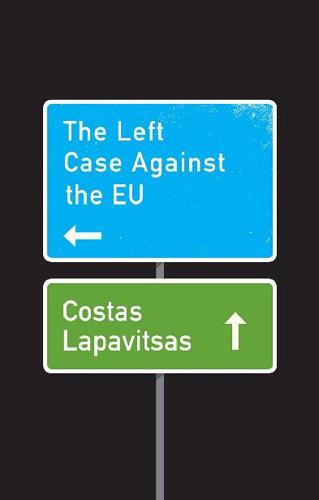
The Left Case Against the EU
by
Costas Lapavitsas
Published 17 Dec 2018
The first is that the EMU has not simply created a common means of exchange among its members. From its inception the euro was designed to serve an international role, not only among EMU member states but also in relation to the world market. It has always been a competitor to the dollar and other global reserve currencies, a form of what Marx called ‘world money’.34 World money is qualitatively different from national monies because it acts as a means of payment and a means of hoarding in the world market, a role that gold has historically played for centuries, and which has been assumed by the US dollar for decades.

Modern China: A Very Short Introduction
by
Rana Mitter
Published 25 Feb 2016
Chinese media and academics are subject to increasing restrictions on what they can discuss, and in the South and East China Seas, Chinese claims on territorial and maritime boundaries are becoming more insistent. Yet there are also signs of forward thinking, although often in directions that the liberal world will find uncomfortable. The power of China’s currency, the yuan (renminbi), will grow if it moves towards full convertibility and becomes a significant global reserve currency. The Chinese government has proposed a new ‘Silk Road’ which may bring China closer to central Asia, Iran, and the Middle East. In addition, the Chinese presence in Latin America and Africa continues to grow. Meanwhile, the Party embeds itself further into all aspects of business and social change, particularly since it has adapted to the technology of the 21st century with some aplomb.
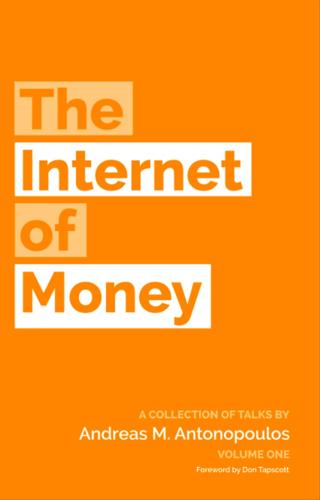
The Internet of Money
by
Andreas M. Antonopoulos
Published 28 Aug 2016
We’re still at the laughing-at-us stage. That’s quite all right, because by the time they get to fighting us, they’ve already lost. This technology just went global with the introduction of more than $2.5 billion from Chinese investors who discovered a counterbalance to the world domination of the global reserve currency of the US dollar. 1.5.1. Altcoins: Currencies for Everyone There are almost 200 currencies of the world, but there’s only one international currency. There are almost 200 currencies controlled by central banks and governments, but there is only one mathematical currency today, and that is bitcoin.
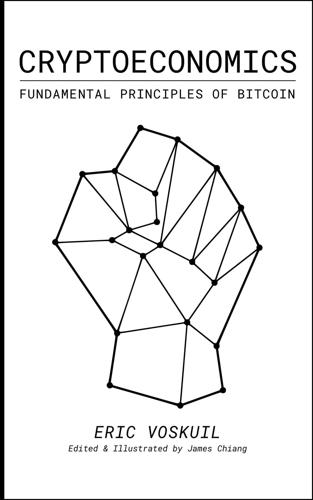
Cryptoeconomics: Fundamental Principles of Bitcoin
by
Eric Voskuil
,
James Chiang
and
Amir Taaki
Published 28 Feb 2020
Price Estimation The potential capitalization , and therefore potential unit price , of Bitcoin is estimated in various ways. A common approach is to imagine Bitcoin replacing all state money [909] or even gross world product [910] . Other approaches that use models of past price [911] to predict future price are economically irrational [912] and therefore not considered here. The presumption of Bitcoin as global reserve currency [913] is dismissed for reasons discussed in Reserve Currency Fallacy [914] . The effects of speculative hoarding on price are not considered, based on the Catallactic [915] disproof of speculation as a determinant of price [916] . Given that Bitcoin is money [917] and not credit, the “money” approach is a more rational starting assumption.
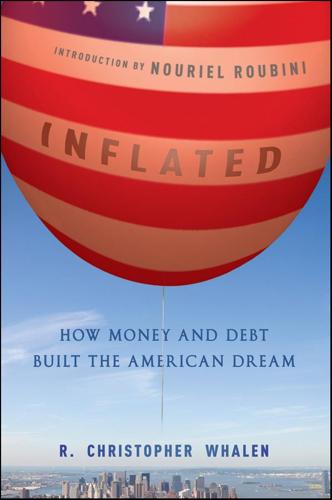
Inflated: How Money and Debt Built the American Dream
by
R. Christopher Whalen
Published 7 Dec 2010
If you compare the response by U.S. leaders to the subprime debt crisis and the response by leaders in Europe and other nations to their debt problems, the divergence in how we define the problems and the solutions is striking. It is often said that no other nation wants the job of being the global reserve currency, but as financial adviser David Kotok reflected, “this is not a job you look for. It is a job that finds you.” “The Greek crisis was a gift,” continued Kotok, who published a bullish book on the EU just before the Greek crisis exploded. He remains unrepentant and is even more bullish. “My view is that the euro will emerge battle tested from the Greek crisis.
…
Experience teaches that so long as American politicians believe that they can borrow to paper over fiscal deficits, they will do so. Thus dealing with the role of the dollar in the global economy ultimately is linked to fiscal and political reform in the United States. Conventional wisdom says that there is no way out of the current situation of having the dollar as the global reserve currency. A study published in June 2010 by the Council on Foreign Relations quoted Luo Ping, a director-general at the China Banking Regulatory Commission, on the issue of the reserve currency status of the dollar: Except for U.S. Treasuries, what can you hold? Gold? You don’t hold Japanese government bonds or United Kingdom bonds.
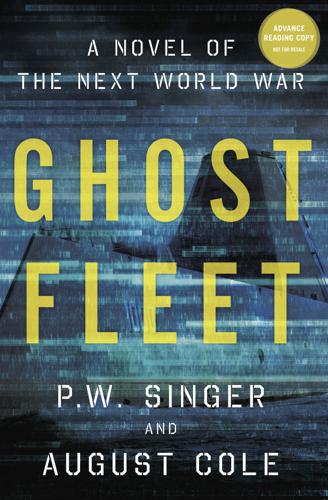
Ghost Fleet: A Novel of the Next World War
by
P. W. Singer
and
August Cole
Published 28 Jun 2015
Put it this way: enjoy yourselves and all this sunshine because your grandkids are still going to be paying the tab.” “They’ll be paying in ramen,” said Lieutenant Gupal, one of the ship’s newest officers. Ramen was slang for RMN, renminbi, the Chinese currency that, along with the euro, had joined the American dollar as the global reserve currency following the dollar’s post-Dhahran crash. “At least we can sail with our own oil now,” said Captain Riley. “When I joined back in the Stone Age, Middle East oil owned the market.” “True enough,” said Simmons. “And shale extraction is coming back at even higher levels than before the moratorium after the New York quake.
…
fips=wotc&trk=p3. 13 ever since Chinese special operations forces: Dean Cheng, “The Chinese People’s Liberation Army and Special Operations,” Special Warfare 25, no. 3 (July–September 2012), accessed March 18, 2014, http://www.dvidshub.net/publication/issues/10629. 14 renminbi, the Chinese currency: Xinhua, “RMB to Be Global Reserve Currency by 2030: Economist,” China Daily, April 9, 2014, accessed August 19, 2014, http://www.chinadaily.com.cn/china/2014-04/09/content_17420923.htm. 14 “sail with our own oil”: Mark Thompson, “U.S. to Become Biggest Oil Producer — IEA,” CNN, November 12, 2012, accessed November 12, 2012, http://money.cnn.com/2012/11/12/news/economy/us-oil-production-energy/index.html?
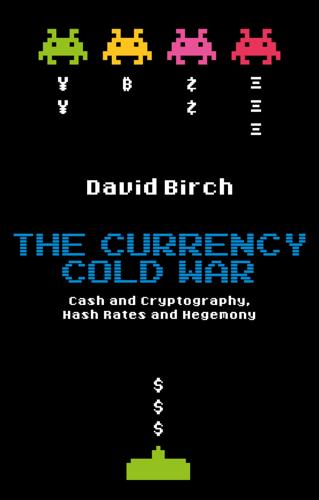
The Currency Cold War: Cash and Cryptography, Hash Rates and Hegemony
by
David G. W. Birch
Published 14 Apr 2020
Tomac, S., and T. Lagodzinski. 2019. Continued evolution in the regulatory framework for virtual currency. Compass 6(4), June. Chartwell Partners. Townsend, E. 2018a. Beyond Blockchain: The Death of the Dollar and the Rise of Digital Currency. Independent. Townsend, E. 2018b. Digital global reserve currency: what would it take? In The Death of the Dollar and the Rise of Digital Currency, pp. 187–194. Independent. Townsend, E. 2018c. Global-scale digital currency. In The Death of the Dollar and the Rise of Digital Currency. Independent. US Department of the Treasury. 2016. Remarks of Secretary Lew on the evolution of sanctions and lessons for the future at the Carnegie Endowment for International Peace.
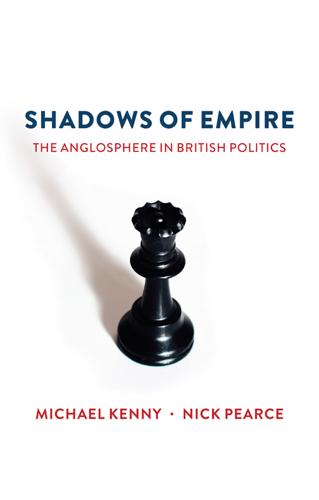
Shadows of Empire: The Anglosphere in British Politics
by
Michael Kenny
and
Nick Pearce
Published 5 Jun 2018
Moving within the circumferences of Churchill's three circles made sense to policy-makers and remained the most viable approach available to them. Only when Britain's worldwide role had become an encumbrance it could no longer afford; when the ‘stop–go’ economic policies of maintaining a global reserve currency and pre-war trade patterns had led to relative economic decline; when the failure to invest in the modernisation of British industry had led to weakening productivity relative to the rest of the advanced capitalist world; and when decolonisation and the gradual break-up of the old Anglo-world had stripped the Commonwealth of any meaningful political or economic unity did Britain's thinking about its place in the world change.
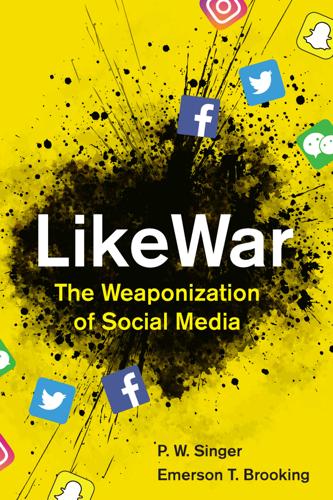
Likewar: The Weaponization of Social Media
by
Peter Warren Singer
and
Emerson T. Brooking
Published 15 Mar 2018
Put it this way: enjoy yourselves and all this sunshine because your grandkids are still going to be paying the tab.” “They’ll be paying in ramen,” said Lieutenant Gupal, one of the ship’s newest officers. Ramen was slang for RMN, renminbi, the Chinese currency19 that, along with the euro, had joined the American dollar as the global reserve currency following the dollar’s post-Dhahran crash. “At least we can sail with our own oil20 now,” said Captain Riley. “When I joined back in the Stone Age, Middle East oil owned the market.” “True enough,” said Simmons. “And shale extraction is coming back at even higher levels than before the moratorium after the New York quake.
…
fips=wotc&trk=p3. 18 ever since Chinese special operations forces: Dean Cheng, “The Chinese People’s Liberation Army and Special Operations,” Special Warfare 25, no. 3 (July–September 2012), accessed March 18, 2014, http://www.dvidshub.net/publication/issues/10629. 19 renminbi, the Chinese currency: Xinhua, “RMB to Be Global Reserve Currency by 2030: Economist,” China Daily, April 9, 2014, accessed August 19, 2014, http://www.chinadaily.com.cn/china/2014-04/09/content_17420923.htm. 20 “sail with our own oil”: Mark Thompson, “U.S. to Become Biggest Oil Producer—IEA,” CNN, November 12, 2012, accessed November 12, 2012, http://money.cnn.com/2012/11/12/news/economy/us-oil-production-energy/index.html?
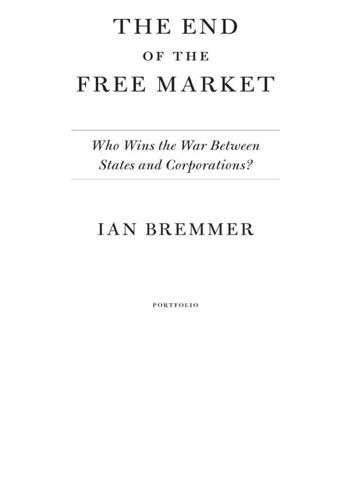
The End of the Free Market: Who Wins the War Between States and Corporations?
by
Ian Bremmer
Published 12 May 2010
The wealthiest and most powerful among the merchant class fought to preserve their state-guaranteed competitive advantages by forming alliances with well-placed bureaucrats, whose role expanded into mutually profitable enforcement of an ever-expanding web of state regulations. Why the preoccupation with gold? There was no obvious alternative. The world had no internationally accepted global reserve currency. National currencies were barely exchangeable. But wherever they traveled, even among the most primitive societies, mercantilists encountered the universal human fascination with precious metals. Generally speaking, Europe’s mercantilists had two methods of increasing their stockpiles: by building a positive trade balance (more gold coming in than going out) and by conquering the lands where new reserves were discovered.
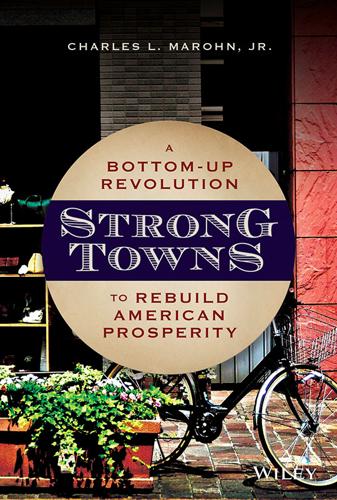
Strong Towns: A Bottom-Up Revolution to Rebuild American Prosperity
by
Charles L. Marohn, Jr.
Published 24 Sep 2019
Our modern development pattern – a continental-scale social experiment – was established during a period of unprecedented abundance after World War II. We were not only the sole economic superpower that wasn’t devastated by war; the biggest players in the world were indebted to us. We held the global reserve currency, we had the greatest amount of easily accessible oil and coal resources, and we had a generation of motivated young people culturally unified by shared hardship and common enemies. All the systems that launched this massive experiment, from the new financing mechanisms to the highway and infrastructure programs, were developed at a unique period of time when we could dream big and accomplish anything.
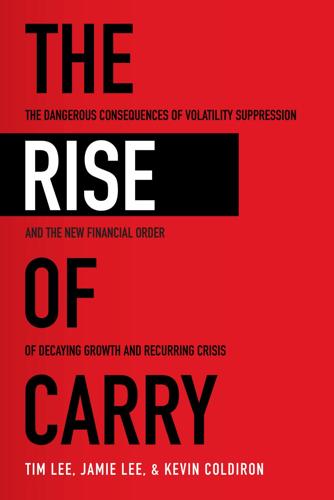
The Rise of Carry: The Dangerous Consequences of Volatility Suppression and the New Financial Order of Decaying Growth and Recurring Crisis
by
Tim Lee
,
Jamie Lee
and
Kevin Coldiron
Published 13 Dec 2019
However, when things do happen, when exchange rates or asset prices move against the carry trader, losses can mount suddenly and substantially. A significant part of this book is devoted to explaining these trades, particularly in the currency and the stock markets. One conclusion is that the greater liquidity and breadth of financial instruments in the US markets, as well as the dollar’s role as the global reserve currency, has placed the US markets, and specifically the S&P 500 index, at the center of the global carry trade. A further purpose of the book is to convey how carry has come to dominate the global business cycle, creating a pattern of long, steady, but unspectacular expansions punctuated by catastrophic crises.
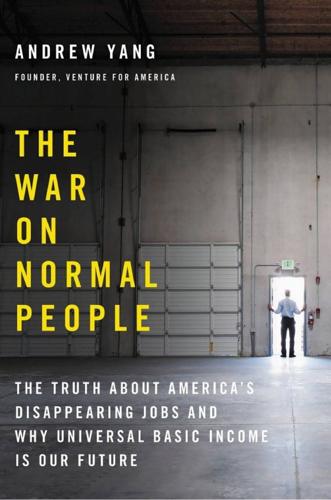
The War on Normal People: The Truth About America's Disappearing Jobs and Why Universal Basic Income Is Our Future
by
Andrew Yang
Published 2 Apr 2018
No one regards that as a waste of money, because the shareholders theoretically are the owners of the company. Are we not, as the citizens of the United States, the owners of this country? As a country, we are easily wealthy enough to manage even a full UBI. Our economy has grown by more than $4 trillion in the past 10 years alone. The U.S. dollar remains the global reserve currency. We are the most technologically advanced society in human history, and increased automation will allow our economy to continue to grow well past its current level. Not only that, but we will get a lot of the money back through new businesses and economic activity, better educational outcomes, improved health and preventative care, better mental health, reduced crime and incarceration, reduced services for homelessness, and many other social benefits.
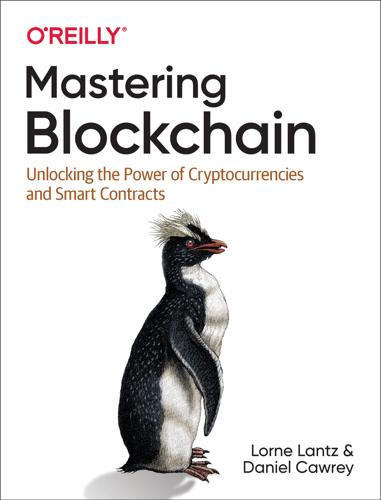
Mastering Blockchain: Unlocking the Power of Cryptocurrencies and Smart Contracts
by
Lorne Lantz
and
Daniel Cawrey
Published 8 Dec 2020
One thing that’s for sure is that Satoshi mined the Genesis block of Bitcoin, so in theory the easiest proof would be to uncover evidence of the identity behind that address. Crypto-Based Stablecoins In the previous chapter, we discussed a few examples of stablecoins, which use blockchain technology to peg a cryptocurrency to another, more stable asset. For the most part, stablecoins are pegged to the US dollar, since it is known as a global reserve currency, but other assets have been used too, including gold, agricultural commodities, and the euro. Many stablecoins are unregulated in the cryptocurrency world, although there are several stablecoin projects that are working with regulators and banks to foster a future where stablecoin assets are a large part of the ecosystem.
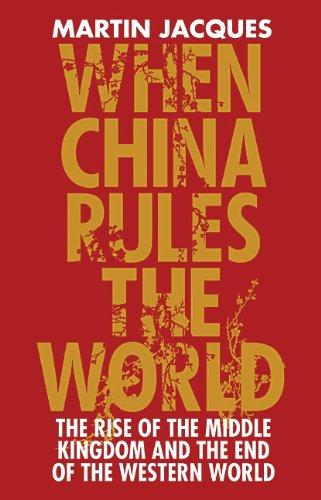
When China Rules the World: The End of the Western World and the Rise of the Middle Kingdom
by
Martin Jacques
Published 12 Nov 2009
As a harbinger of the decline, and ultimate demise, of the present US-DOMINATED system, there is the prospect of the emergence over the next decade of the renminbi as a reserve currency, which would mean it could be used for trade and be held by countries as part of their reserves.180 Having acquired full convertibility against other currencies, it could rapidly assume a very important role outside China, acting as the de facto reserve currency in East Asia, marginalizing the yen, and challenging the position of the euro and ultimately the dollar as global reserve currencies.181 It is clear from the American financial meltdown in 2008 that the days when the US economy could sustain the global reserve currency are now numbered. The present international system is designed primarily to represent and promote American interests. As China’s power grows, together with that of other outsiders like India, the United States will be obliged to adapt the system and its institutions to accommodate their demands and aspirations, but, as demonstrated by the slowness of reform in the IMF and even the G8, there is great reluctance on the part of both the US and Europe.182 Fundamental to this has been the desire to retain these institutions for the promotion of Western interests and values.
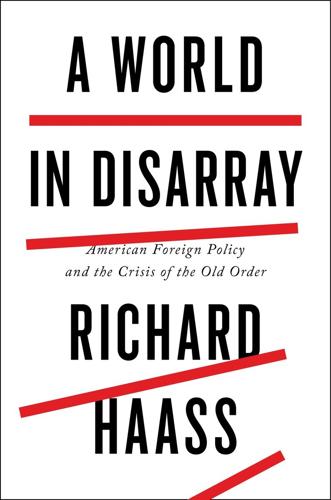
A World in Disarray: American Foreign Policy and the Crisis of the Old Order
by
Richard Haass
Published 10 Jan 2017
To some extent this U.S. deficit was necessary, as it provided liquidity to the world; at the same time, it raised questions as to the future value of the dollar. Indeed, no progress was made on the tension arising from the U.S. dollar’s status as both the national currency of the United States and the global reserve currency, that is, the currency used for most international transactions, which required most countries to keep a store of it on hand. The U.S. Federal Reserve thus acted as both the country’s and the world’s central bank; the problem in the eyes of many resulted from the fact that the world had no oversight or control over the U.S. central bank or U.S. economic policy more broadly.
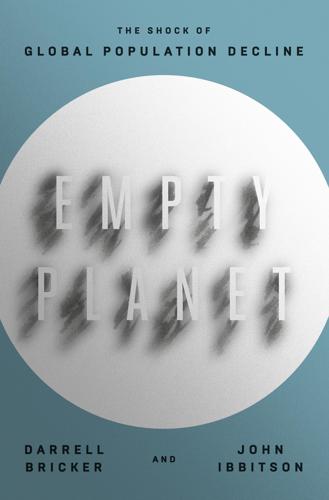
Empty Planet: The Shock of Global Population Decline
by
Darrell Bricker
and
John Ibbitson
Published 5 Feb 2019
No wonder the National Intelligence Council concluded recently that the “unipolar moment is over and Pax Americana—the era of American ascendancy in international politics that began in 1945—is fast winding down.”319 Perhaps. But there is a whole lot of “on the other hand.” However large the Chinese economy, the average American makes eight times their Chinese counterpart; the American dollar remains the unchallenged global reserve currency; despite massive new investments in China’s military, the U.S. outspends its rival in defense three to one, with a global-power-defining eight hundred military bases in fifty countries around the world; ten of the world’s twenty highest-ranked universities are located in the United States;320 eight of the world’s nine largest high-tech companies are U.S.
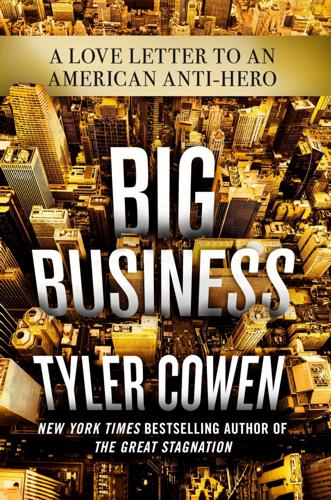
Big Business: A Love Letter to an American Anti-Hero
by
Tyler Cowen
Published 8 Apr 2019
Furthermore, the fall of Britain as a world power and center of empire coincides pretty directly with the country losing its capital market heft and having to approach the International Monetary Fund to borrow money in the 1970s. The United States, by being a major financial center with a global reserve currency, can make (relatively) credible commitments abroad. When need be, America can finance a significant budget deficit; you may recall that when President Reagan “spent the Soviet Union into the ground” on military matters, he did it, for better or worse, largely with borrowed money. Because of the central financial role of New York City and other parts of the country, America has significantly more economic independence than other countries, and that translates into greater international independence.
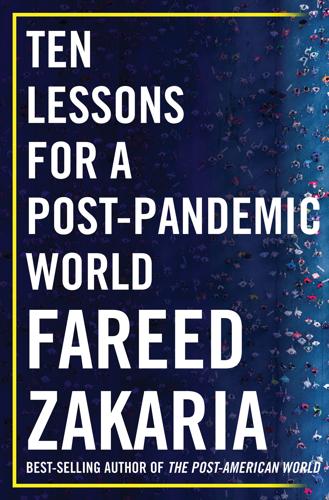
Ten Lessons for a Post-Pandemic World
by
Fareed Zakaria
Published 5 Oct 2020
In them, he advocated a new kind of diplomacy to ensure peace among the great powers, a novel approach based on restraint, the “equal rights of all nations,” and “the love of freedom.” It wasn’t just words. Britain played a crucial role protecting global sea-lanes, while the British pound sterling served as the global reserve currency. The UK’s naval hegemony preserved a modicum of international stability. To be sure, this era still saw intense economic competition, rising powers, domestic revolutions at home, and aggressive imperialism abroad. Gladstone’s “love of freedom” was selectively applied: Britain itself was enthusiastically imperialistic, crushing rebellions from India to Ireland.
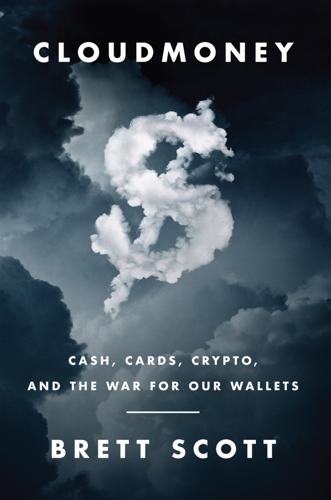
Cloudmoney: Cash, Cards, Crypto, and the War for Our Wallets
by
Brett Scott
Published 4 Jul 2022
They are tied together internationally via messaging systems like SWIFT, card networks run by Visa, and payments clubs like SEPA. Crucially, within that international system there is a hierarchy of cloud-cities: smaller national systems often route relationships between each other through the US banking system, with the Federal Reserve on top, which is why the US dollar is referred to as a global reserve currency. We send millions of payments requests up to this structure, but our bustling interactions are far from our national apex, and even further from the international apex. From the ground level, those institutions seem distant and abstract, but central banks’ attempts to expand or contract the money supply are an attempt to exert indirect influence over us, via the commercial banks (this certainly is indirect, because central banks have limited control over the overall money supply, given that it is significantly made up of commercial bank chips).
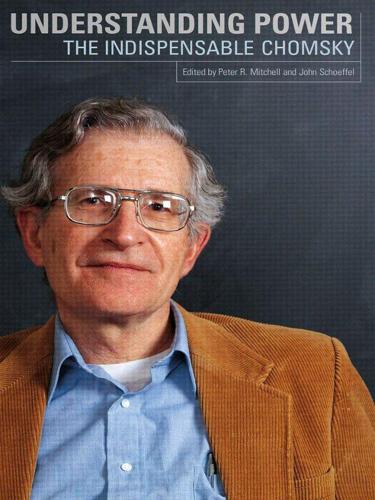
Understanding Power
by
Noam Chomsky
Published 26 Jul 2010
See, by 1971 the Vietnam War had already badly weakened the United States economically relative to its industrial rivals, and one of the ways the Nixon administration reacted to that was by simply tearing apart the Bretton Woods system, which had been set up to organize the world economy after World War II. The Bretton Woods system had made the United States the world’s banker, basically—it had established the U.S. dollar as a global reserve currency fixed to gold, and it imposed conditions about no import quotas, and so on. And Nixon just tore the whole thing to shreds: he went off the gold standard, he stopped the convertibility of the dollar, he raised import duties. No other country would have had the power to do that, but Nixon did it, and that made him a lot of powerful enemies—because multinational corporations and international banks relied on that system, and they did not like it being broken down.
…
The first had to do with the breakdown of the post-war world economic system, which occurred in the early 1970s. See, during the Second World War, the United States basically reorganized the world economic system and made itself into sort of the “global banker” [at the Bretton Woods United Nations Monetary and Financial Conference of 1944]—so, the U.S. dollar became the global reserve currency, it was fixed to gold, and other countries’ currencies were fixed relative to the dollar. And that system was pretty much what lay behind the very substantial economic growth rate that followed in the 1950s and Sixties. But by the 1970s, the “Bretton Woods” system had become unsustainable: the U.S. no longer was strong enough economically to remain the world’s banker, primarily because of the huge costs of financing the Vietnam War.
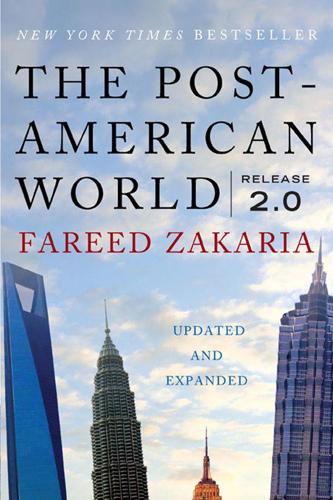
The Post-American World: Release 2.0
by
Fareed Zakaria
Published 1 Jan 2008
For all its abuses of power, the United States has been the creator and sustainer of the current order of open trade and democratic government—an order that has been benign and beneficial for the vast majority of humankind. As things change, and as America’s role changes, that order could begin to fracture. The collapse of the dollar—to the point where there was no global reserve currency—would be a problem for the world just as much as for America. And solving common problems in an era of diffusion and decentralization could turn out to be far more difficult without a superpower. Some Americans have become acutely conscious of the changing world. Business leaders are increasingly aware of the shifts taking place around the world and responding to them rapidly and unsentimentally.

The Age of Stagnation: Why Perpetual Growth Is Unattainable and the Global Economy Is in Peril
by
Satyajit Das
Published 9 Feb 2016
The actions have made it difficult for immigrants or foreign workers to remit funds to the developing world, which provide critical support for families and communities. Foreign nations increasingly resent the extraordinary power enjoyed by the US through the position of the dollar as the global reserve currency, central to international finance, trade, and payments. In response, non-Americans are seeking to reduce the dominance of the US dollar. Retaliatory prosecutions of American businesses are possible. Negotiation of closer trade and financial relationships will be detrimentally affected. In 2015, the EU commenced action against Google relating to alleged abuse of its dominance of Internet search engines.
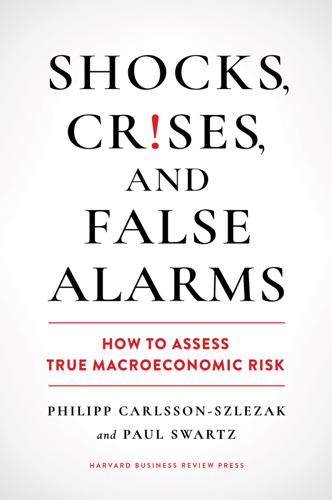
Shocks, Crises, and False Alarms: How to Assess True Macroeconomic Risk
by
Philipp Carlsson-Szlezak
and
Paul Swartz
Published 8 Jul 2024
In part 3, “Global Economy: From Convergence Boom to Divergence Gloom,” we trace the rise and fall of the convergence bubble of the past 30 years (chapter 17) and analyze why geopolitical risk rarely translates linearly into macroeconomic impact and how to approach this challenge (chapter 18). We then consider the economic impact of changing trade patterns (chapter 19). Last, we explain why we consider predictions of the end of the dollar’s status as the global reserve currency a classic example of a false alarm (chapter 20). * * * We close the book not with a classic synthesis—actionable conclusions on how to analyze risk are located within the chapters—but by articulating our strategic narrative of the economy. In chapter 21, looking across the real, financial, and geopolitical arenas, we argue that the remainder of the 2020s will still feature a good-macro system that underpins a favorable business environment.
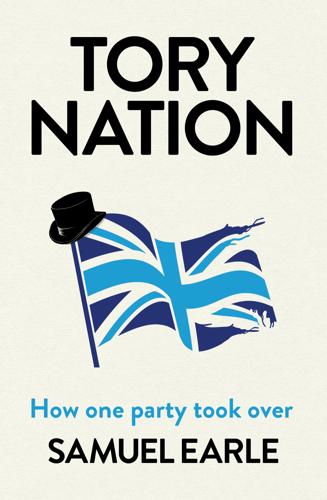
Tory Nation: The Dark Legacy of the World's Most Successful Political Party
by
Samuel Earle
Published 3 May 2023
Throughout much of the nineteenth century and into the twentieth, Britain could credibly claim to be most powerful country in the world. Not only did it boast the most feared military force and the largest empire globally, but the world seemed to revolve around it: the British pound was the global reserve currency, and the time was (and still is) set according to a master clock at the Royal Observatory, Greenwich. All the Conservatives needed to do was make the nation’s imposing stature felt among the masses. Disraeli believed that popularising the monarchy, turning it into a national spectacle, would do the trick, embodying the grandeur of Britain’s achievements and reputation in a single symbol.
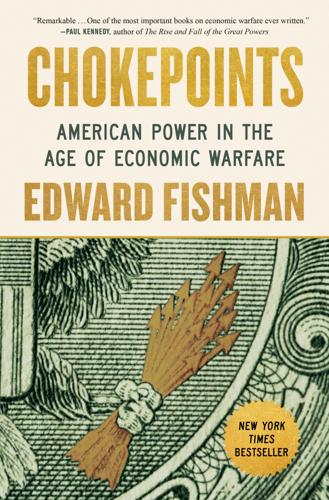
Chokepoints: American Power in the Age of Economic Warfare
by
Edward Fishman
Published 25 Feb 2025
Just about every major transaction in the global economy relies on this infrastructure, no matter which countries or companies are involved. If you do any business outside your home country, you use this infrastructure, whether you’re aware of it or not. At the heart of this infrastructure is a currency: the U.S. dollar. It has rightly become commonplace to think of the dollar as the global reserve currency and U.S. Treasuries as the safest asset for investors worldwide, attracting everyone from farmers in the Midwest to the Chinese Communist Party. The dollar is the world’s preeminent store of value. Central banks hold 60 percent of all foreign exchange reserves in dollars, three times the share of the second-place euro and more than twenty times that of the Chinese renminbi.
…
But each time, they balked at the potential ramifications. Targeting a sovereign country’s central bank, some Treasury officials feared, was a line the United States should never cross. Doing so would show the world that Washington was not averse to politicizing the dollar’s status as the global reserve currency, which could undermine that very status along with America’s reputation as the steward of the international financial system. More immediately, sanctions on Iran’s central bank could make it difficult or impossible for importers to pay for Iranian oil, causing large amounts of that oil to disappear from world markets.
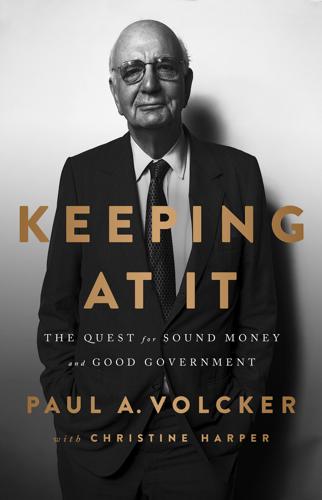
Keeping at It: The Quest for Sound Money and Good Government
by
Paul Volcker
and
Christine Harper
Published 30 Oct 2018
His answer was that, yes, he could accept that result if it was the consensus of the group. That “temporary” arrangement essentially remains in place fifty years later. The world has been operating without an agreed monetary standard, with varying degrees of “floating” and “fixing,” and with the dollar still the global reserve currency. As I look back, the coda for the Bretton Woods composition was silently expressed at a private lunch in Paris one week later. Arthur Burns pleaded with George Shultz once again to work toward restoring a fixed exchange rate for the dollar. My instinctive comment, given that the dollar couldn’t possibly be stabilized unless we tackled our inflation problem, was “Then, you’d better get back to Washington and tighten money.”
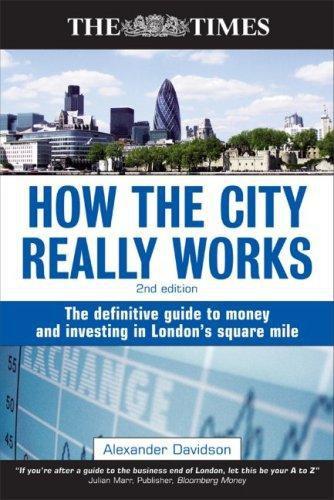
How the City Really Works: The Definitive Guide to Money and Investing in London's Square Mile
by
Alexander Davidson
Published 1 Apr 2008
Foreign exchange, like derivatives, is used for hedging. There are 170 currencies in use worldwide, but most are not very liquid. The US dollar is by far the most widely traded currency, not least because the United States has the biggest and most liquid bond markets, and commodities are priced in dollars. The US dollar is the global reserve currency and an invoice currency in many contracts. However, many believe that, in 10 years’ time, the dollar will no longer have this status. The euro, introduced at the start of 1999, initially in non-physical form, has enabled eurozone member countries to trade with each other directly without the need to exchange their currencies.
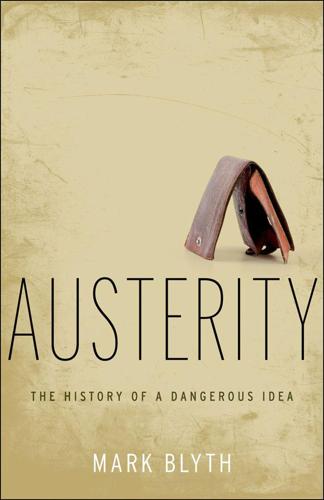
Austerity: The History of a Dangerous Idea
by
Mark Blyth
Published 24 Apr 2013
If the United States ever gets to the point that it cannot roll over its debt, the supposed big fear, we can safely assume that all other sovereign debt alternatives are already dead. The United States prints the reserve asset (the dollar) that all other countries need to earn in order to conduct international trade. No other country gets to do this. Regardless of ratings agency downgrades, the US dollar is still the global reserve currency, and the fact that there are no credible alternatives (the Europeans are busy self-immolating their alternative, the euro) tilts the balance even more in favor of the United States. US debt is still the most attractive horse in the glue factory, period. Second, we tend to forget that budget deficits (the increase in new debt accrued—the short-term worry that piles up and becomes “the Debt”) follow the business cycle: they are cyclical, not secular.
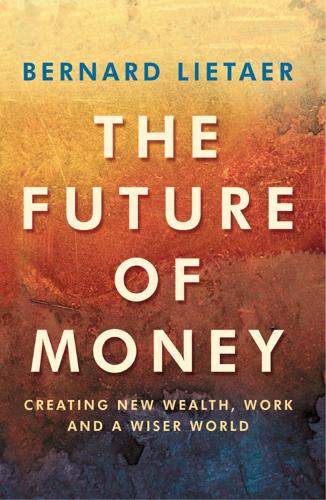
The Future of Money
by
Bernard Lietaer
Published 28 Apr 2013
Bonds: Financial instrument sold by a borrower against periodic payment of interest and of the principal at maturity. Bretton Woods: Township in New Hampshire where the Bretton Woods Agreement was finalised in 1945 after negotiations mainly between the British and the US. The system agreed upon has also been called the dollar gold equivalence standard, because it gave the status of official global reserve currency to the US$, on condition that the US guaranteed the convertibility of dollars into gold on demand of other central banks, at a fixed rate of 535 per ounce. In August 1971, President Nixon unilaterally reneged on that latter clause by 'closing the gold window' when France and the UK requested such redemptions.
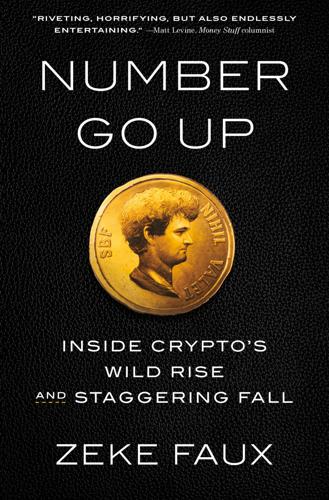
Number Go Up: Inside Crypto's Wild Rise and Staggering Fall
by
Zeke Faux
Published 11 Sep 2023
“The U.S. will come after Tether in due time,” Budovsky wrote me in an email from a Florida prison. “Almost feel sorry for them.” * * * — WHEN I SPOKE with Pierce on the phone, I asked him the central question: Was Tether actually backed up by real money? He assured me it was. He said Tether was preserving the dollar’s status as a global reserve currency. “If it were not for Tether, America would likely fall,” he said. “Tether in many ways is the hope of America.” But as he droned on, I realized Pierce had little information to offer about the location of Tether’s funds. My mind started to wander. In The Mighty Ducks, the young Pierce misses a crucial penalty shot in a pee-wee hockey game, and that failure haunts the adult version of his character decades later.

What's Next?: Unconventional Wisdom on the Future of the World Economy
by
David Hale
and
Lyric Hughes Hale
Published 23 May 2011
The Labor Party dismissed Prime Minister Kevin Rudd in June 2010 over disappointment about his environmental policies, and then went on to lose a parliamentary election in late August. Most of the G-20’s political leaders were envious of Kevin Rudd’s economic record, but he went down in history as the first political leader to lose office over the issue of climate change. John Greenwood offers an optimistic view of the dollar’s prospects of continuing as a global reserve currency. He reviews the process by which the dollar displaced the British pound as the dominant global currency during the early decades of the twentieth century. He then analyzes the prerequisites to be a reserve currency in the modern era. They are that the currency be widely available outside its home economy, that it be fully convertible, that it be supported by a large economy, and that it have a developed financial system.
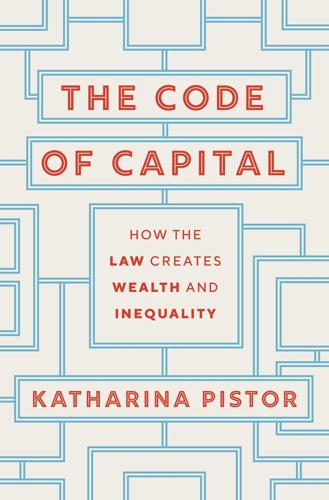
The Code of Capital: How the Law Creates Wealth and Inequality
by
Katharina Pistor
Published 27 May 2019
Becker, “Crime and Punishment: An Economic Approach,” Journal of Political Economy 76, no. 2 (1968):169–217. 63. Hayek, Law, Legislation, and Liberty as well as Hadfield and Weingast, “What Is Law?” 64. This phrase has been coined by French president Giscard D’Estaing in reference to the status of the US dollar as the global reserve currency and has since been used as the title of a book by Barry Eichengreen, but seems apt in this context. 65. This is the assumption of the efficient capital market hypothesis. See Eugene Fama, “Efficient Capital Markets: A Review of Theory and Empirical Work,” Journal of Finance 25, no. 2 (1970):383–417. 66.
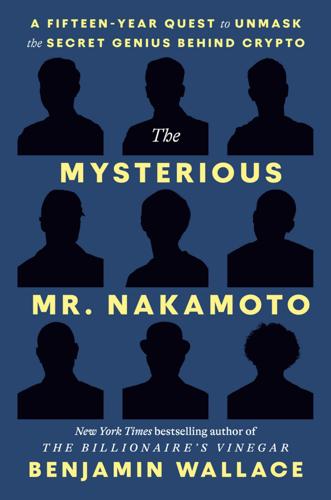
The Mysterious Mr. Nakamoto: A Fifteen-Year Quest to Unmask the Secret Genius Behind Crypto
by
Benjamin Wallace
Published 18 Mar 2025
As soon as you had some bitcoin, you wanted to help the system, whether by mining bitcoin, or using it, or promoting it, or working on the code, so that your bitcoin would be worth more tomorrow than it was yesterday. As the price went up, Gavin was being materially rewarded in real time. His involvement was “enlightened self-interest.” Gavin thought bitcoin could become a major world currency and in time possibly even replace the dollar as the global reserve currency. Although Bitcoin was an open-source project, an it-takes-a-village group effort notionally immune to individual agendas, someone needed to be in charge, and for the first twenty months that had been Satoshi Nakamoto. He would release code, other developers would suggest patches, and he would integrate the ones he liked.
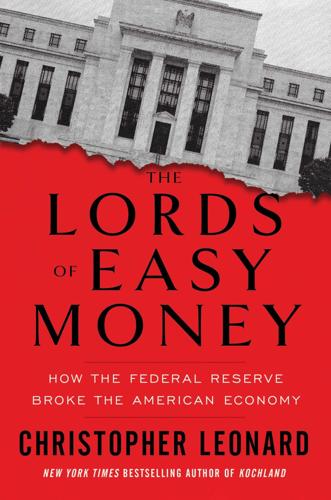
The Lords of Easy Money: How the Federal Reserve Broke the American Economy
by
Christopher Leonard
Published 11 Jan 2022
RESERVE ACCOUNT: The account that banks hold inside the Federal Reserve. The reserve accounts discussed in this book tend to be those of the primary dealers, who can sell assets to the Fed and collect new dollars in their reserve accounts. RESERVE CURRENCY: The U.S. dollar has been the global reserve currency since the end of World War II, meaning that it is the currency that nations and national banks use to conduct international transactions with one another. This is what gives the dollar its supreme place in the global economic system. In times of stress, everyone needs dollars because so much debt and trade is denominated in dollars.
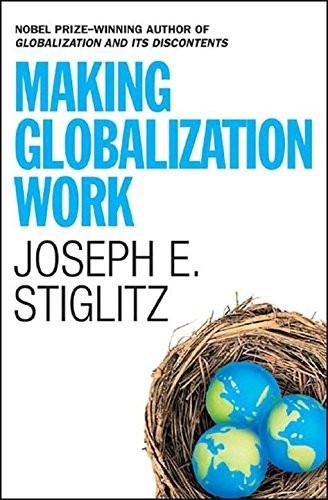
Making Globalization Work
by
Joseph E. Stiglitz
Published 16 Sep 2006
The international community has already recognized that it can provide the kind of liquidity that Keynes envisioned, in the form of special drawing rights (SDRs). SDRs are simply a kind of international money that the IMF is allowed to create.20 The global greenbacks proposal simply extends the concept. I refer to the new money as global greenbacks to emphasize that what is being created is a new global reserve currency, and to avoid confusion with the existing SDR system, which has two problems: SDRs are only created episodically, while global greenbacks would be created every year; and SDRs are given largely to the wealthiest countries of the world, while global greenbacks would be used not only to solve the world’s financial problems but also to combat some of the deeper problems facing the world today, such as global poverty and environmental degradation.21 Here is a simplified description of how the system might work.

The Future Is Asian
by
Parag Khanna
Published 5 Feb 2019
From Underwriting the United States to Financing Asia Foreign capital from the United States and Europe was a critical driver of Asia’s economic ascent during the first and second waves of East Asian growth, from Japan’s economic miracle to China’s breakneck industrialization. East Asians then lent their prodigious savings to the United States and Europe in the form of buying their Treasury bonds. Asian capital thus became a driver of the US dollar’s stability and status as a global reserve currency. China and Japan remain the two largest foreign holders of US Treasuries, with more than $1 trillion each, and Hong Kong and Taiwan also rank in the top ten with nearly $200 billion each in US dollar reserves. All of the top ten foreign holders of US dollar reserves—including Saudi Arabia, South Korea, India, and Singapore—are Asian economies, collectively holding more than 55 percent of US Treasuries.19 Furthermore, Asian foreign investment in the US economy, led by Japan, totals more than $1 trillion (compared to Europe’s $2 trillion FDI in the United States), especially in industries such as energy, manufacturing, and real estate.
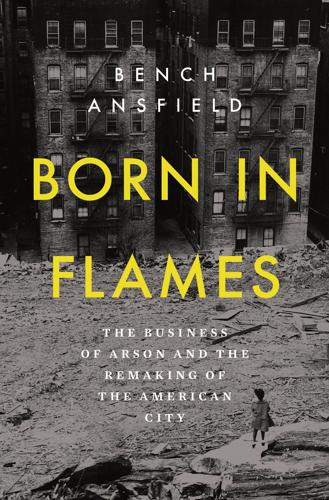
Born in Flames
by
Bench Ansfield
Published 15 Aug 2025
But during the late 1960s, too many U.S. dollars were accumulating overseas due a host of factors: Vietnam War spending, an increase of imports relative to exports, the expansion of U.S. multinational corporations abroad, and the eagerness of U.S. banks to enter the London-based Eurodollar market, where they could benefit from higher interest rates than permitted by the Federal Reserve. Beginning in 1968, the gold-backed dollar endured crisis after crisis. In response, President Richard Nixon allowed the Bretton Woods system to collapse between 1971 and 1973, inaugurating our current era of floating exchange rates. The U.S. dollar remains the global reserve currency, but it is no longer convertible into gold.13 The fall of Bretton Woods made possible financialization in the United States and across the globe. Abandoning the gold standard “introduced both flexibility and volatility,” writes the scholar of neoliberalism David Harvey. Domestically, that meant the removal of a significant restraint on federal budgets, enabling the deficit spending of the Reagan era and beyond.

The Shifts and the Shocks: What We've Learned--And Have Still to Learn--From the Financial Crisis
by
Martin Wolf
Published 24 Nov 2015
The idea was recently presented by a panel of experts commissioned by the UN Secretary General: [T]he idea of an international reserve currency issued by a supranational bank is not new. It was broached more than seventy-five years ago by John Maynard Keynes in his 1930 Treatise on Money, and refined in his Bretton Woods proposals for an International Clearing Union. There currently exist a number of alternative proposals for a new global reserve currency, for how the system might be administered, how the emissions of the new currency might be allocated, and how the transition to the new system might be managed. Considerable international discussion will be required for the international community to decide the precise arrangements. However, this is an idea whose time has come.49 Needless to say, the US will oppose this idea.
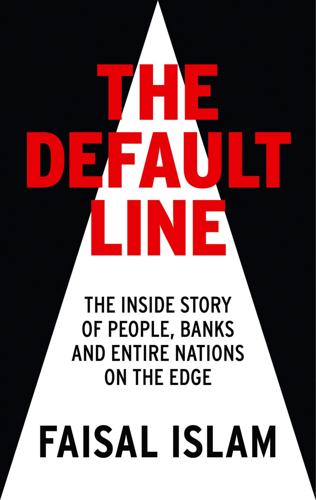
The Default Line: The Inside Story of People, Banks and Entire Nations on the Edge
by
Faisal Islam
Published 28 Aug 2013
. – those high priests of Western globalisation – calculate that there is a $20 trillion investment shortfall in infrastructure around the world, as Western countries have drastically slashed their investment budgets. Leading Chinese officials such as Justin Lin point the finger of blame for this, and for the imbalances generally, firmly at the USA. There are three reasons, the Chinese argue: lax regulation of Wall Street, super-low interest rates from 2001, and the role of the dollar as the global reserve currency. China, they point out, has trade deficits with other East Asian countries. Over the past twenty-five years, China has simply replaced Japan as the main contributor to the US trade deficit. As much as 60 per cent of China’s exports are made by foreign-owned companies, many from the USA. The iPad and iPhone are the most famous US-invented contributors to the USA–China trade deficit.
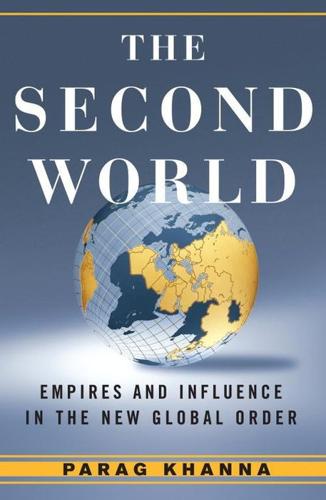
Second World: Empires and Influence in the New Global Order
by
Parag Khanna
Published 4 Mar 2008
Jeane Kirkpatrick, American ambassador to the UN during the 1980s, justified supporting autocrats because such regimes did not seek to reinvent society (as totalitarian systems do). See Kirkpatrick, “Dictatorships and Double-Standards,” Commentary, November 1979. 18. Though control over the global money supply is a key vehicle of exporting influence, the paramount status of the U.S. dollar as a global reserve currency is not coterminous with American monetary dominance when currencies are denationalized as they are today. See Benjamin J. Cohen, “The Geopolitics of Currencies and the Future of the International System,” University of California, Santa Barbara, Global and International Studies Program, Paper no. 10, 2003.
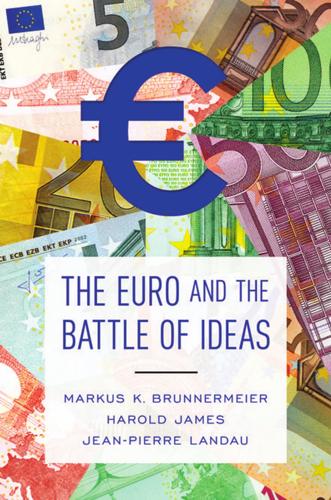
The Euro and the Battle of Ideas
by
Markus K. Brunnermeier
,
Harold James
and
Jean-Pierre Landau
Published 3 Aug 2016
Global Financial System and Imbalances The US tradition thought of the international monetary system as fundamentally a given, although Americans wanted other countries, in particular surplus countries, to take on more of the task of adjustment in the existing international monetary system. In France, by contrast, there was a long-standing suspicion of the US role as issuer of the global reserve currency (that went back to General de Gaulle’s famous criticism of the US dollar). Consequently, French leaders wished that Europe could create a currency that would be more actively managed and supplant the United States’ long-lived exorbitant privilege. The US and UK view linked the inadequate European fiscal response to a long-standing debate about global financial imbalances, in which the United States had long worried about the distortions imposed on the world economy by countries running persistent current account surpluses.
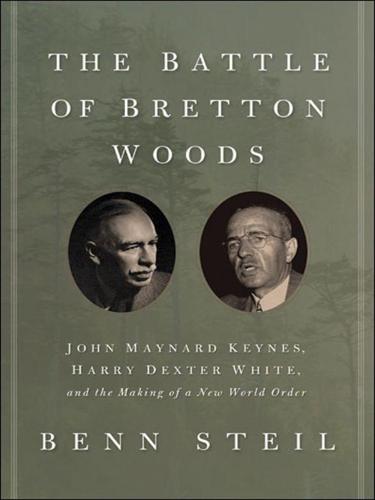
The Battle of Bretton Woods: John Maynard Keynes, Harry Dexter White, and the Making of a New World Order
by
Benn Steil
Published 14 May 2013
He called on the IMF to take the lead in boosting the all-but-forgotten SDR—to make it into a true “super-sovereign reserve currency,” using the model of Keynes’s bancor.37 Xinhua, after blasting the United States for its “debt addiction” in 2011, repeated Zhou’s call for a “new, stable, and secured global reserve currency.”38 China, though a huge creditor of the United States, is, unlike the United States in the 1940s, in no position to orchestrate a Bretton Woods–type refashioning of the global monetary architecture. The United States today is hardly the supplicant Britain was in the 1940s. Britain had been bankrupted by two world wars; it could not pay for vital imports without foreign support in the form of dollars or gold.
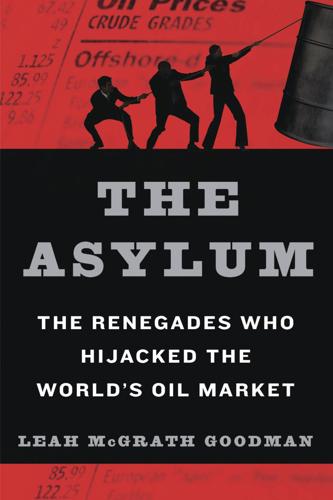
The Asylum: The Renegades Who Hijacked the World's Oil Market
by
Leah McGrath Goodman
Published 15 Feb 2011
Believing that this might be evidence of a possible oil drought in the future, many nations had begun to aggressively stockpile petroleum supplies, which just pushed prices up further. With the war in Iraq plodding on interminably, the credit crisis still smoldering, and an astronomical national deficit putting a drag on the U.S. dollar, oil itself was threatening to replace the greenback as the new global reserve currency—which, again, only increased energy prices. The dollar was hardly worth the paper it was printed on, some Wall Street traders were saying, but crude oil was something of intrinsic value. The world’s oil dependence had brought incalculable pain to the average consumer barely able to keep up with spiraling prices.

Extreme Money: Masters of the Universe and the Cult of Risk
by
Satyajit Das
Published 14 Oct 2011
Its central problem of depression-prevention has been solved, for all practical purposes, and has been solved for many decades.”24 Gordon Brown boasted that under New Labour’s stewardship the boom-bust cycles of the UK economy had been banished. As the global economy slid into crisis, economists and analysts contemplated the D-word that dare not say its name—depression. Terrified of losing money on their vast holdings of U.S. dollars, the Chinese resuscitated Keynes’ proposal for a global reserve currency—the bancor. Dead economists were resurrected in support of political positions. Upsurge in government intervention and massive spending to stimulate demand marked the return of Keynesian economics. In 1996 Lucas told a journalist: “One cannot find good under-forty economists who identify themselves as Keynesian...people don’t take Keynesian theorizing seriously anymore: the audience start to whisper and giggle to one another.”25 After a period when free markets, the Chicago School and Friedman’s ideas dominated, Keynes was back in vogue.

The Long Game: China's Grand Strategy to Displace American Order
by
Rush Doshi
Published 24 Jun 2021
C4ISR architecture in the face of attack might be the single most effective step the United States can take to strengthen its conventional deterrent.”57 Economic Building •Maintain Dollar Dominance amid Challenges from China and New Technology: The dollar’s status as the reserve currency is the backbone of US global hegemony, and it makes it easier for the United States to finance deficit spending, monitor cross-border financial transactions, and implement financial sanctions. The United States might constitute only a quarter of global GDP, but the dollar is 60 percent of global reserve currencies—an advantage amplified by the fact that the United States is open, retains deep and liquid financial markets, and possesses a large and diversified economy. The dollar’s success has brought complications: the United States suffers from a dollar-driven variant of “Dutch Disease,” where reliance on a particular export can cause deindustrialization if institutions cannot properly manage the windfall.
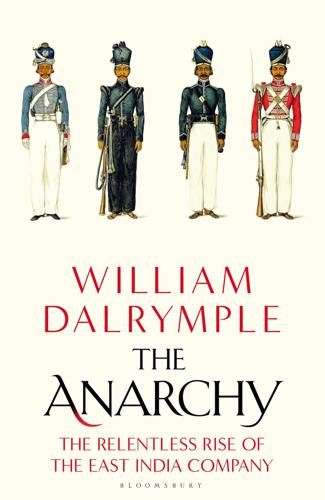
The Anarchy: The Relentless Rise of the East India Company
by
William Dalrymple
Published 9 Sep 2019
Its annual spending within Britain alone – around £8.5 millionj – equalled about a quarter of total British government annual expenditure.171 No wonder the Company now referred to itself as ‘the grandest society of merchants in the Universe’. Its armies were larger than those of almost all nation states and its power now encircled the globe; indeed, its shares were by now a kind of global reserve currency. As Burke wrote: ‘The Constitution of the Company began in commerce and ended in Empire;’ or rather, as one of its directors admitted, ‘an empire within an empire’.172 Nevertheless, for all its vast resources, to finance his six years of incessant warfare Wellesley had come close to bankrupting the Company, hugely increasing its annual deficits to around £2 millionk a year.
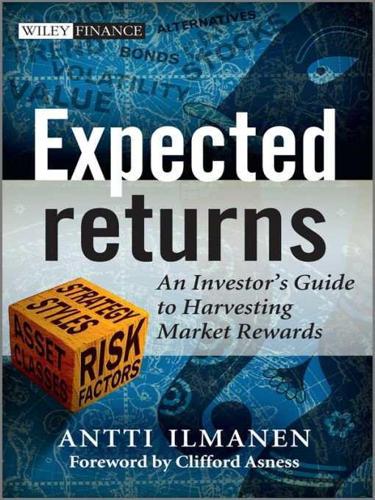
Expected Returns: An Investor's Guide to Harvesting Market Rewards
by
Antti Ilmanen
Published 4 Apr 2011
Yet, many of these statistical relations are weak and are hardly stable over time or across countries. I will not discuss either theories or empirical evidence on exchange rate determination further in this book, nor will I cover the role of global and local risk factors in largely integrated world markets, prospects for dollar, or alternatives to the dollar as global reserve currencies. “Timing” the carry strategy with ex ante opportunity size, seasonals, and various conditioners Ex ante opportunity If carry were the only source of expected return, the evolution of ex ante carry opportunity (signal strength) could be measured by the dispersion of deposit rates or of carry-to-volatility ratios across G10 markets.
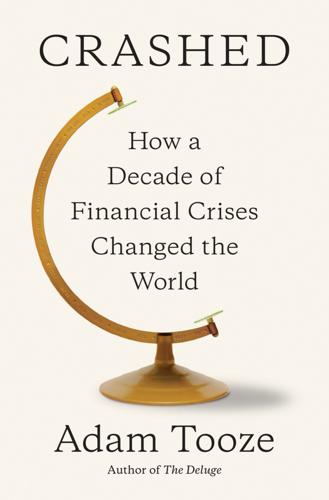
Crashed: How a Decade of Financial Crises Changed the World
by
Adam Tooze
Published 31 Jul 2018
With a week to go to the G20, on March 23 the Chinese central bank chairman, Zhou Xiaochuan, surprised the world by launching his own call for a new Bretton Woods.33 The Chinese had been at the original meeting in 1944 and they knew their economic history.34 As far as Zhou was concerned, it was time to revisit the fundamental decisions made in 1944. It was thanks to America’s overweening power at the end of World War II that the dollar had been established as the global reserve currency. Ever since, America had been free to spend at will while accumulating huge deficits. To ensure true stability, as John Maynard Keynes had argued for the British delegation in 1944, the world needed a global monetary unit independent of any national currency. The obvious candidate, Zhou suggested, was the IMF’s unit of accounting and credit, the Special Drawing Rights (SDR).